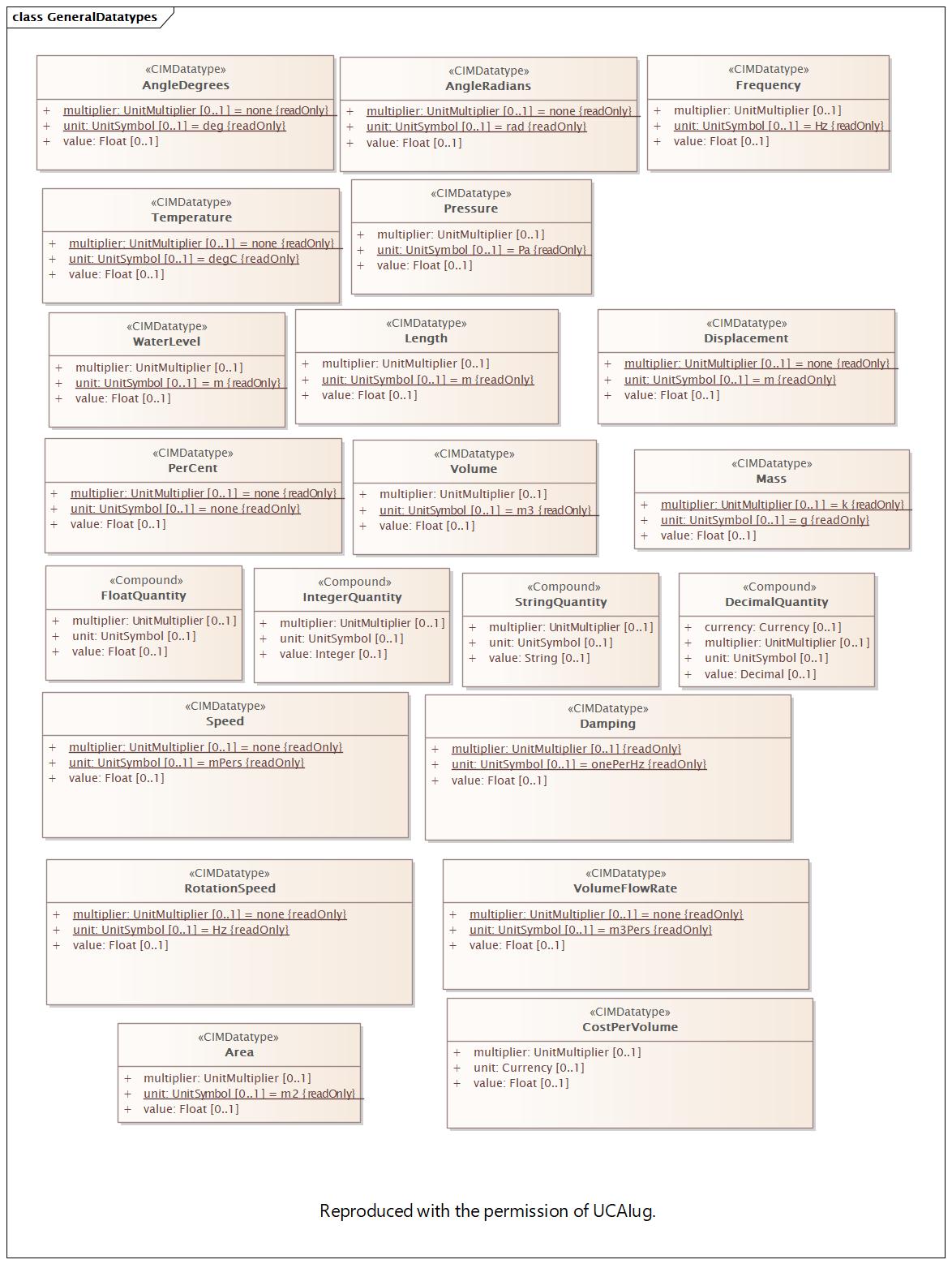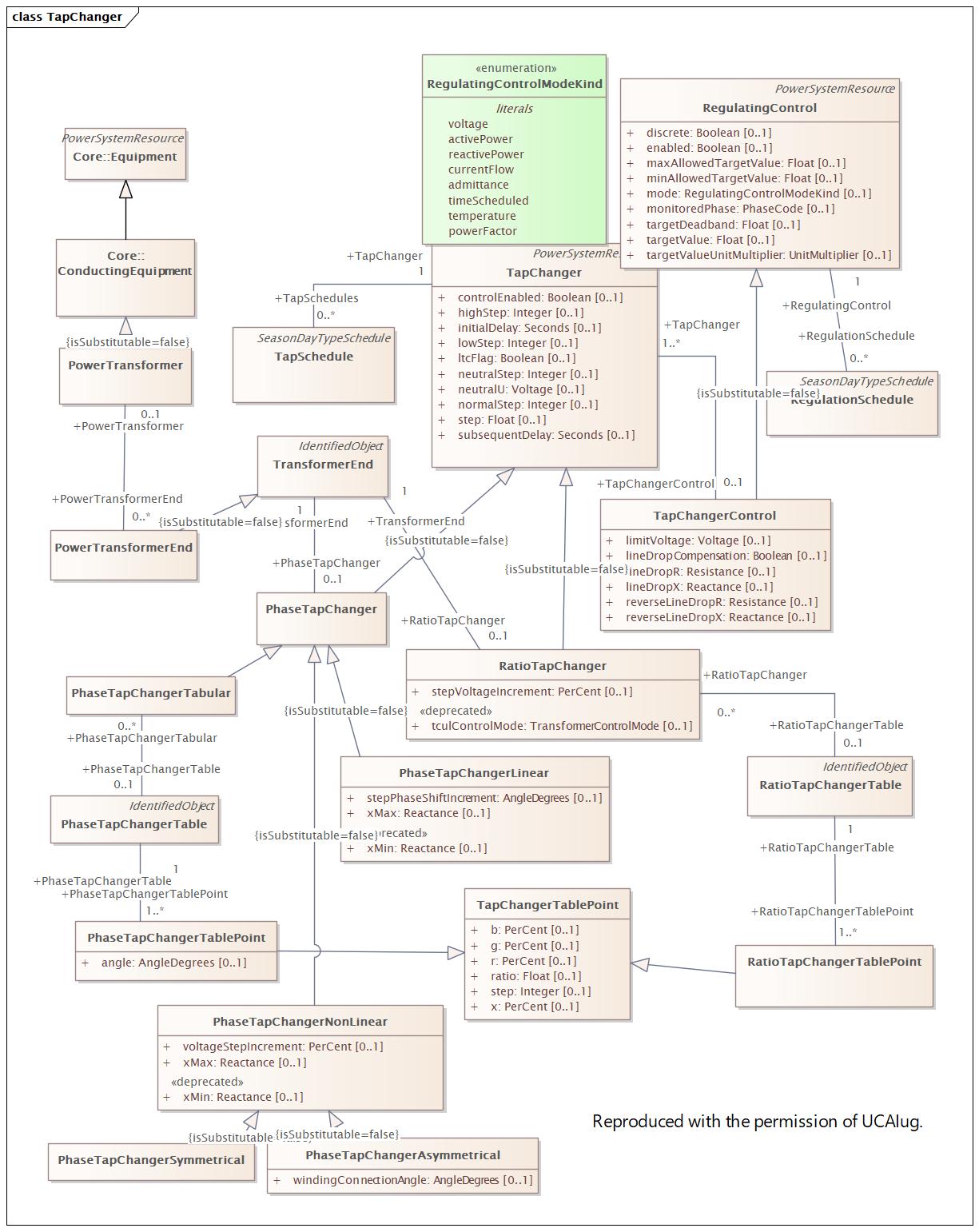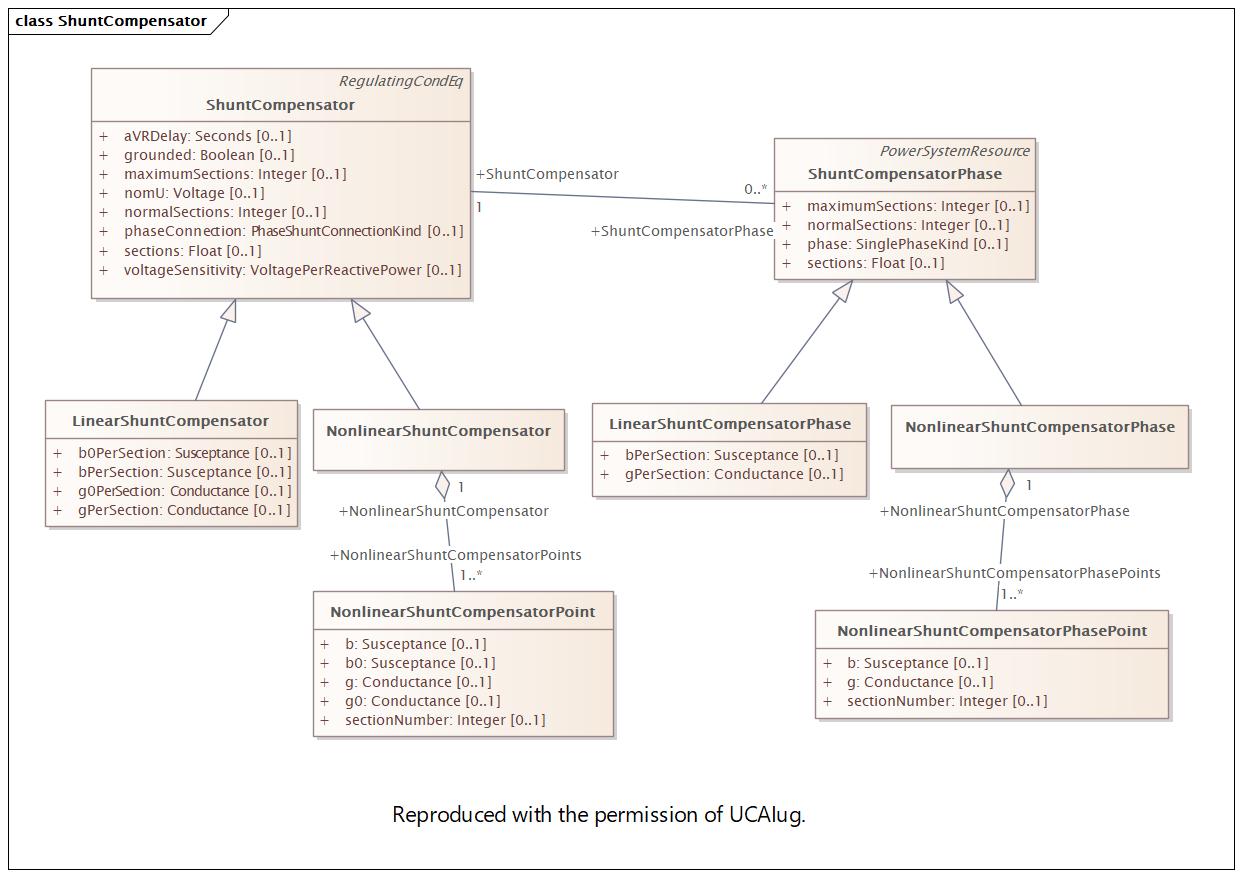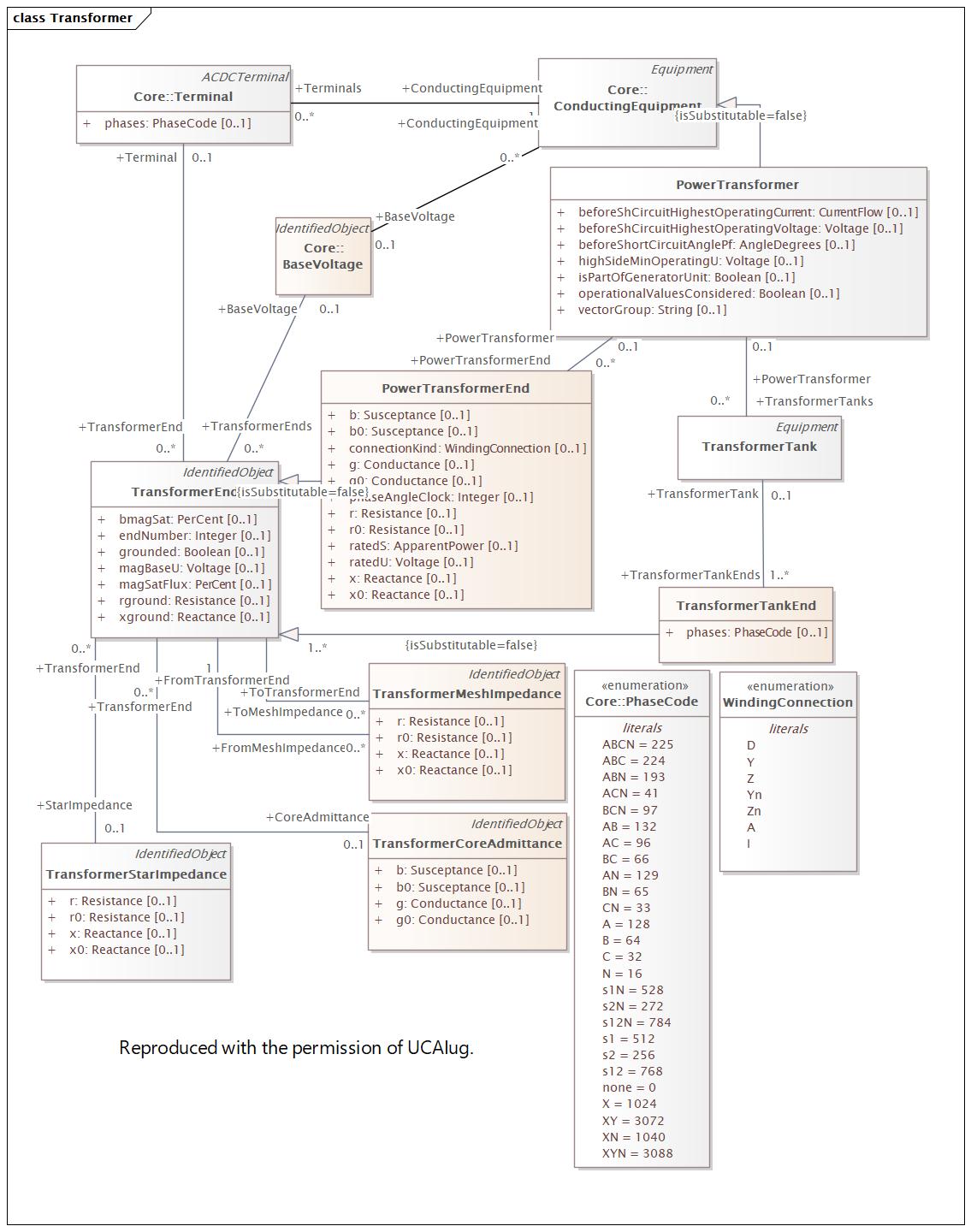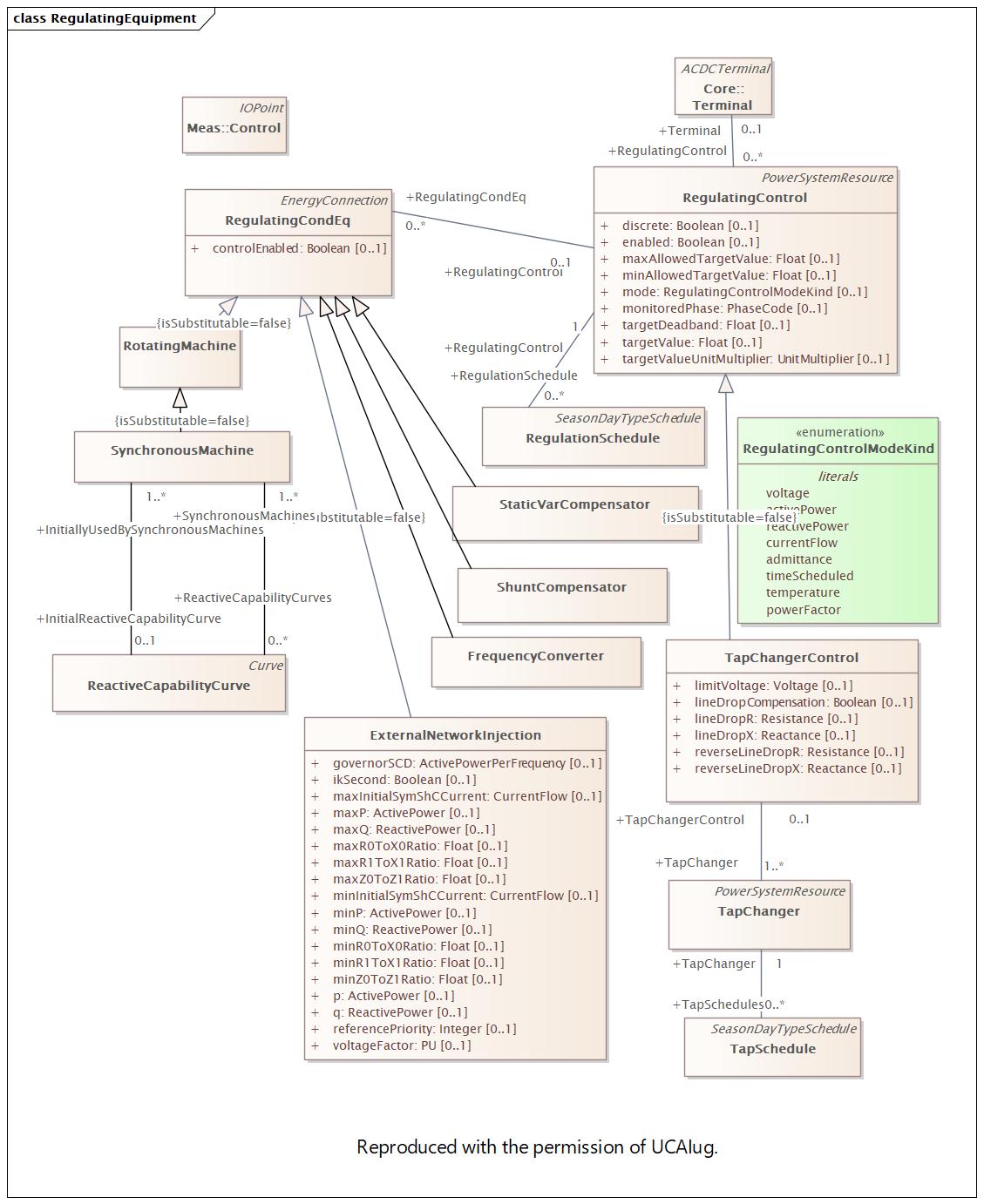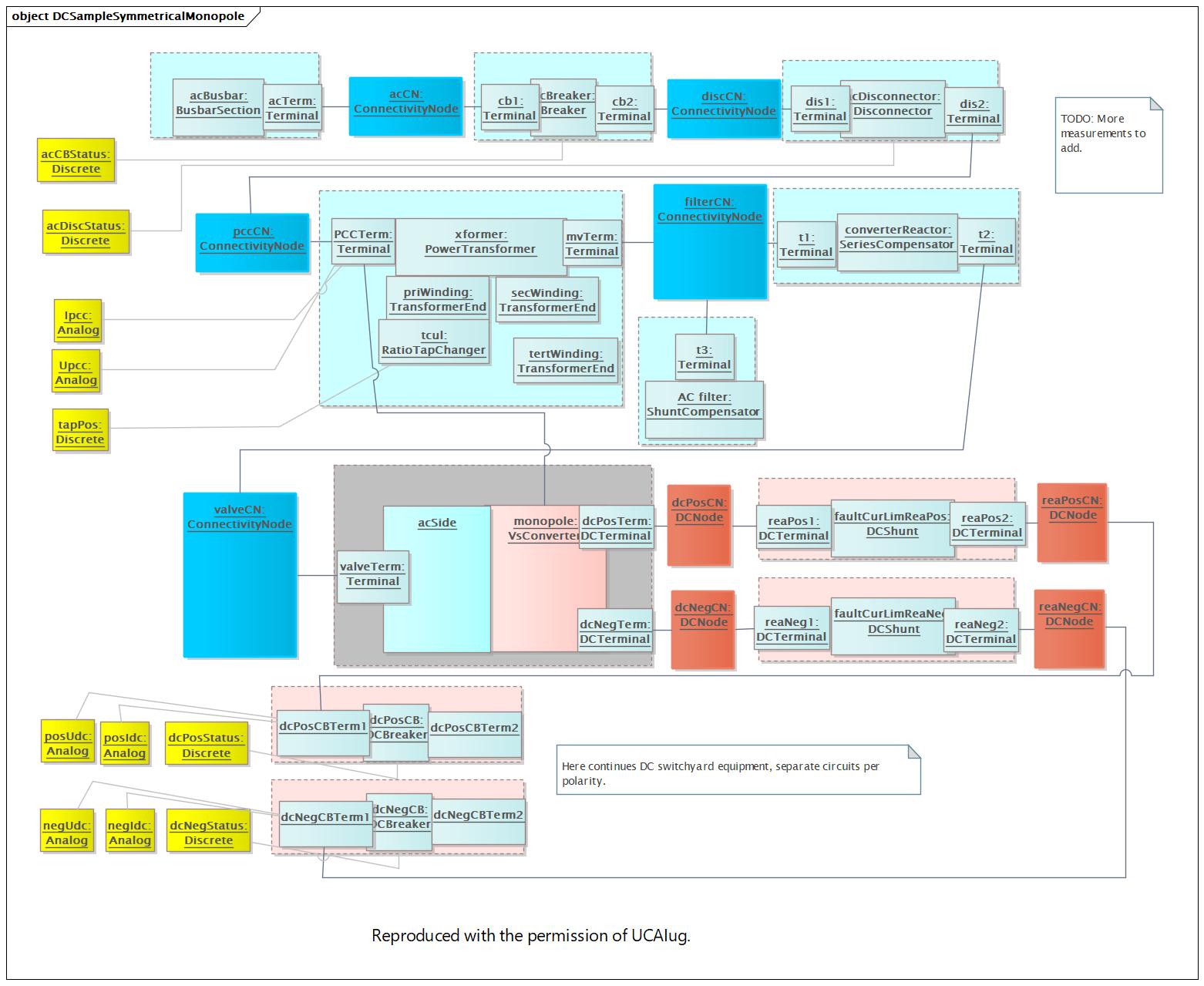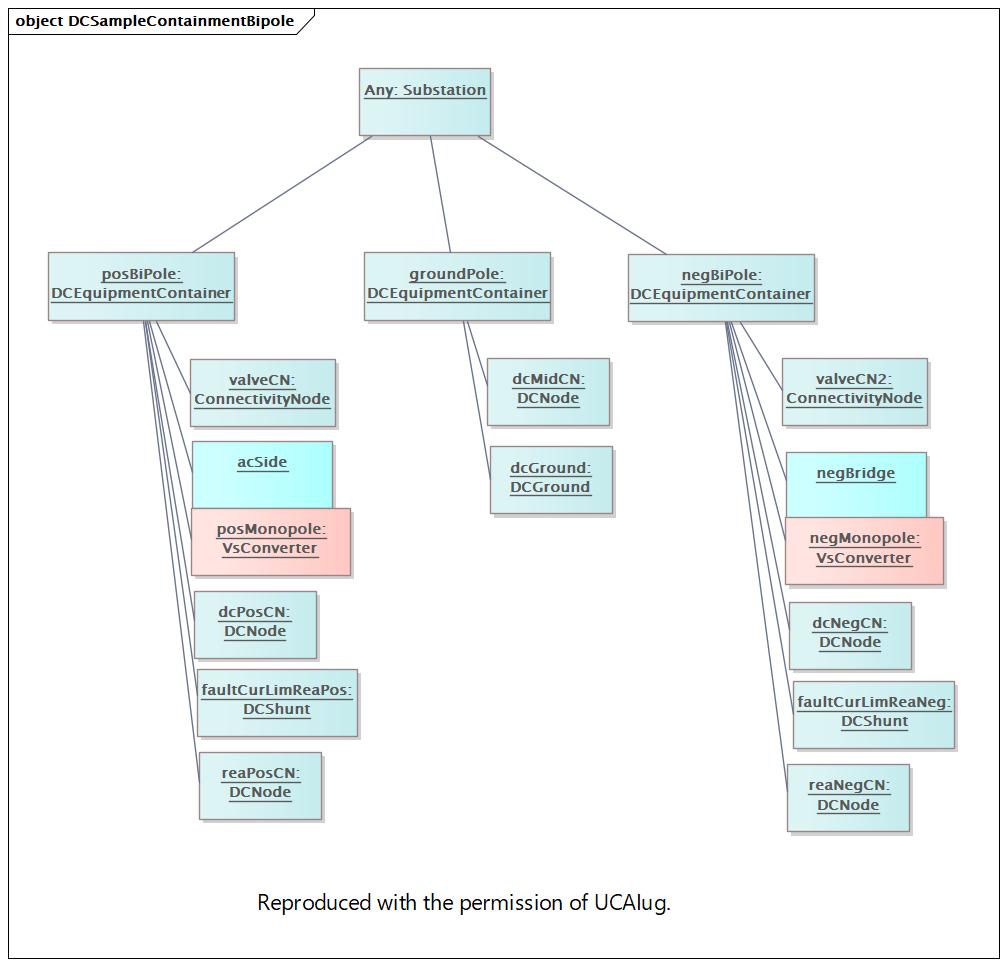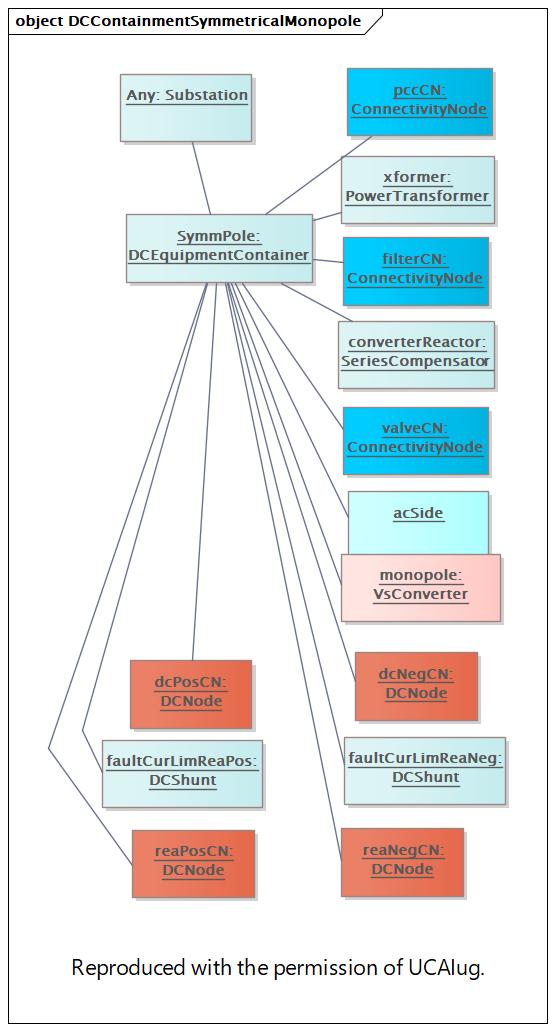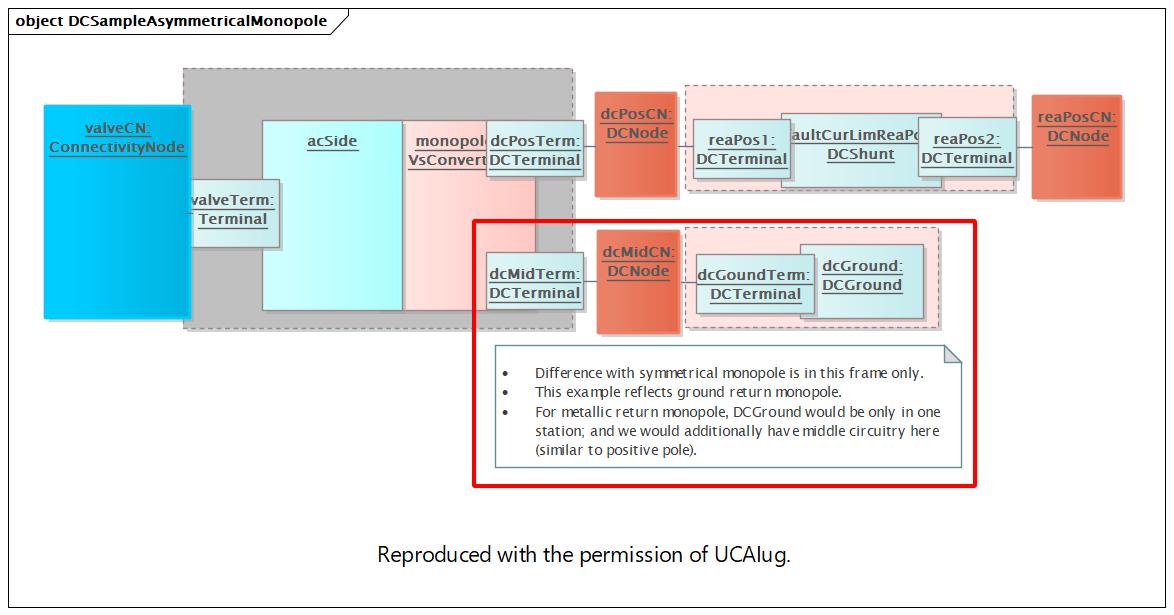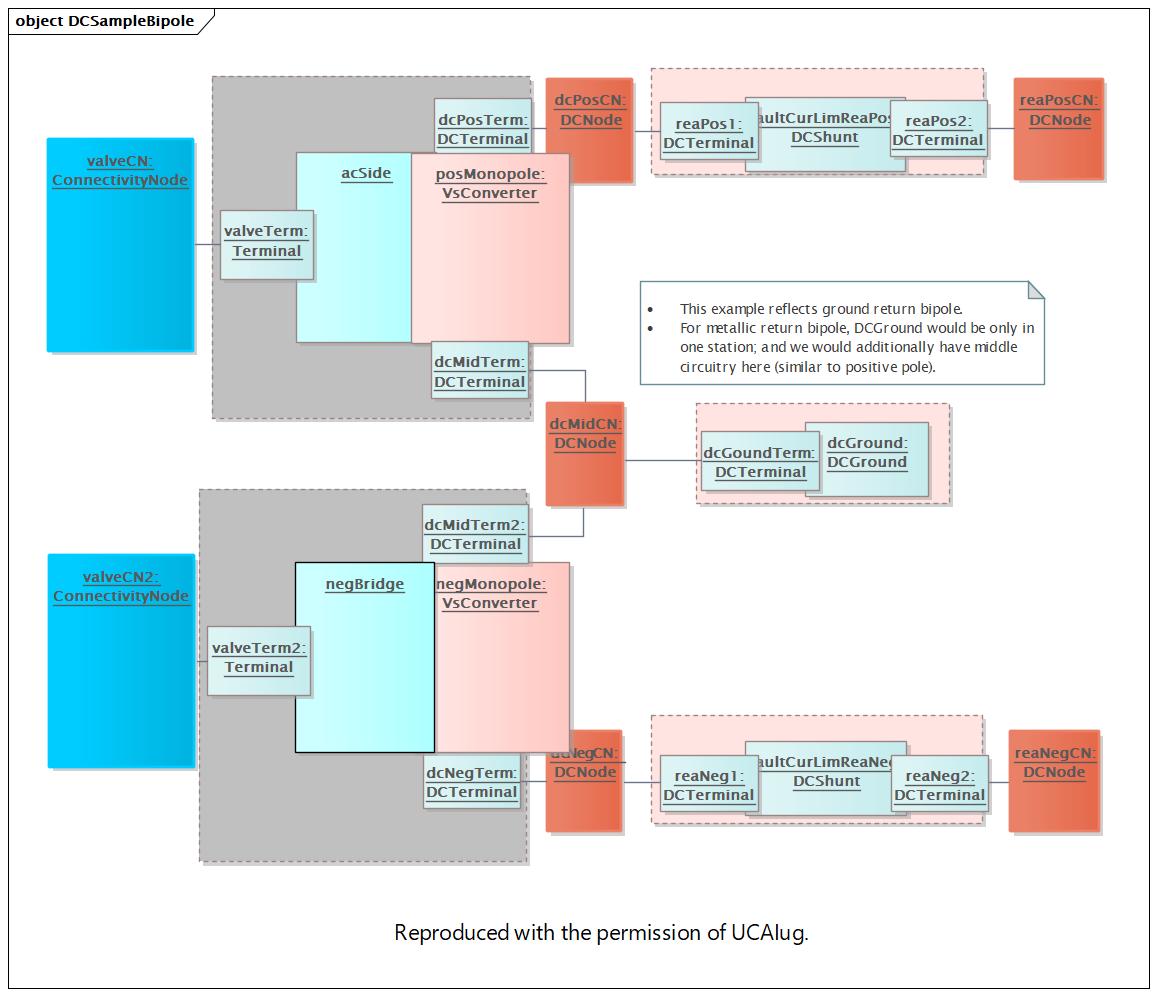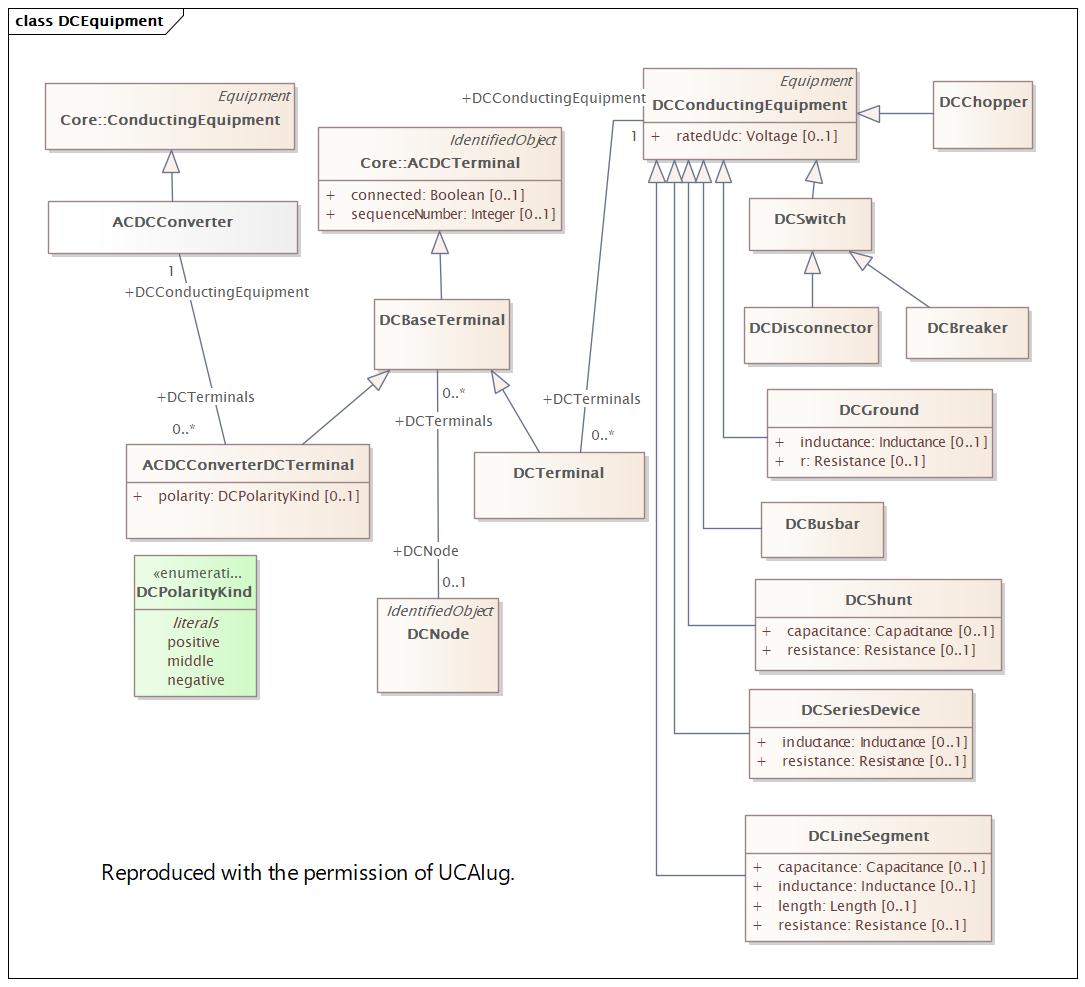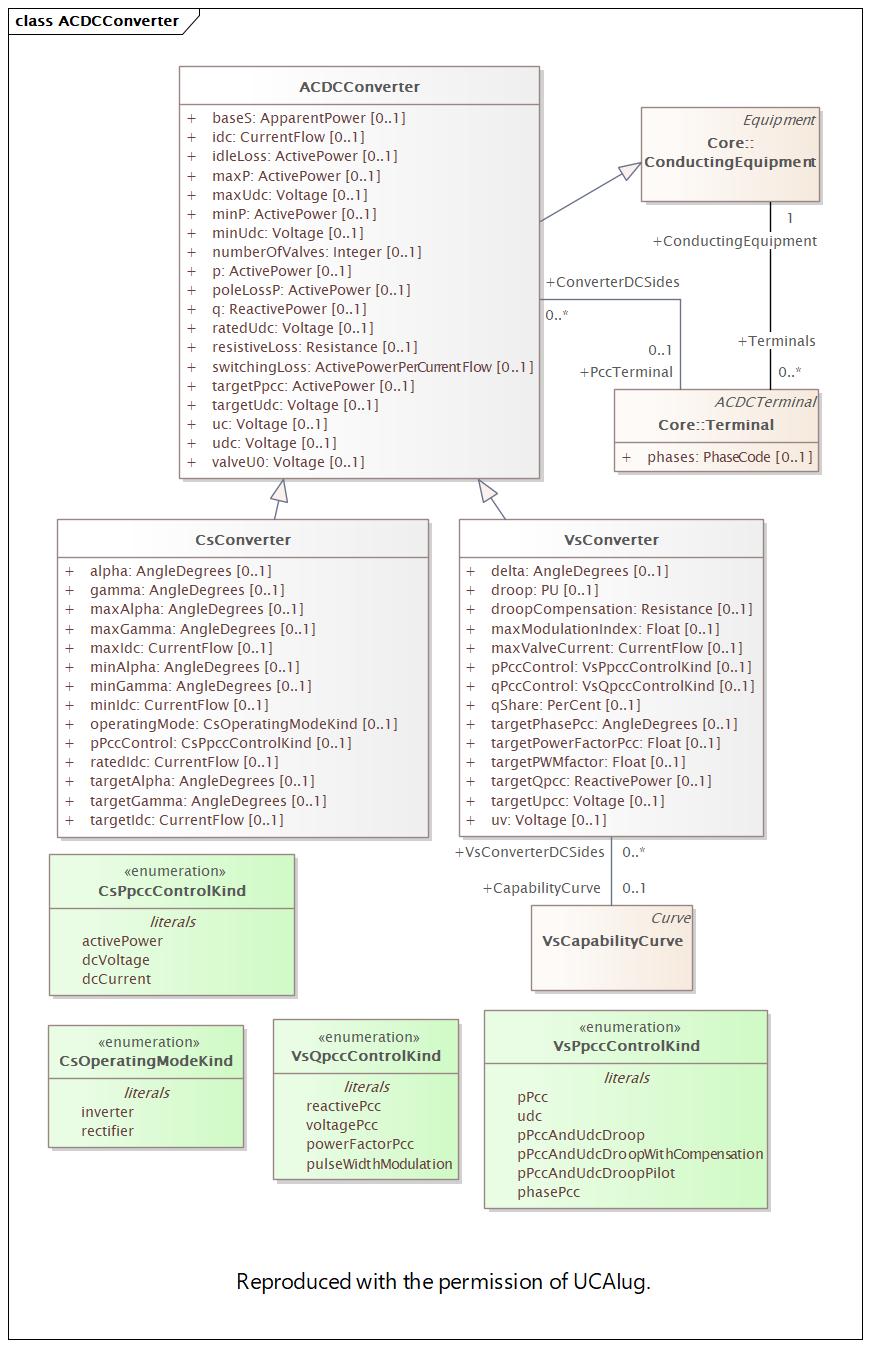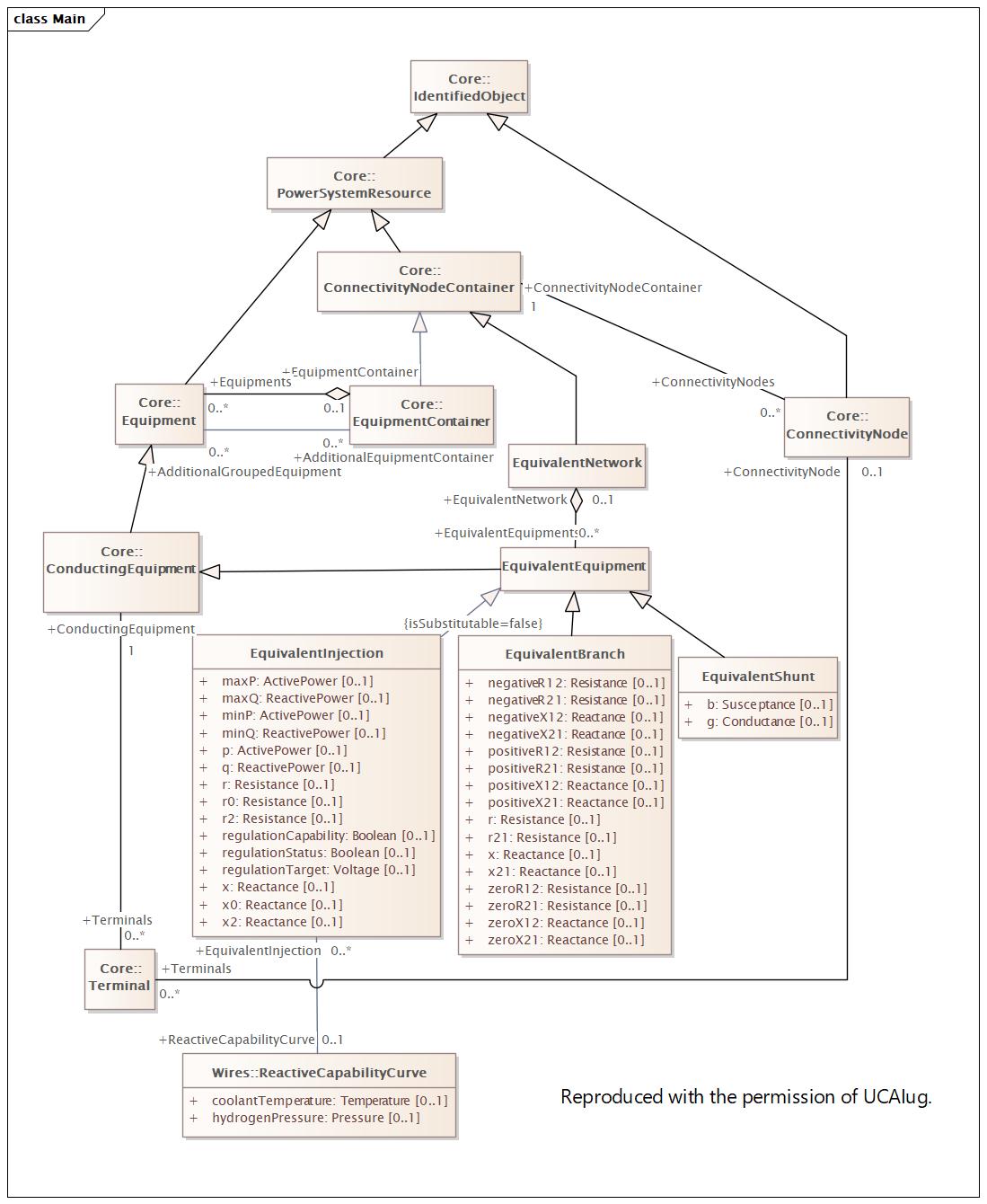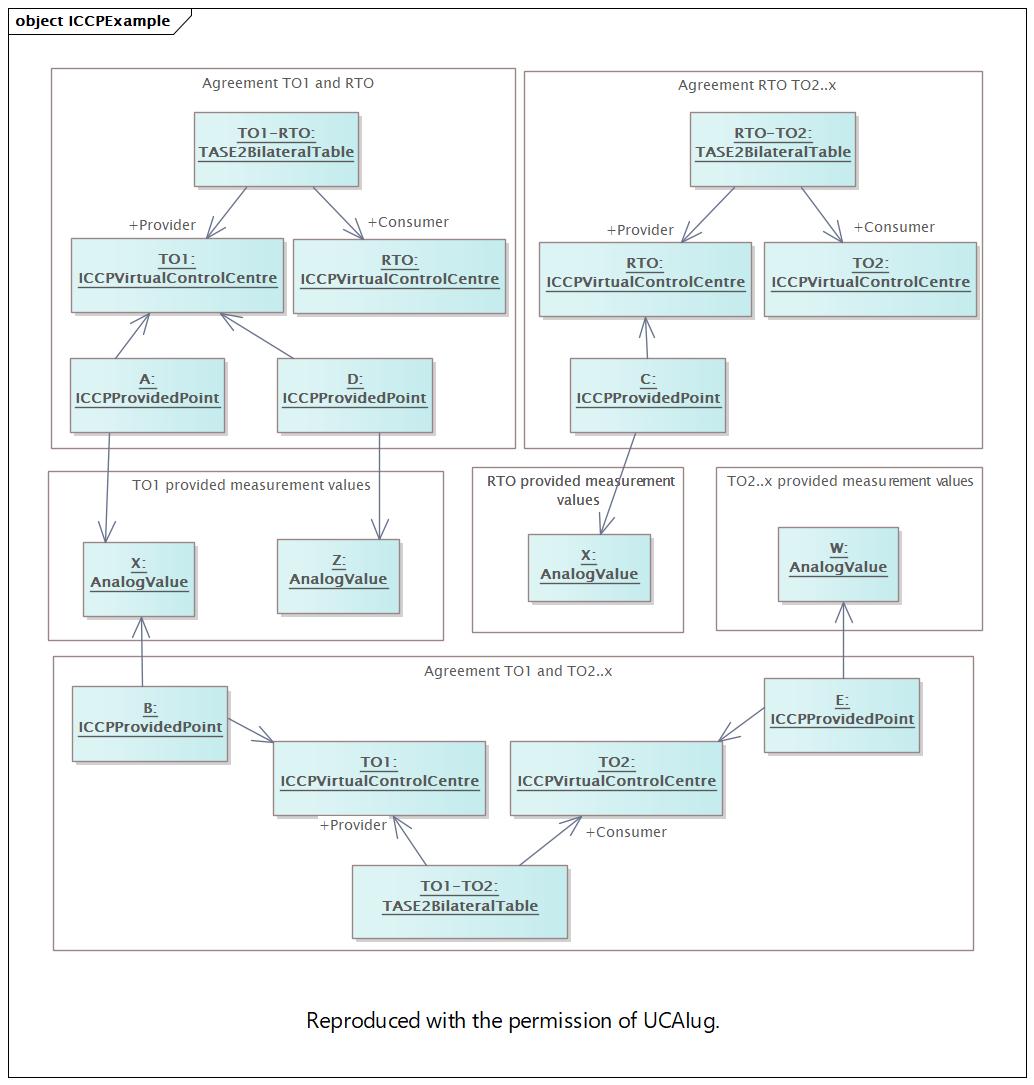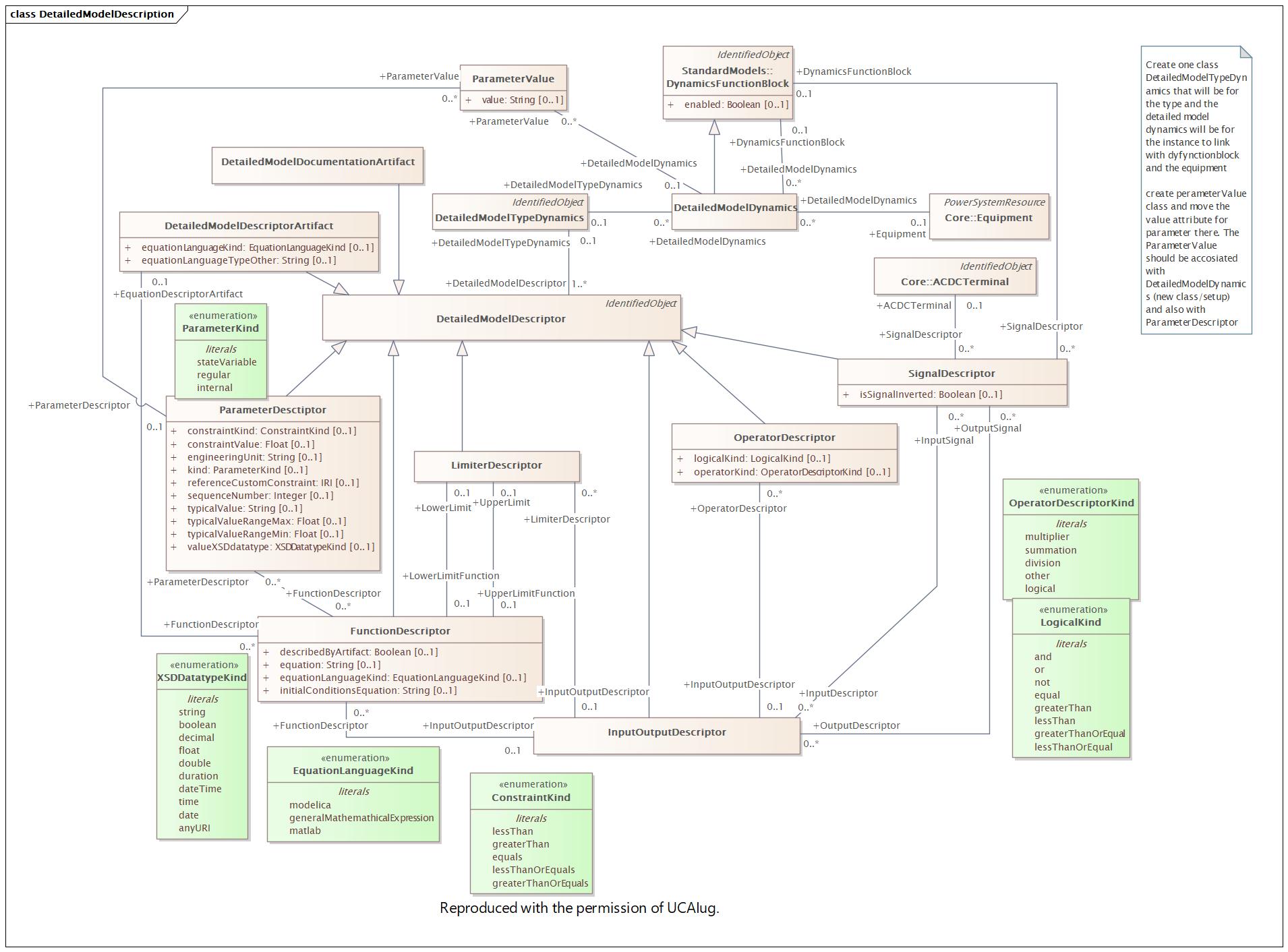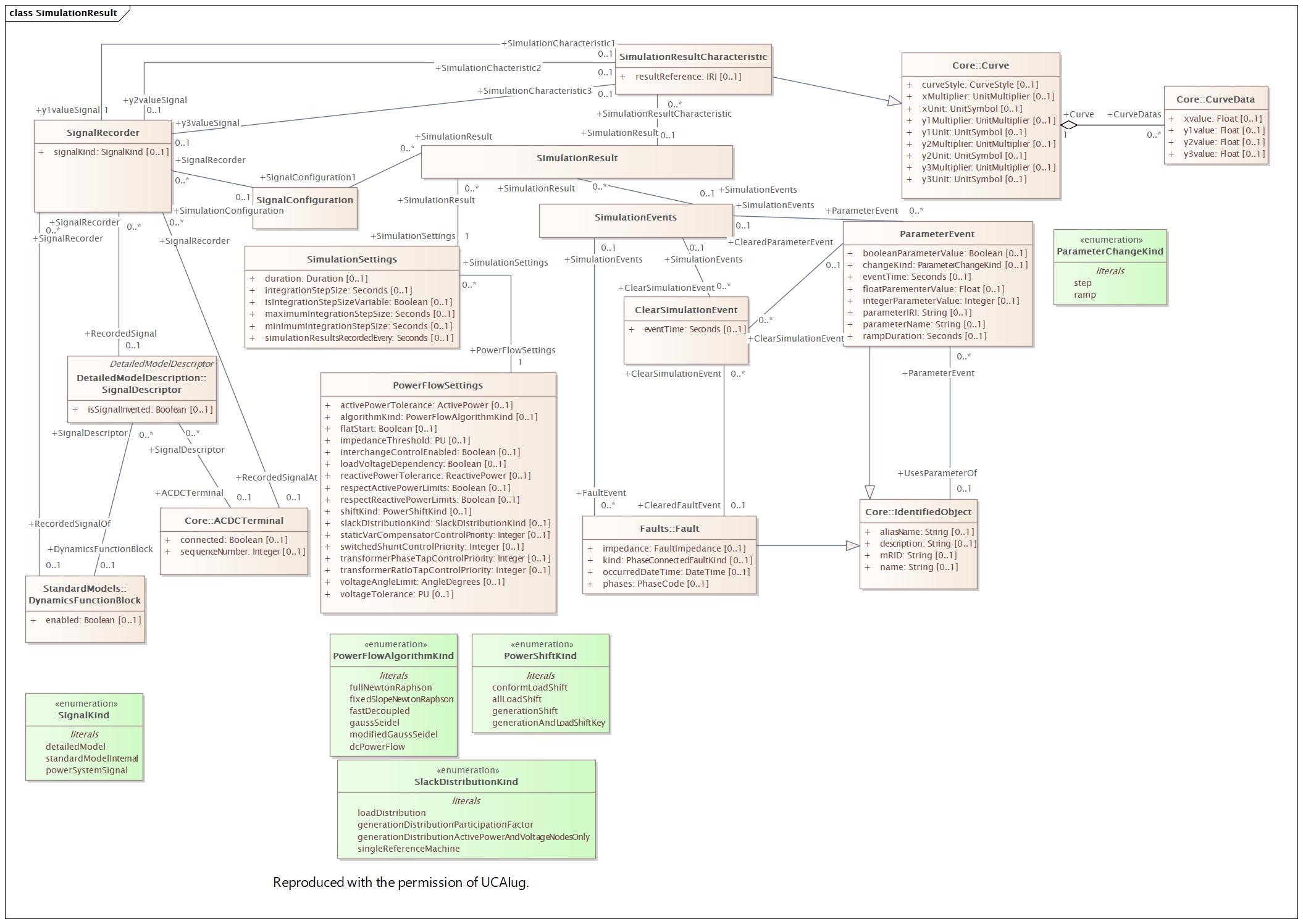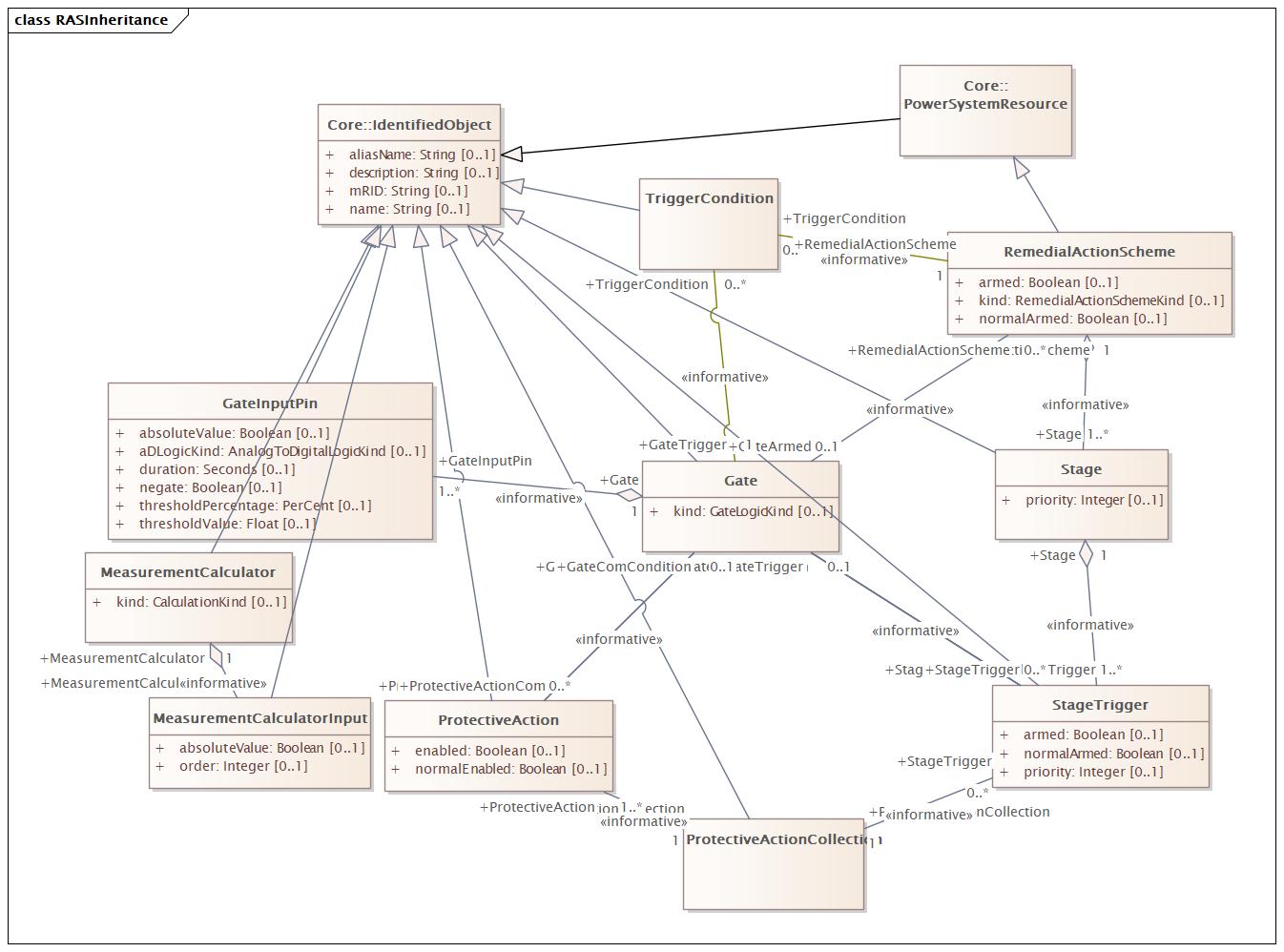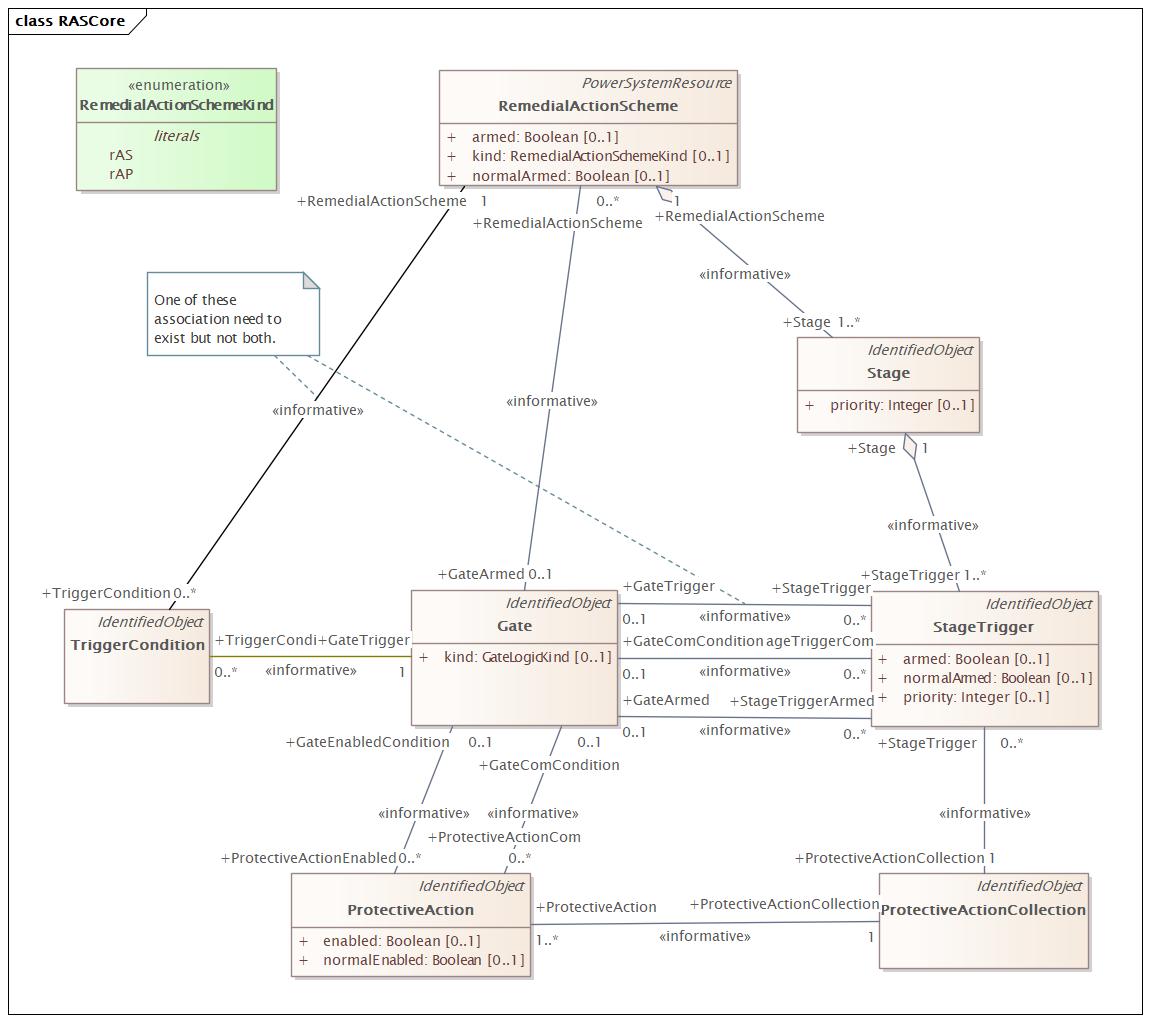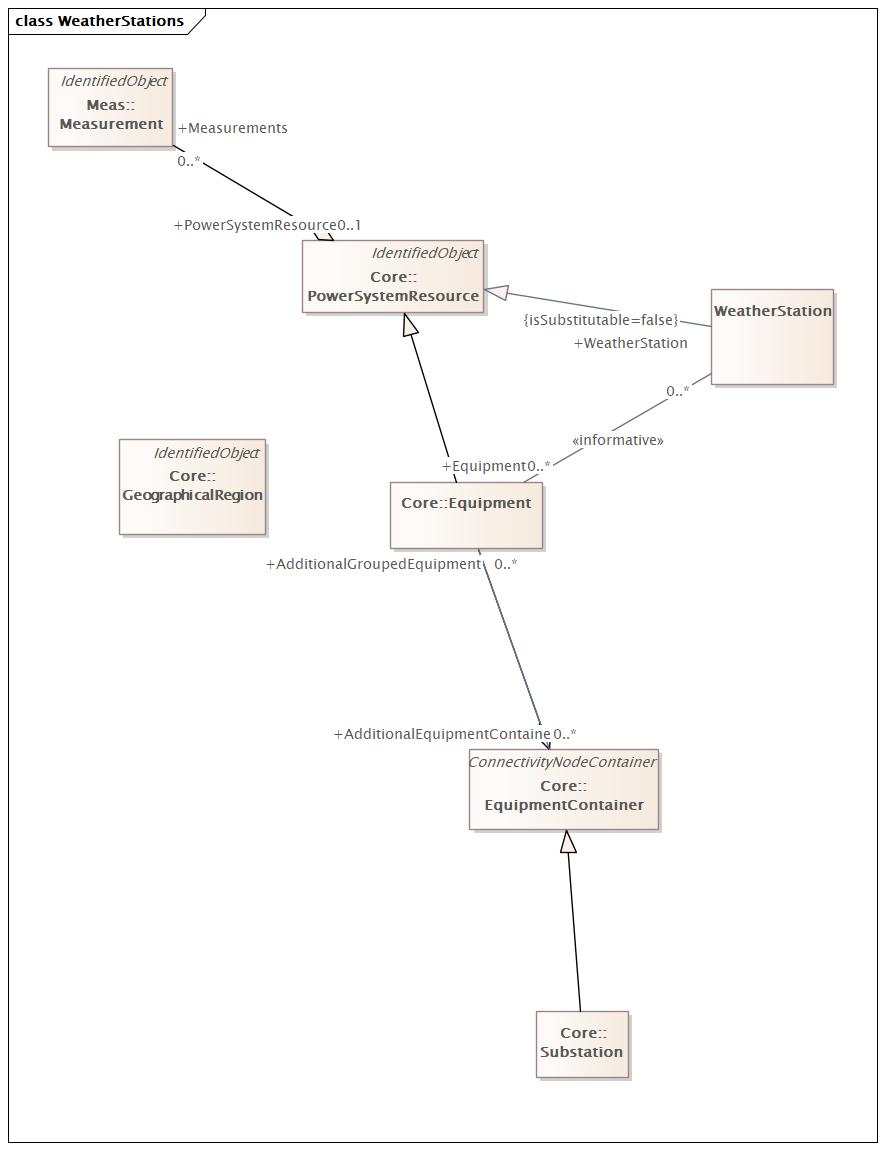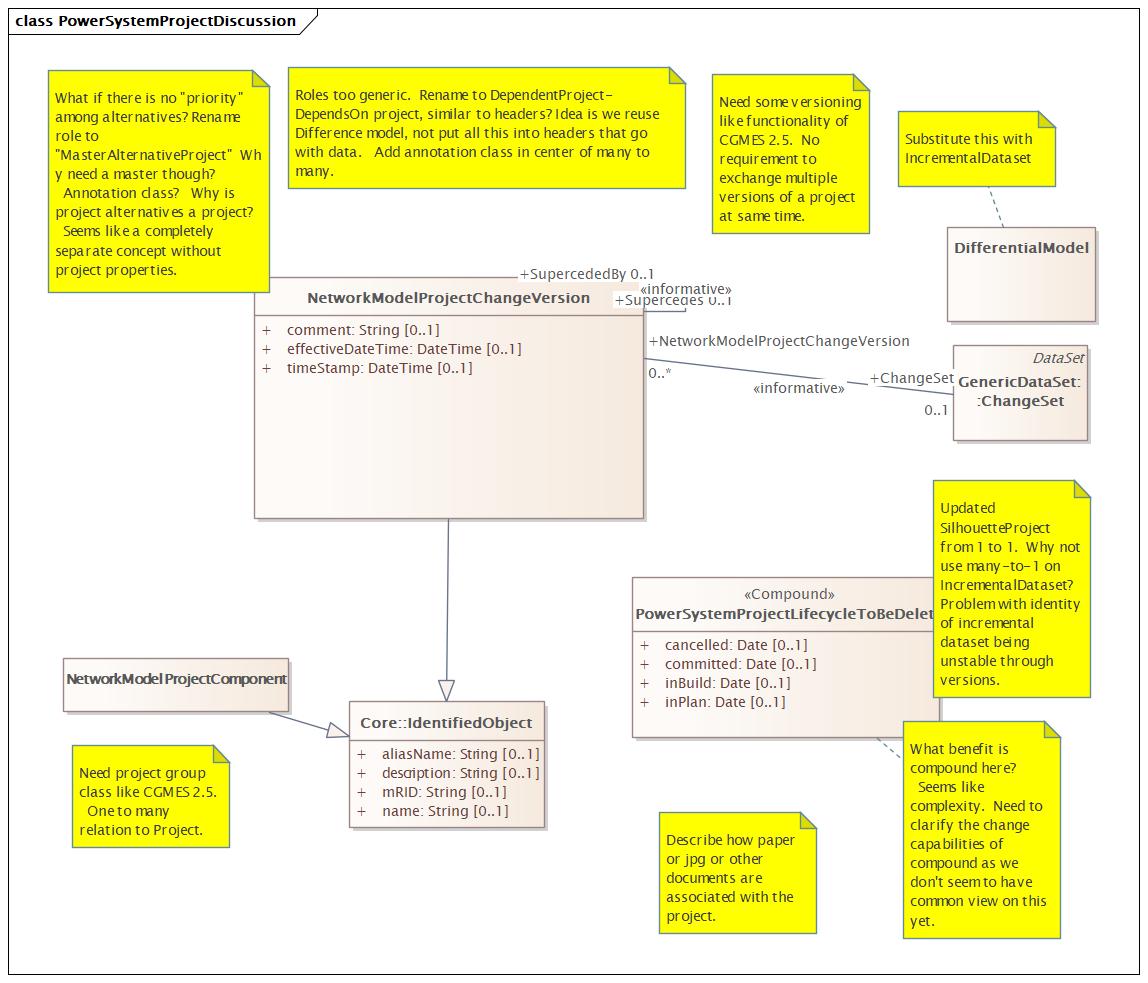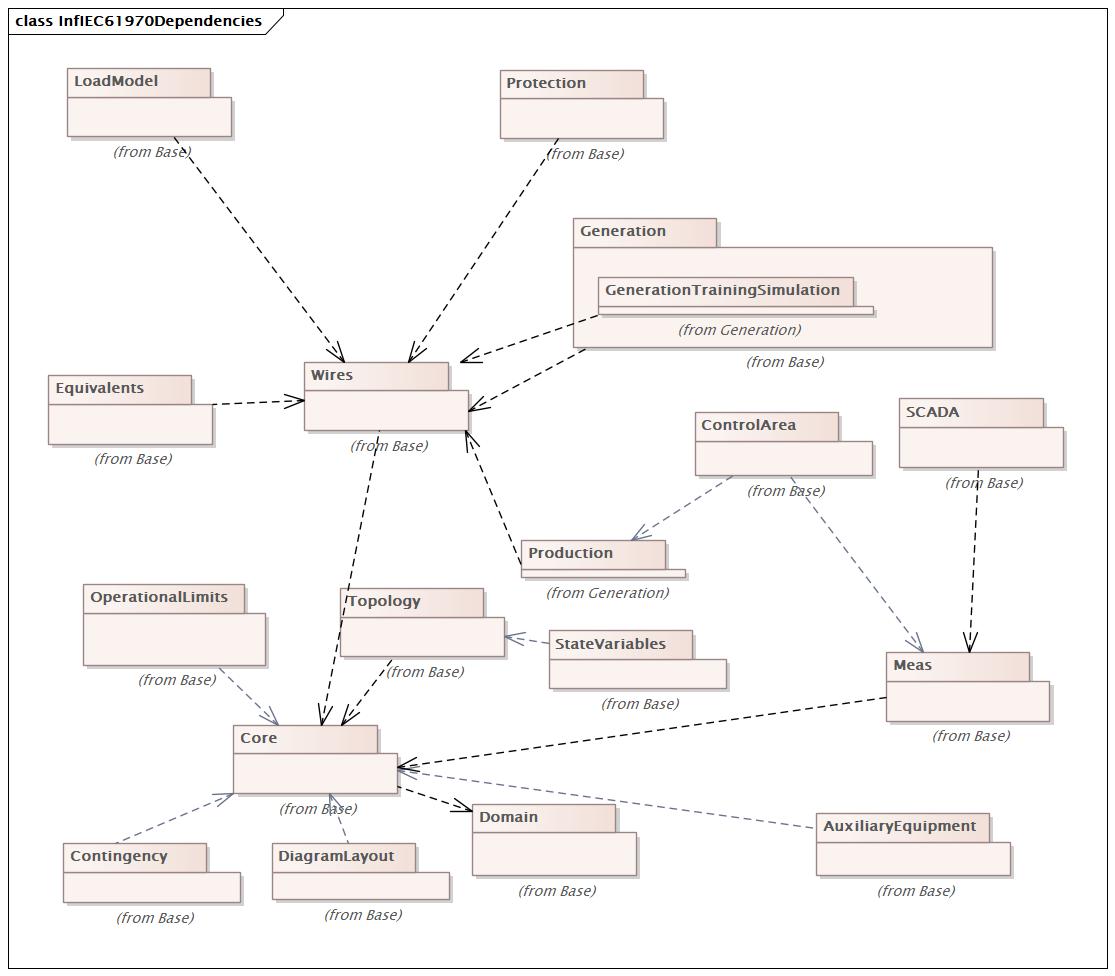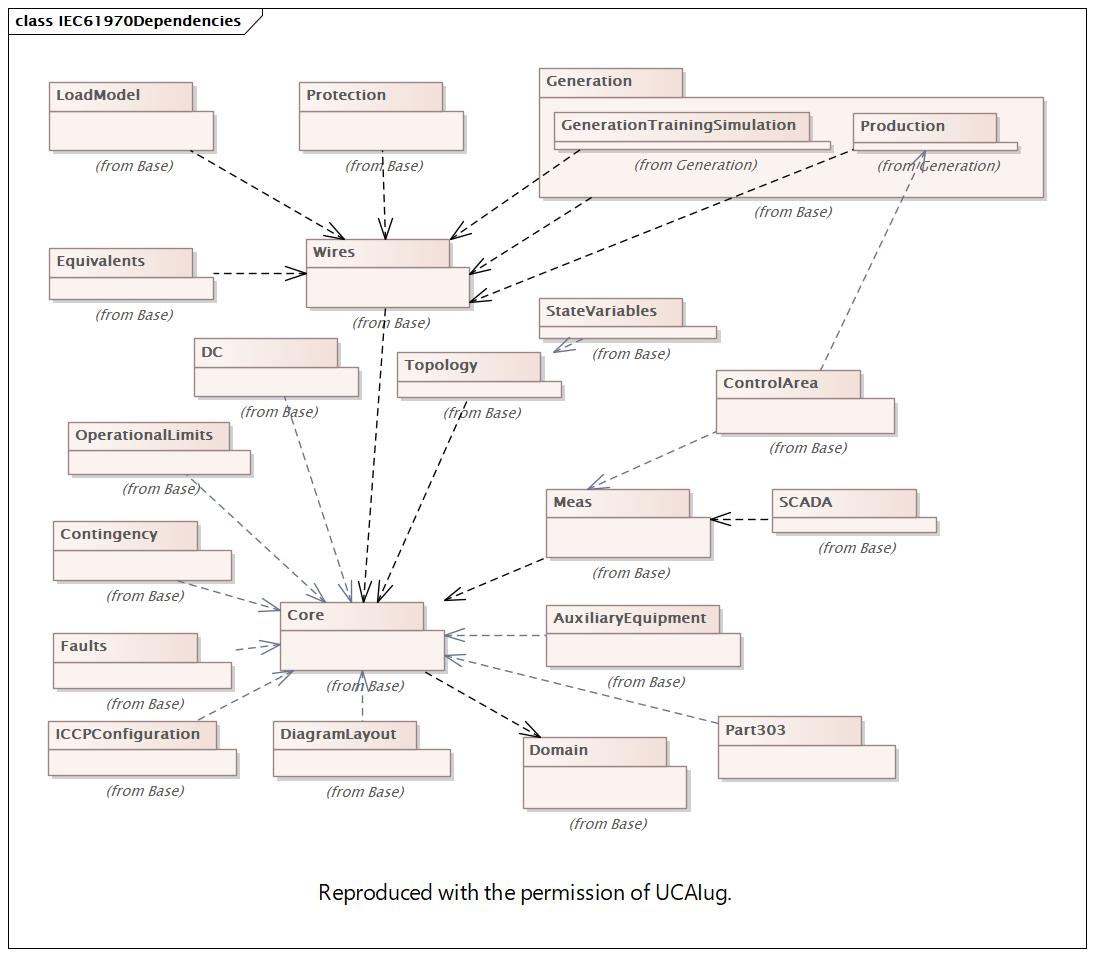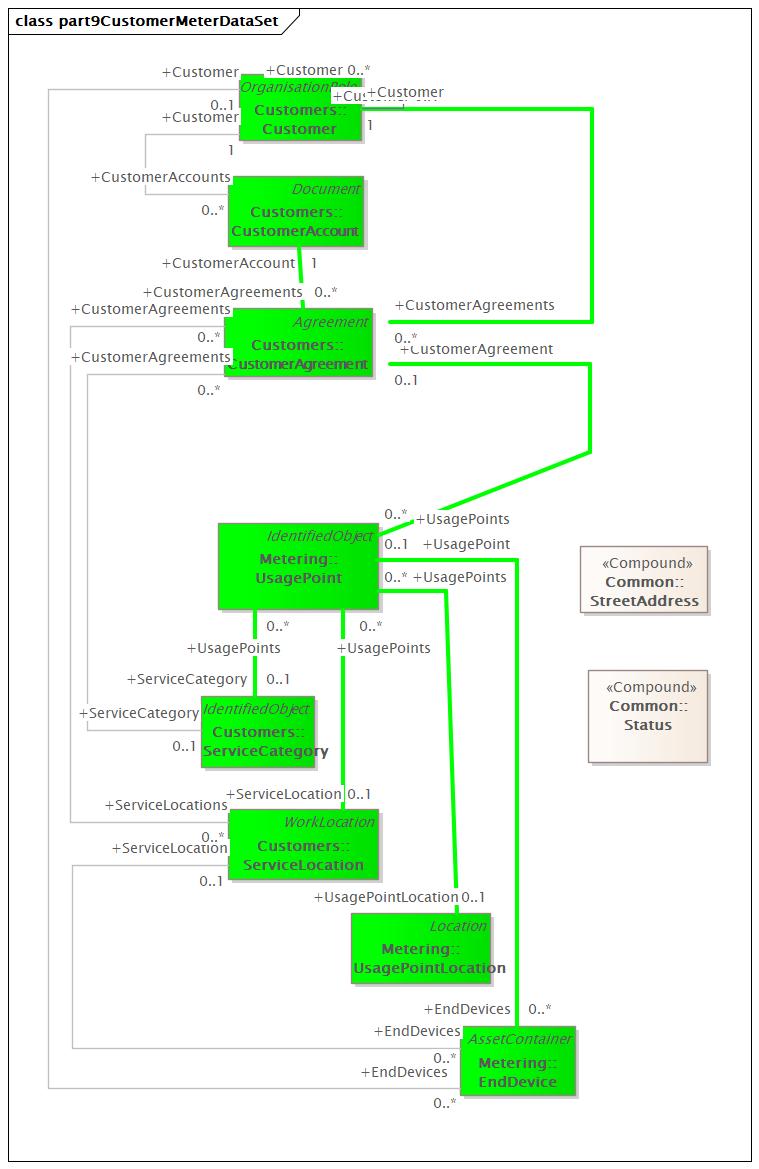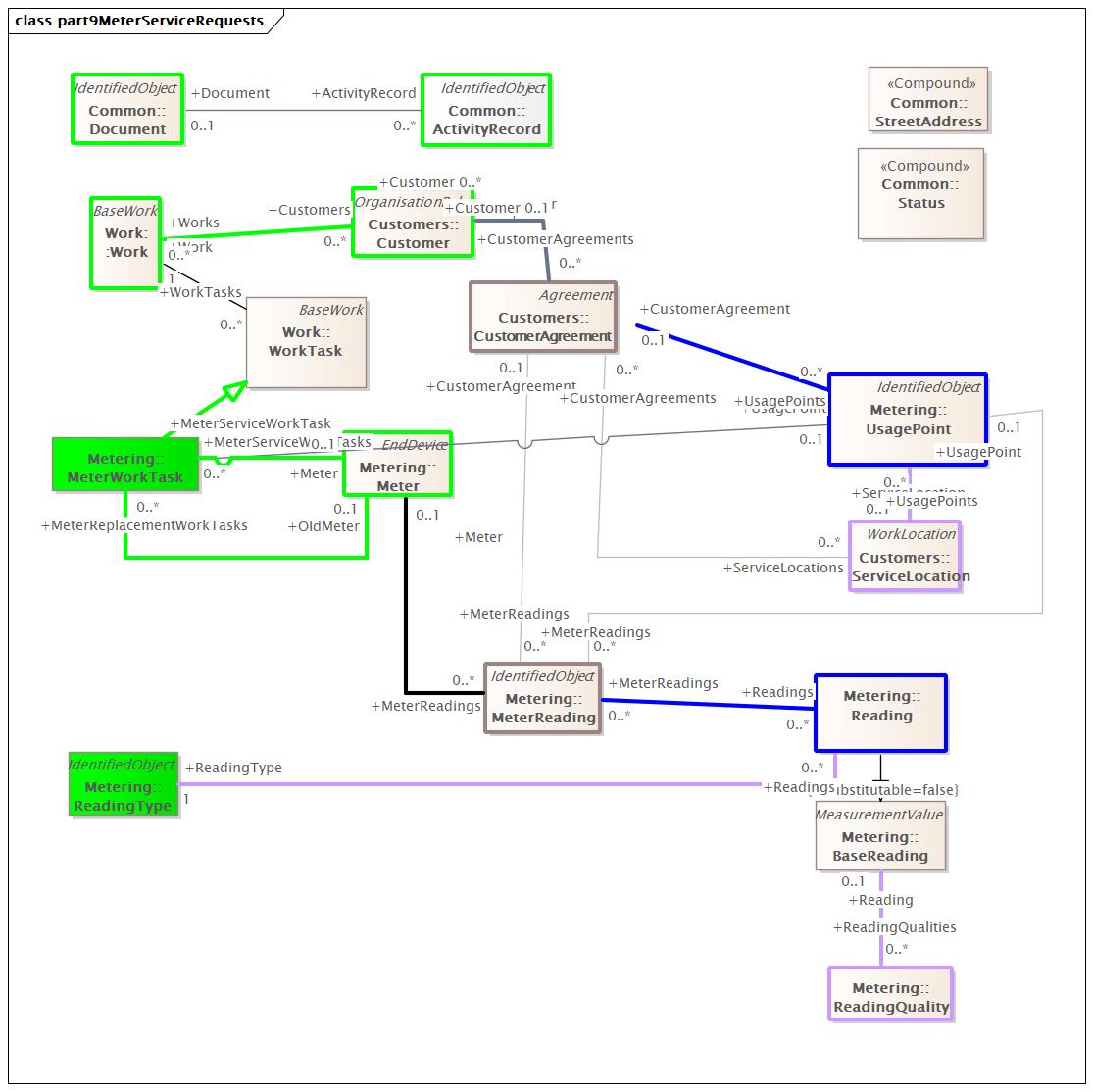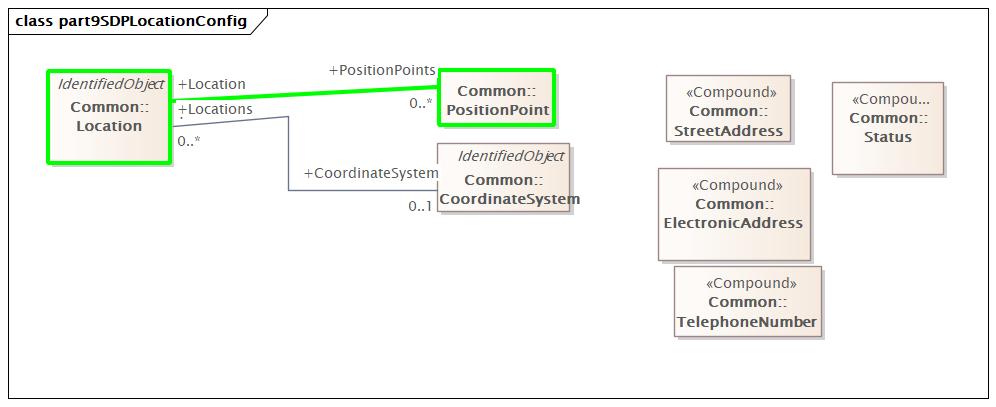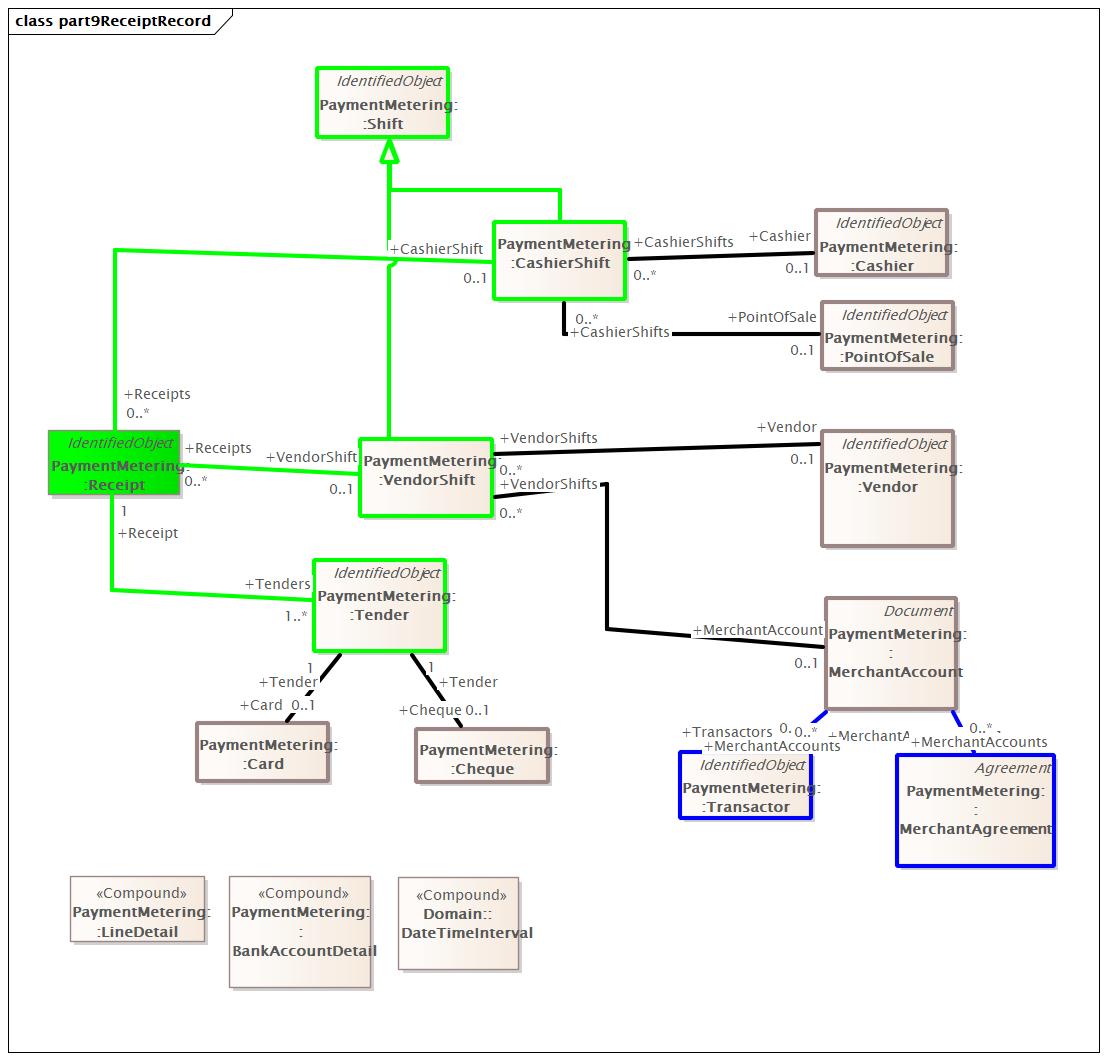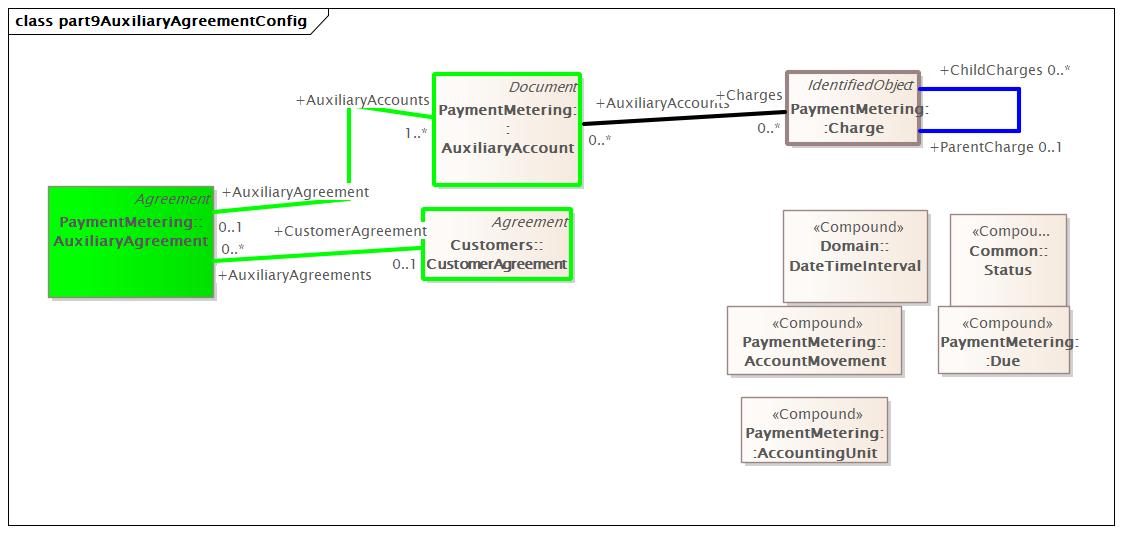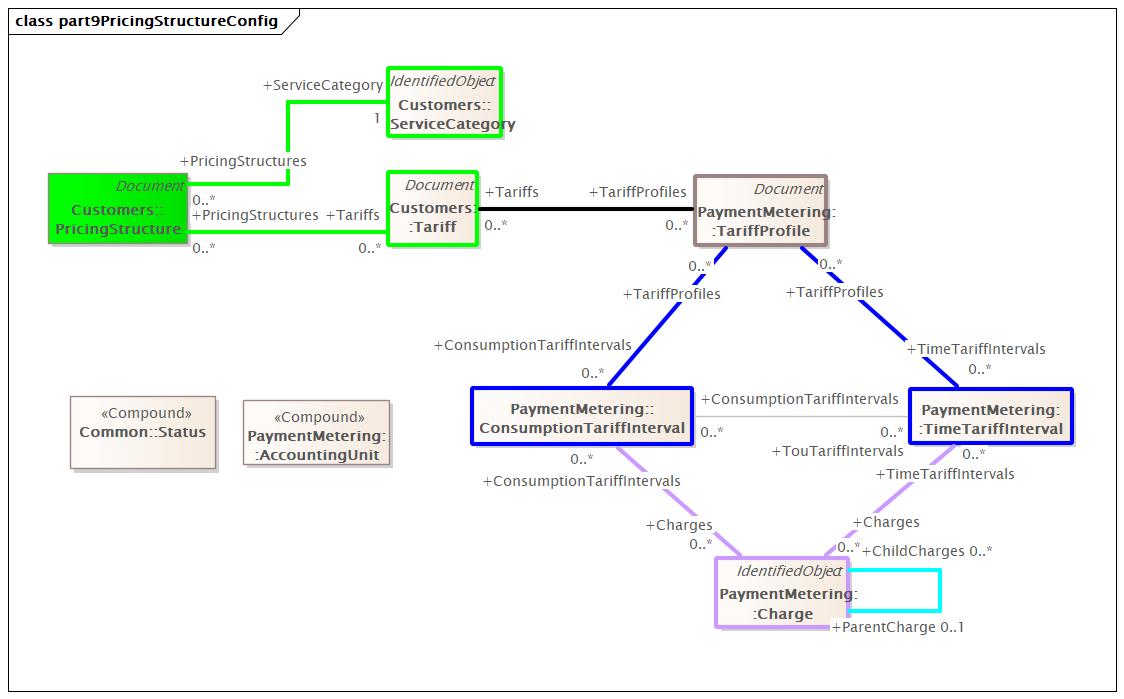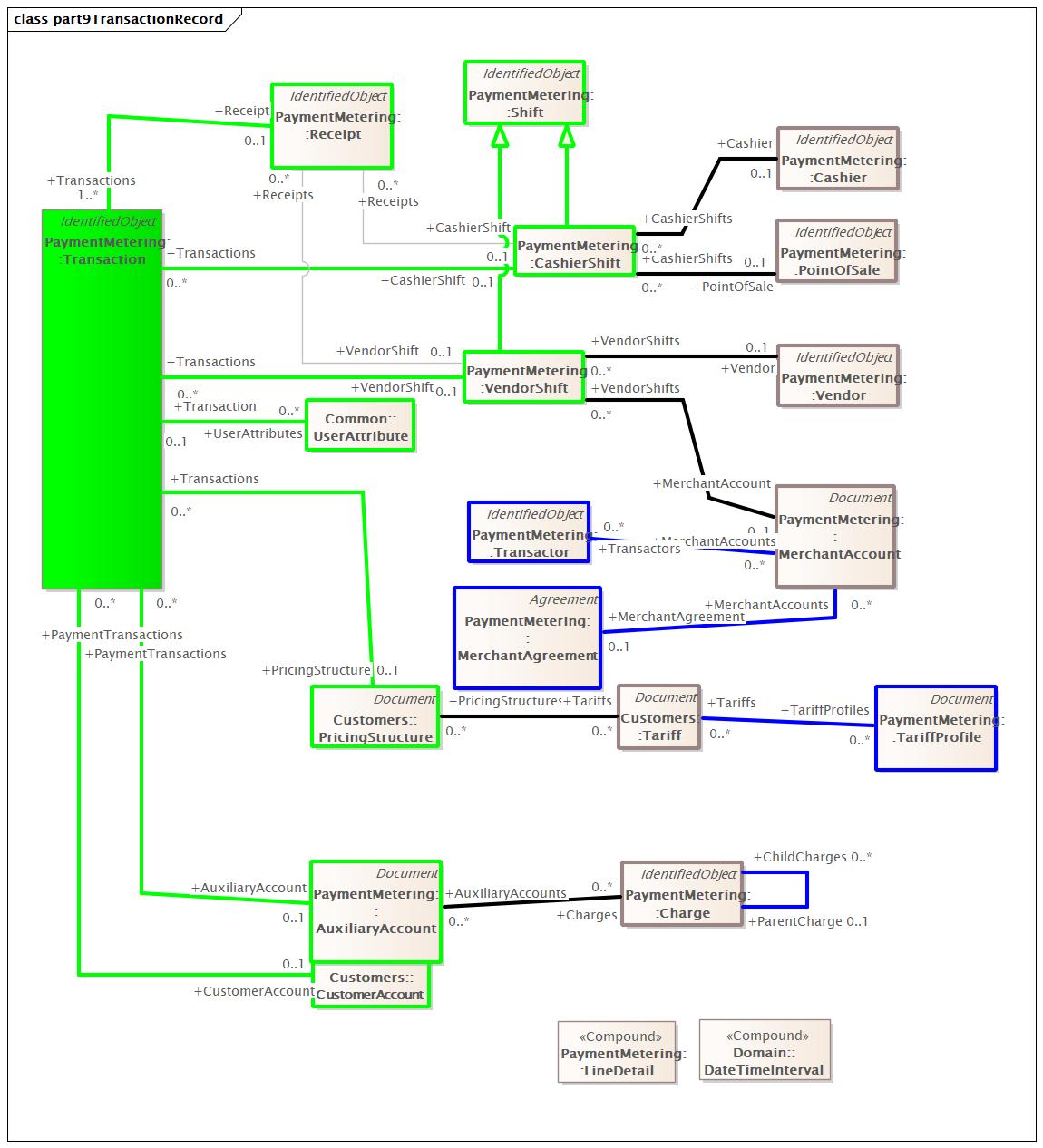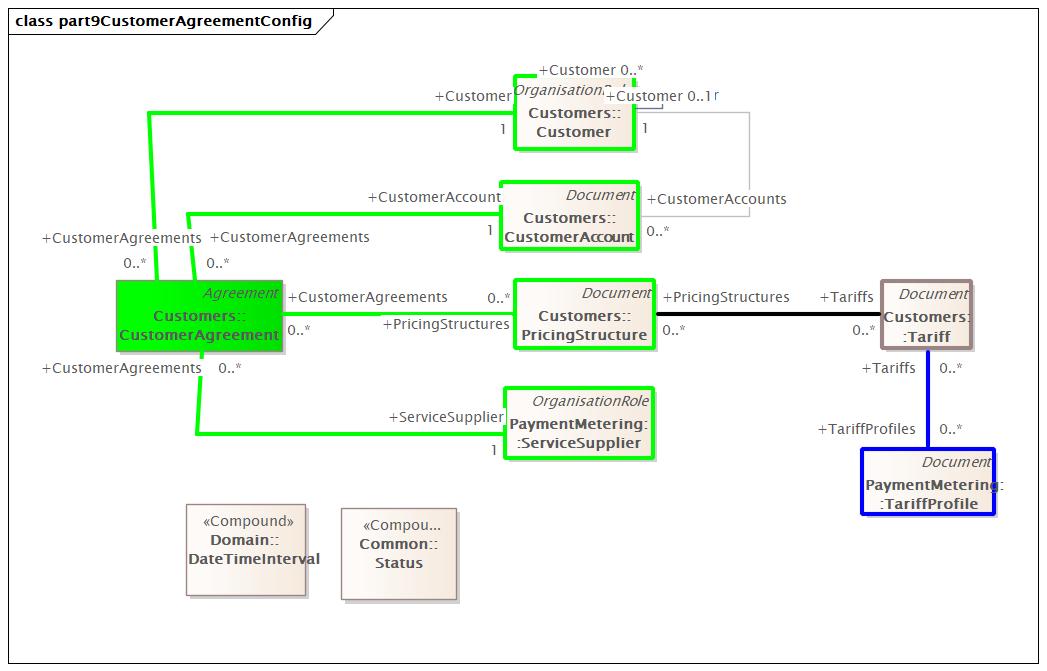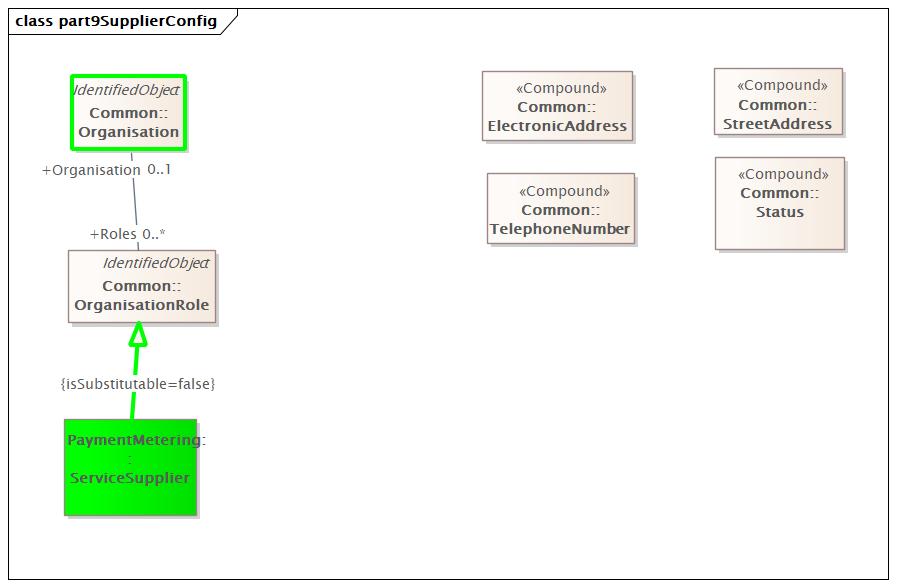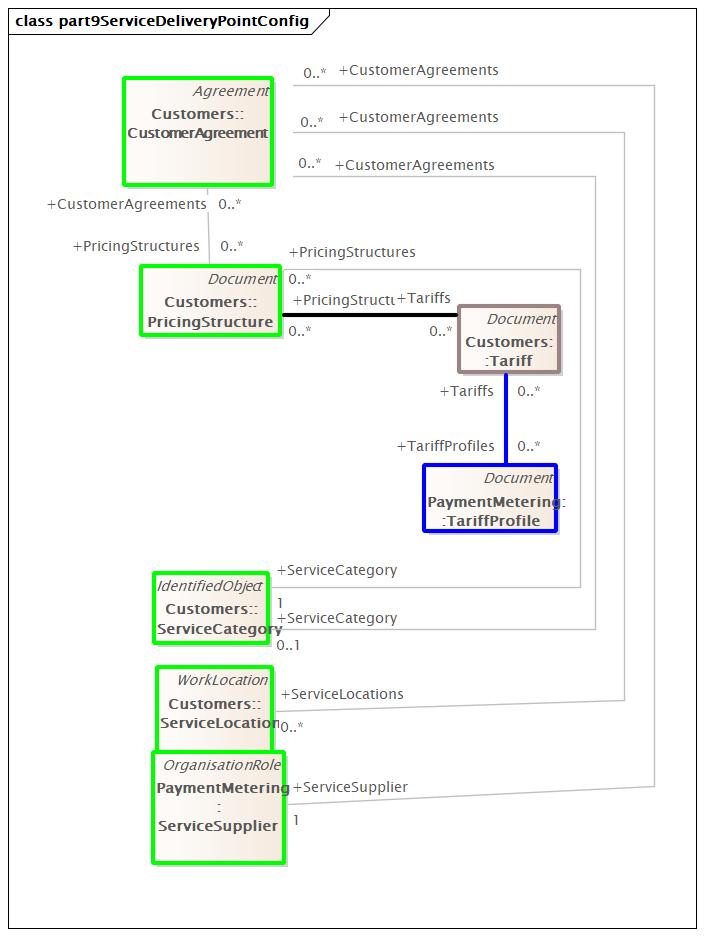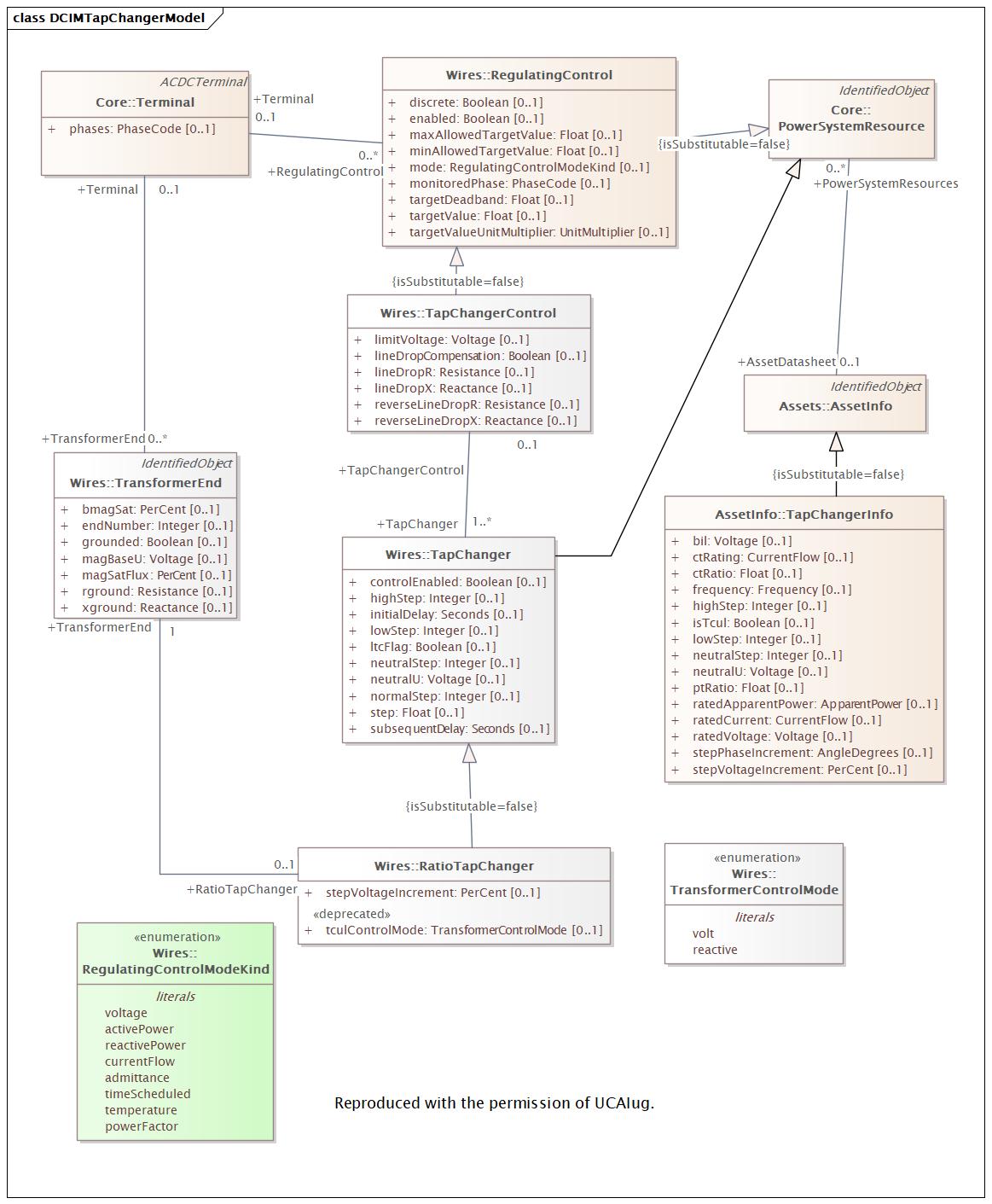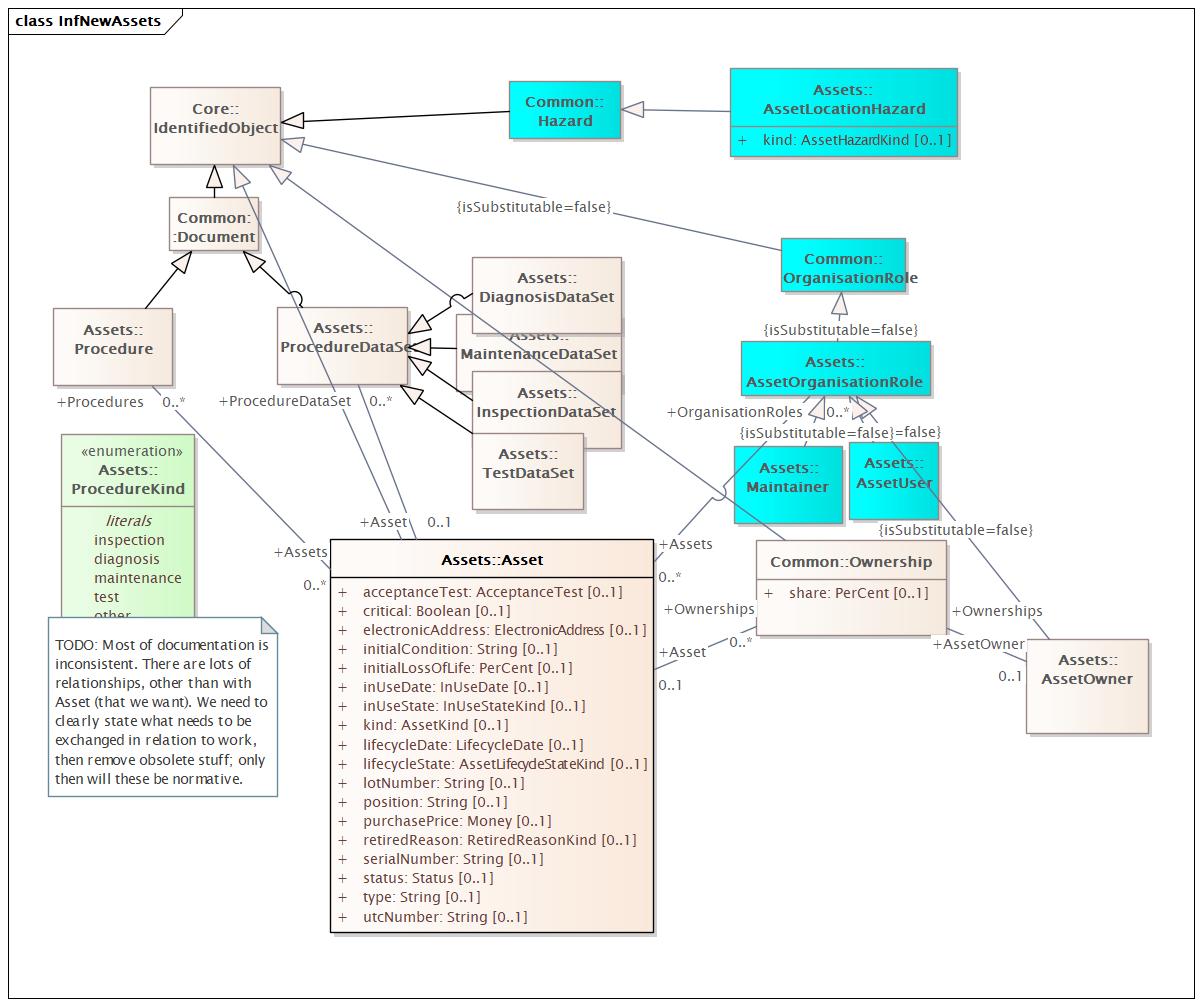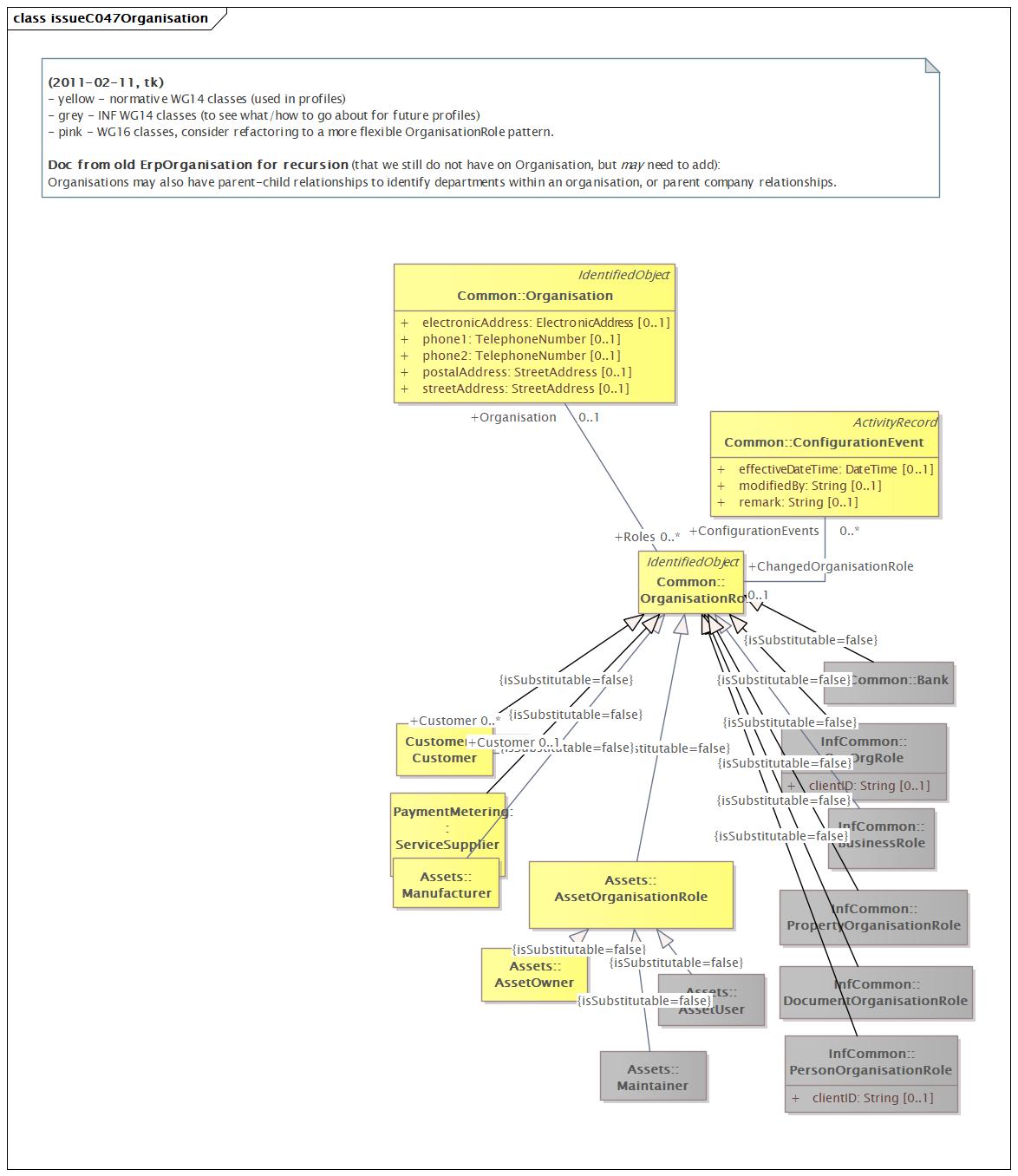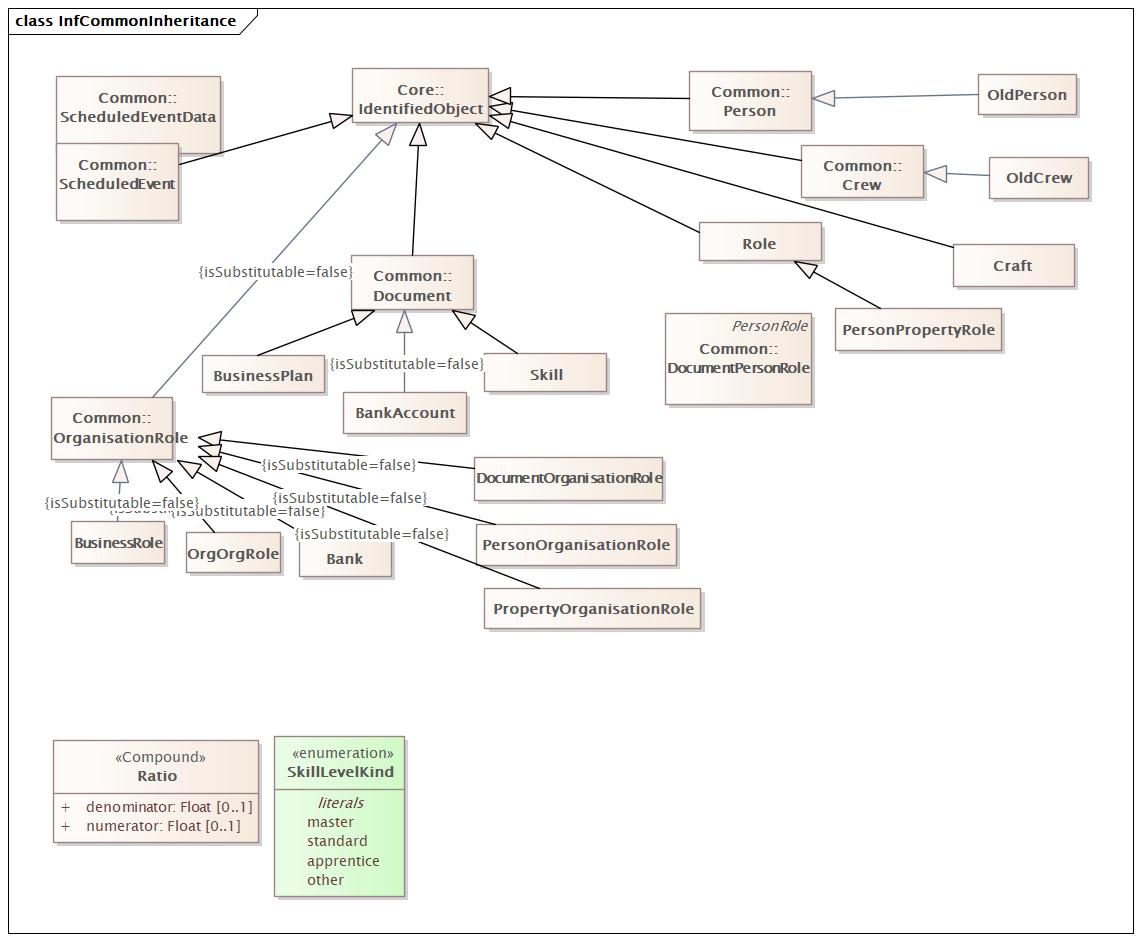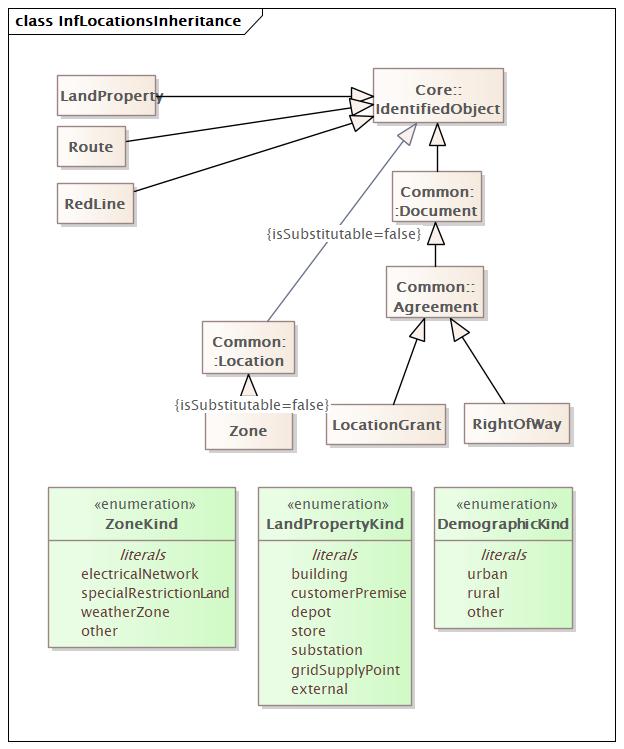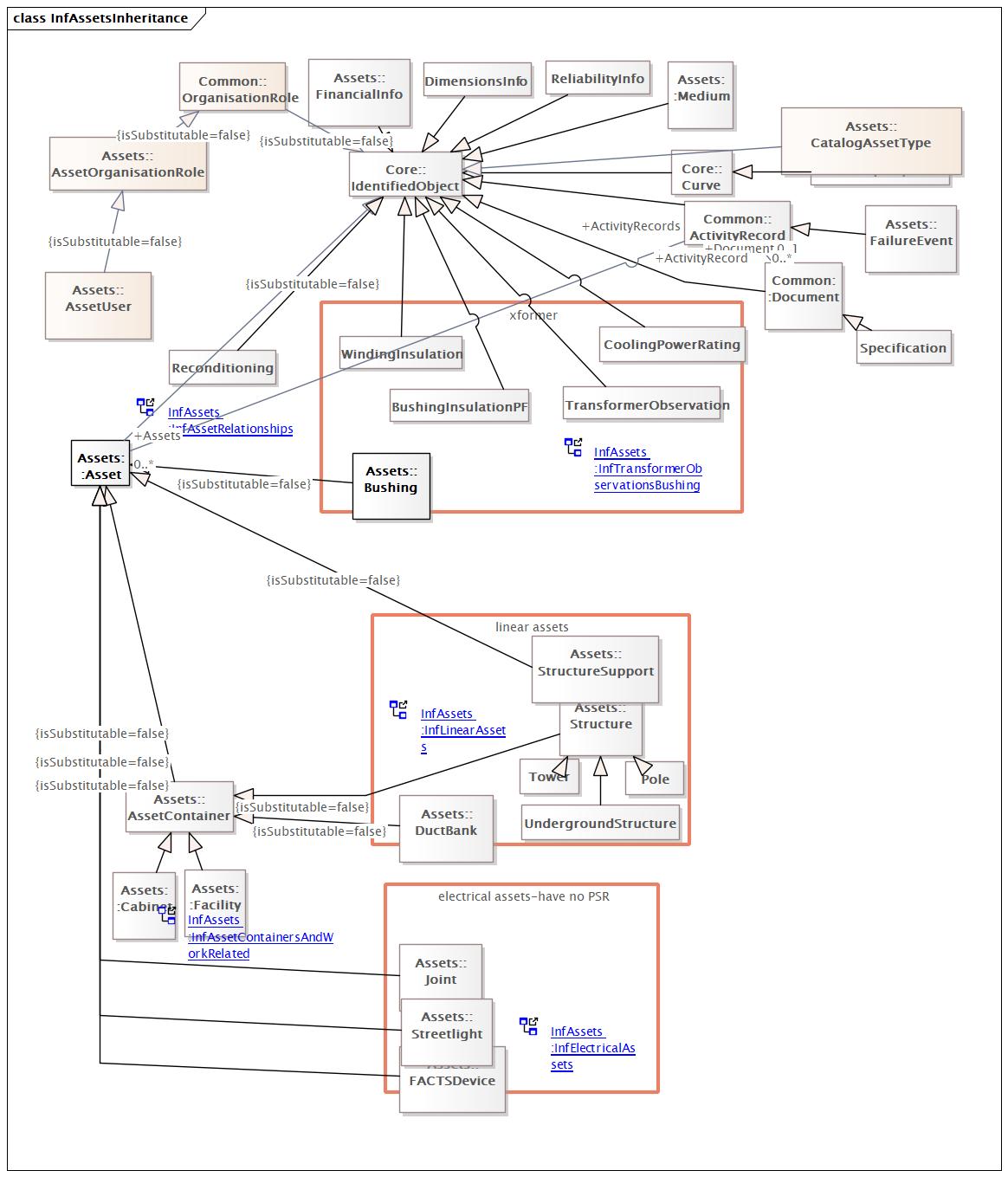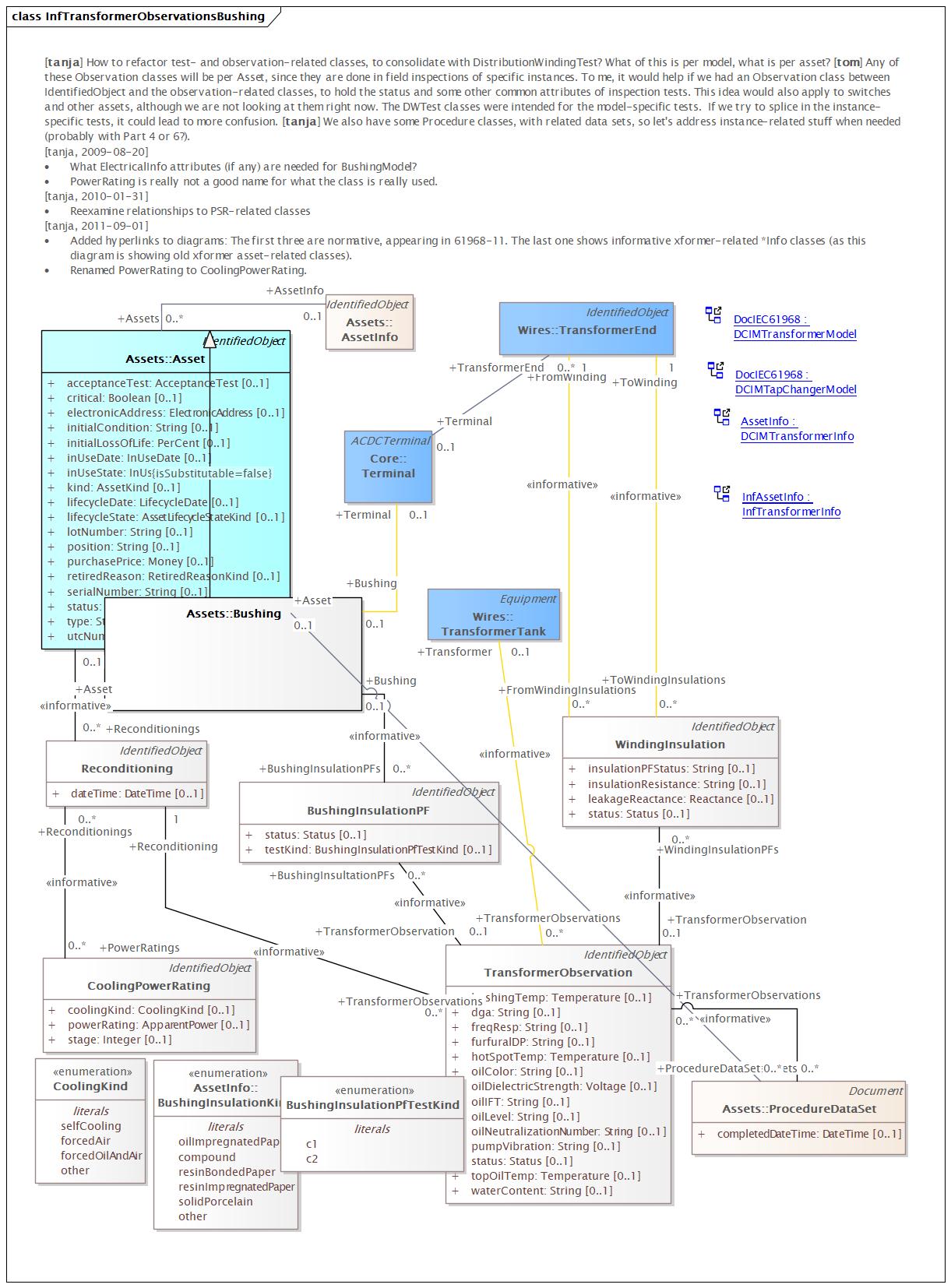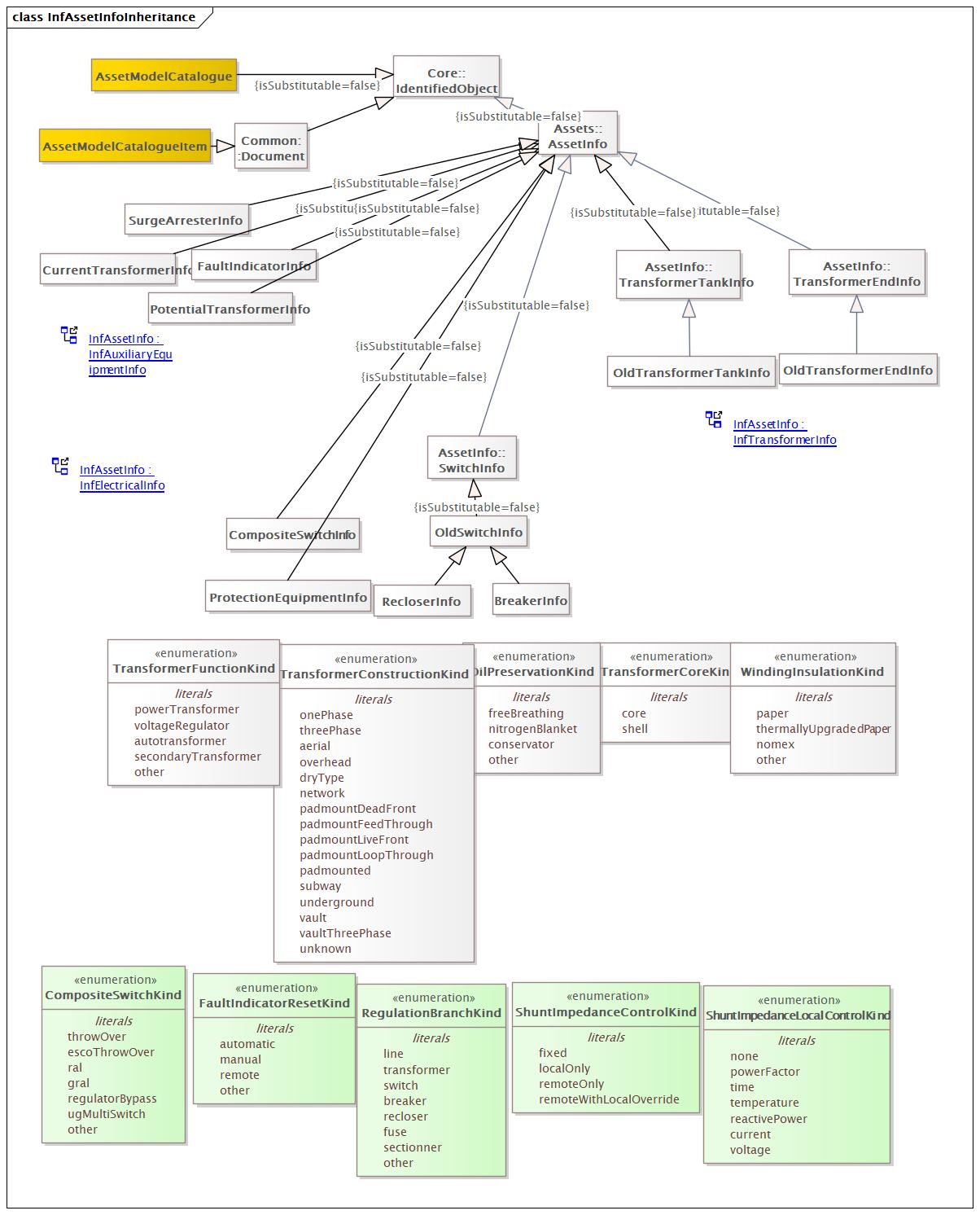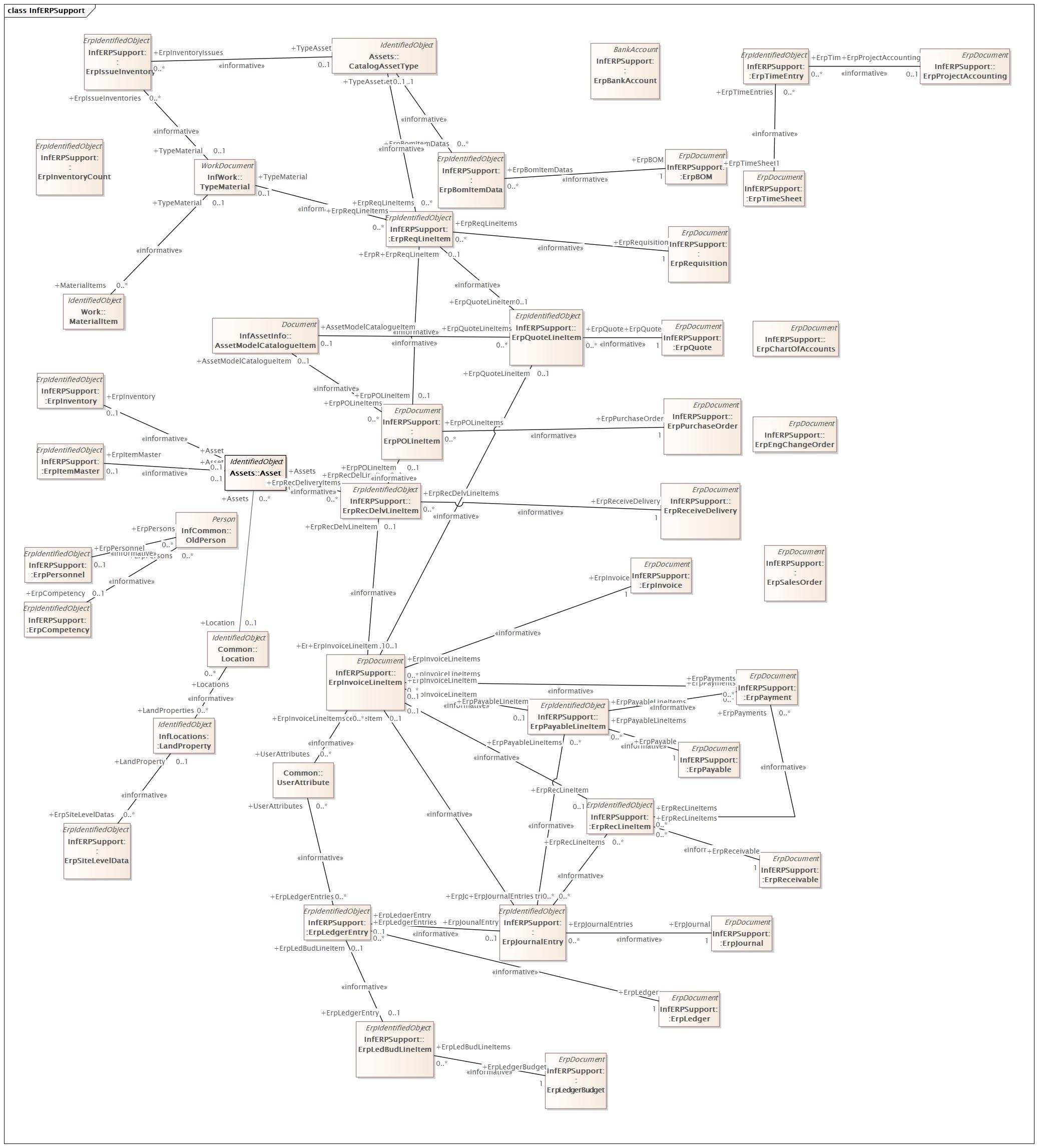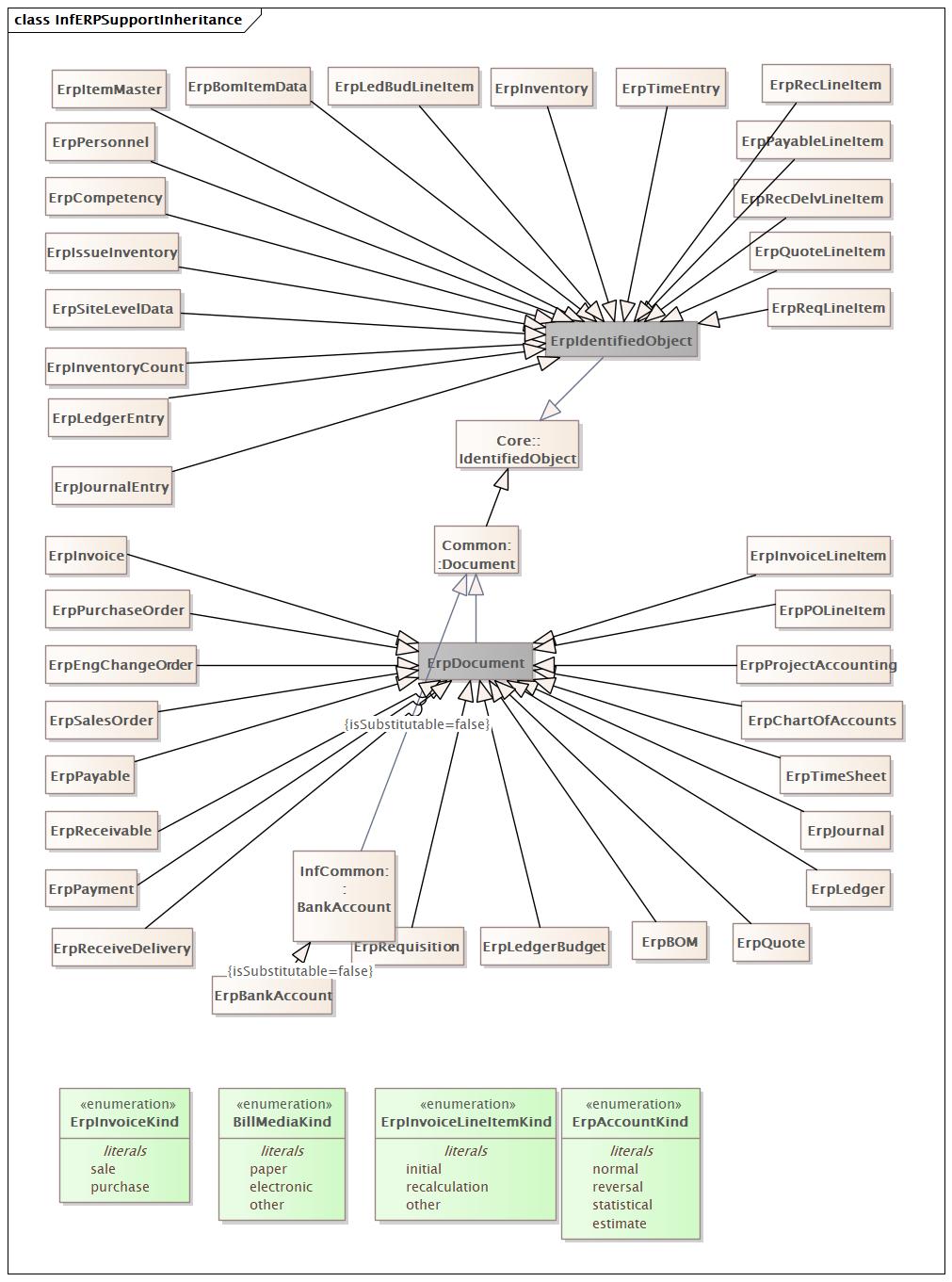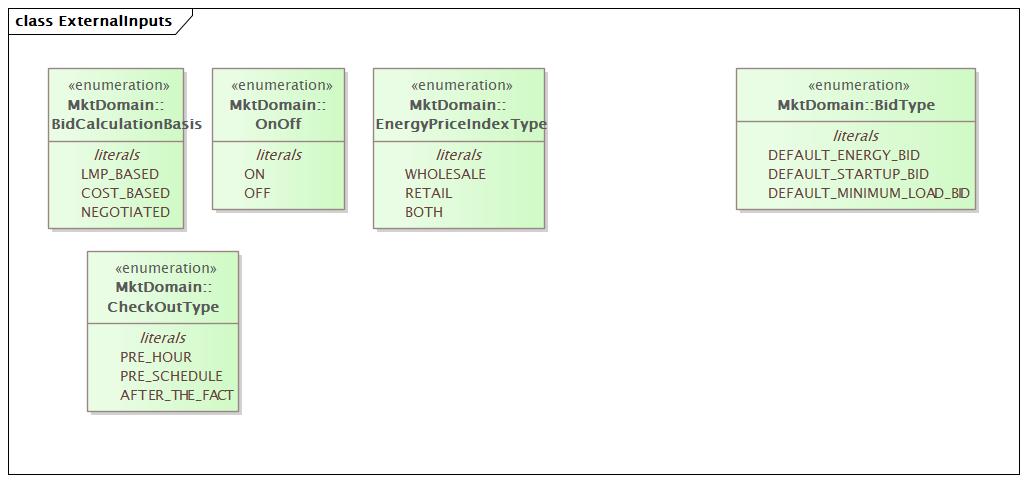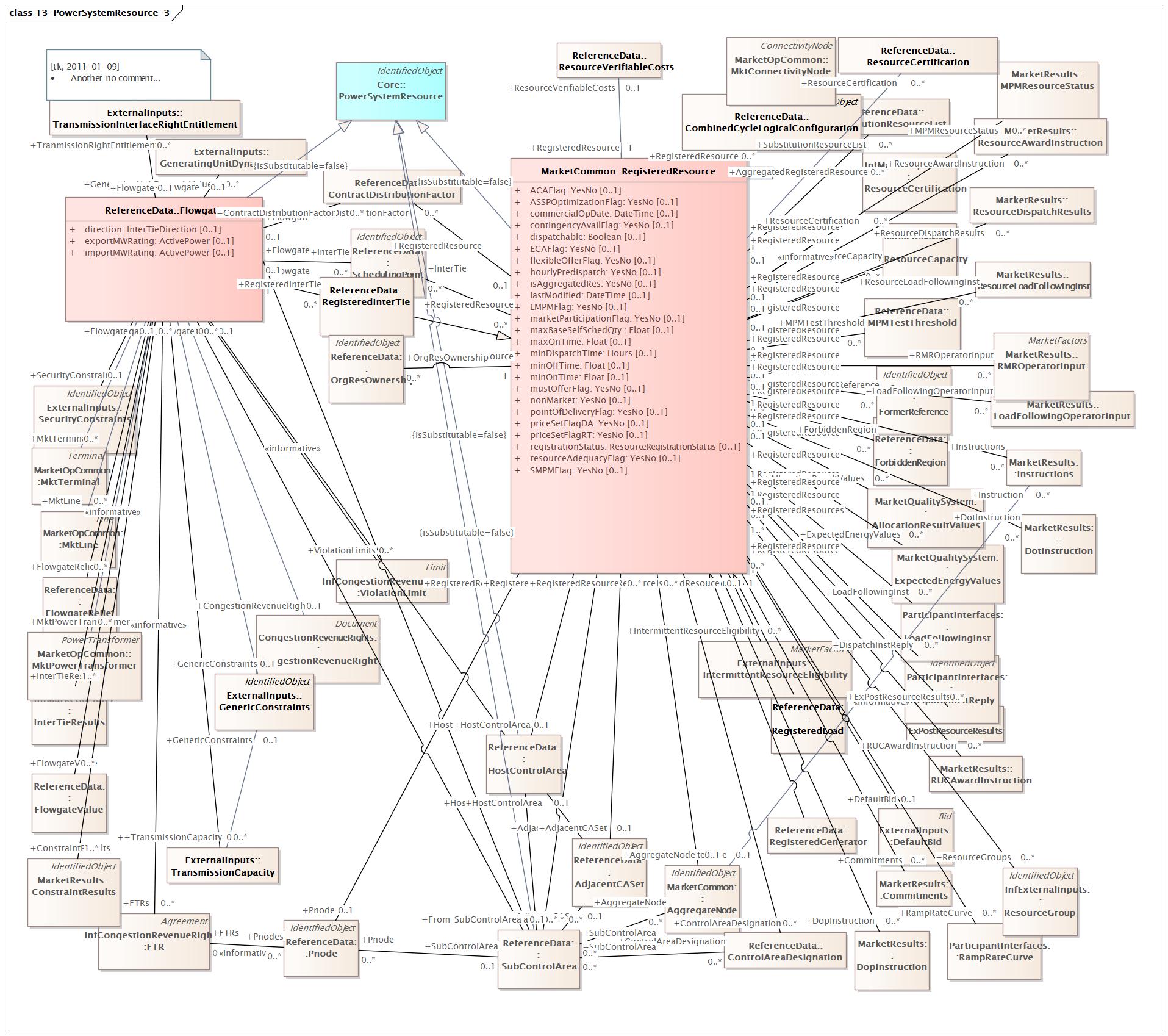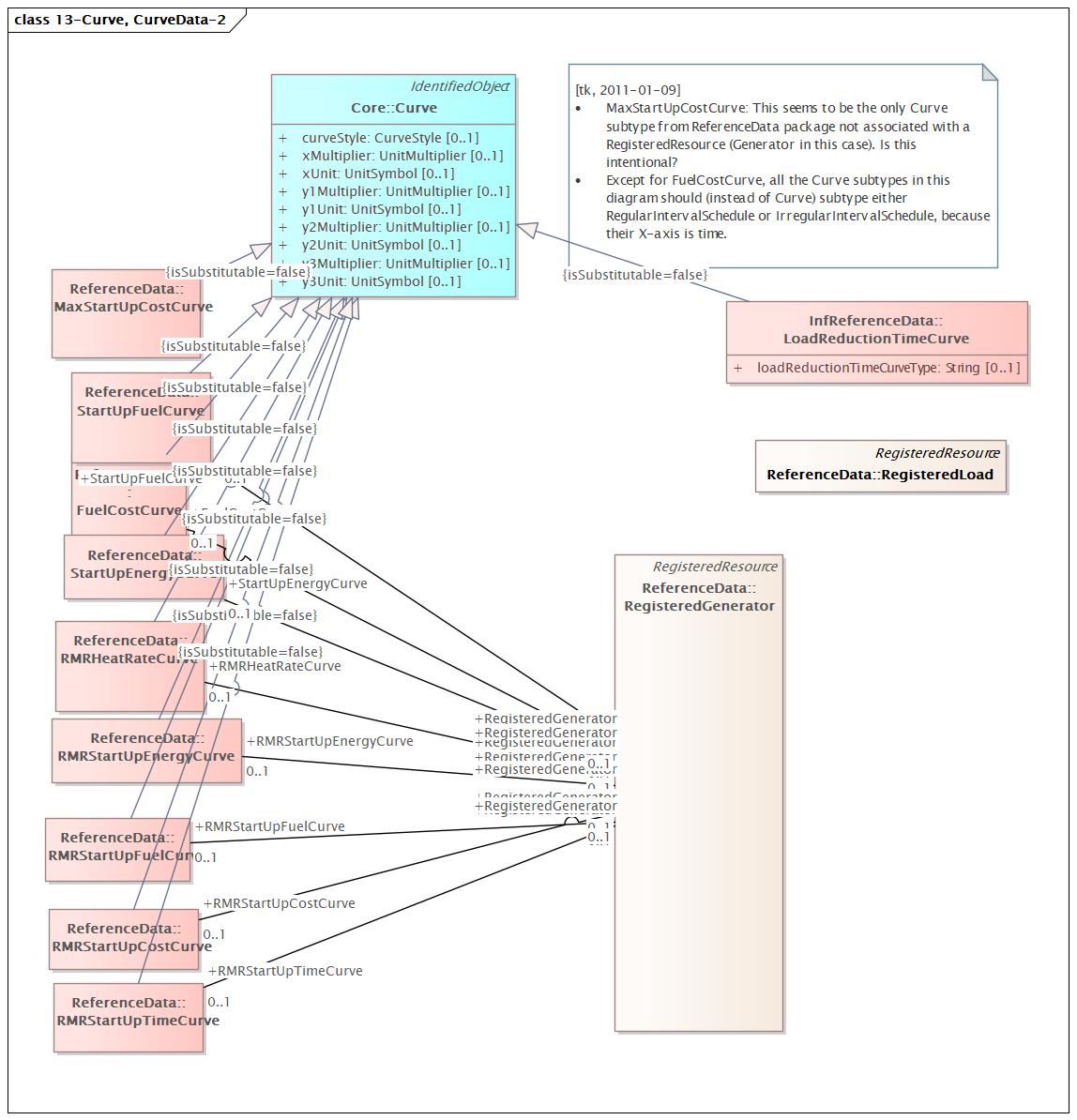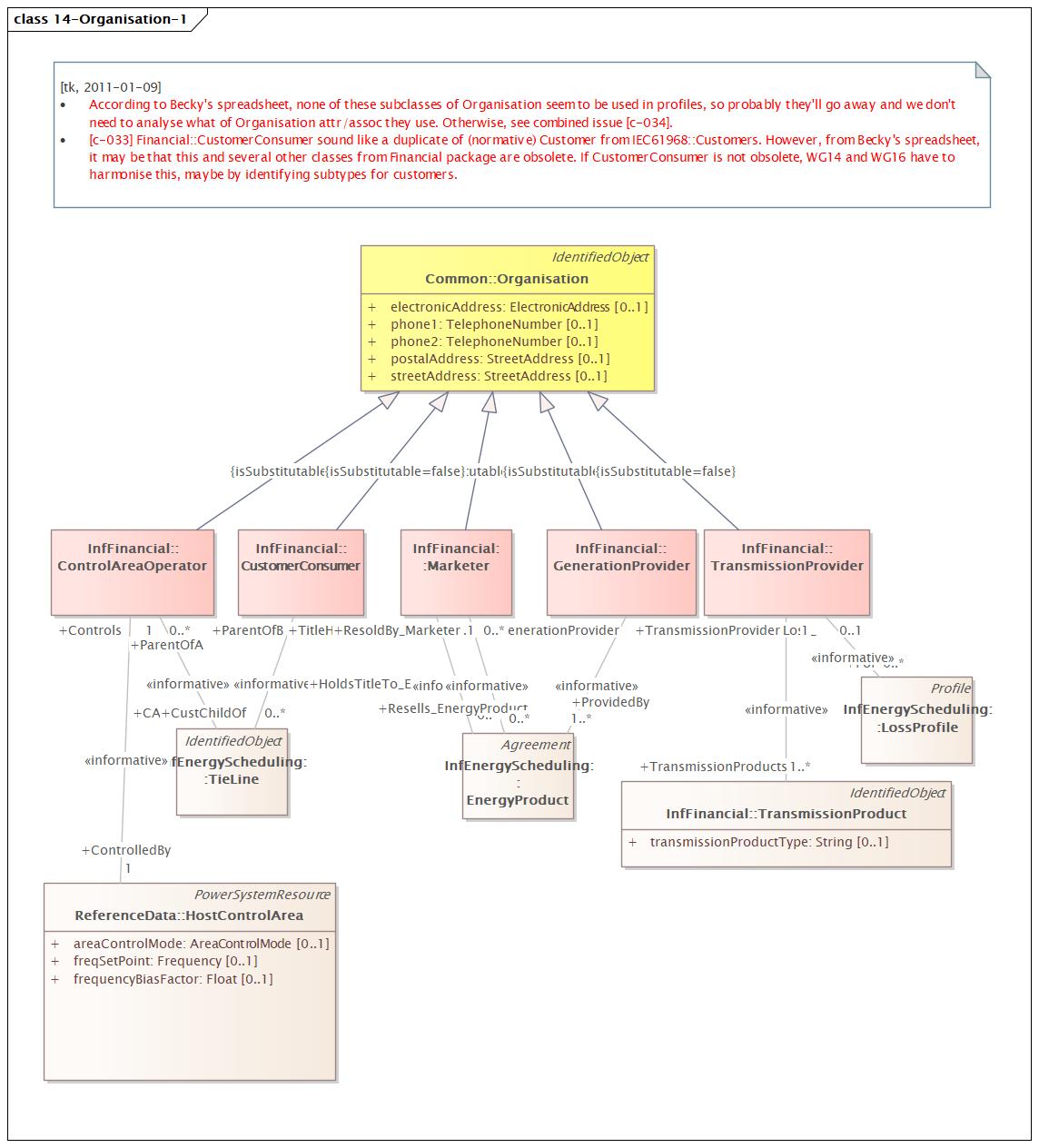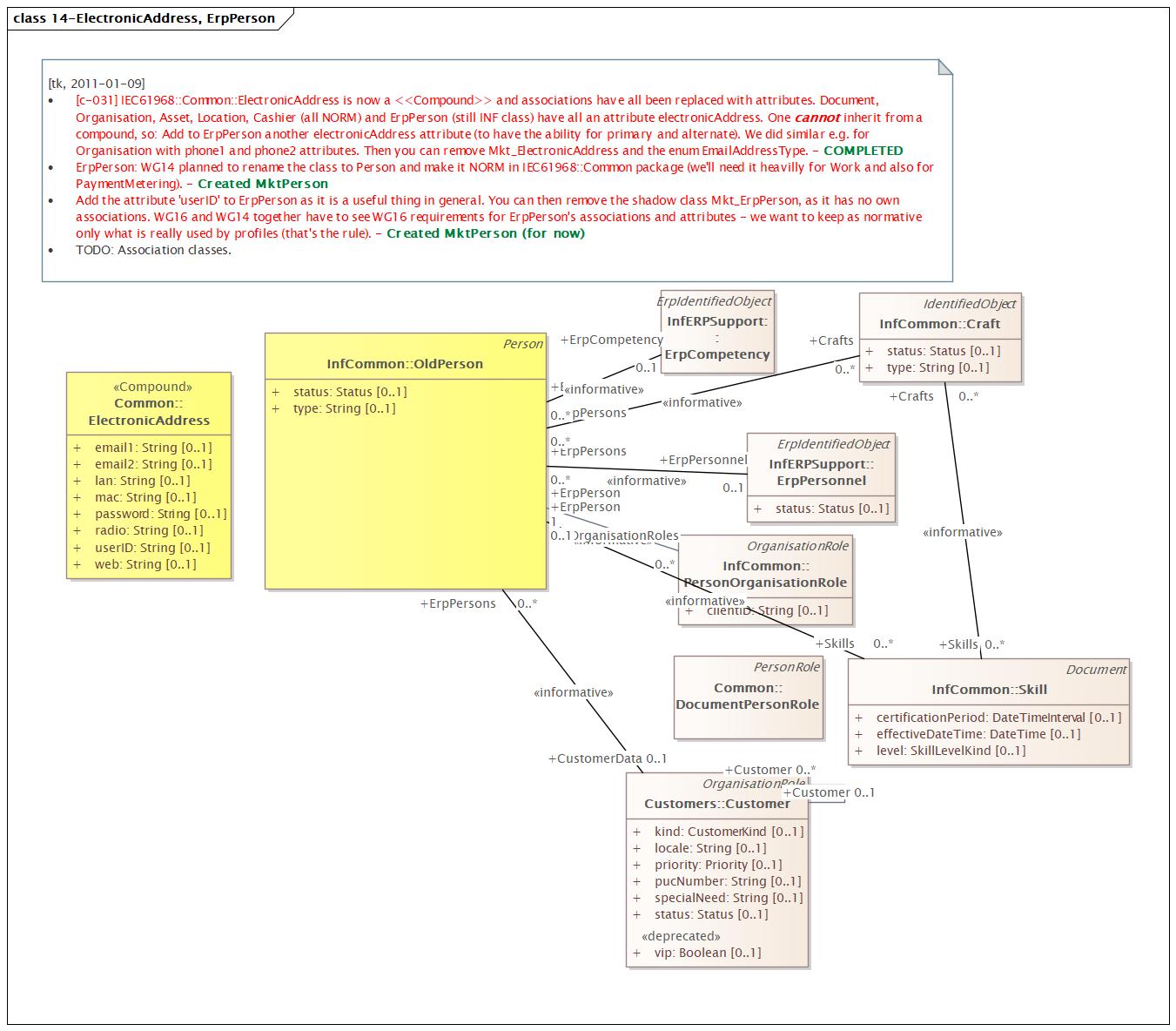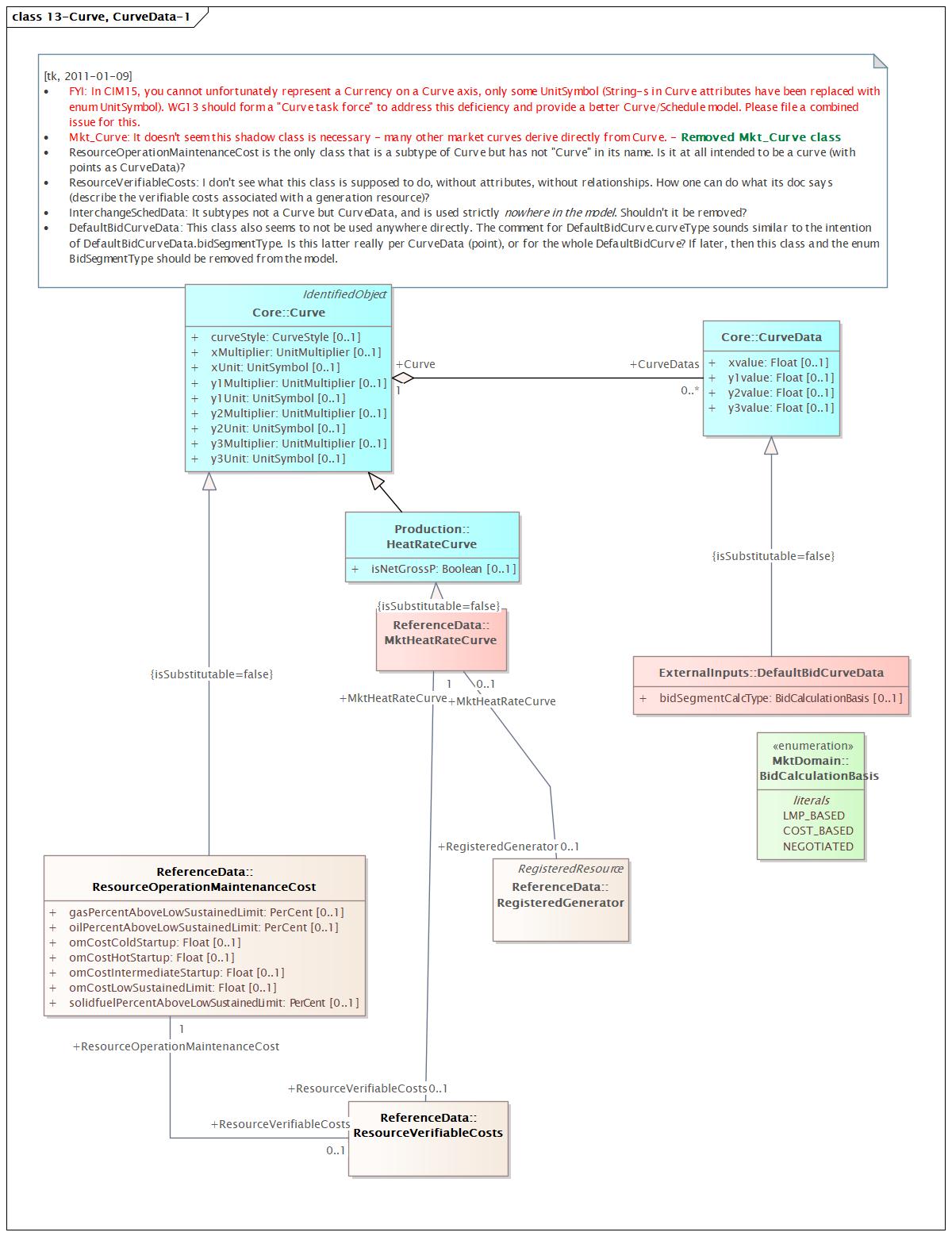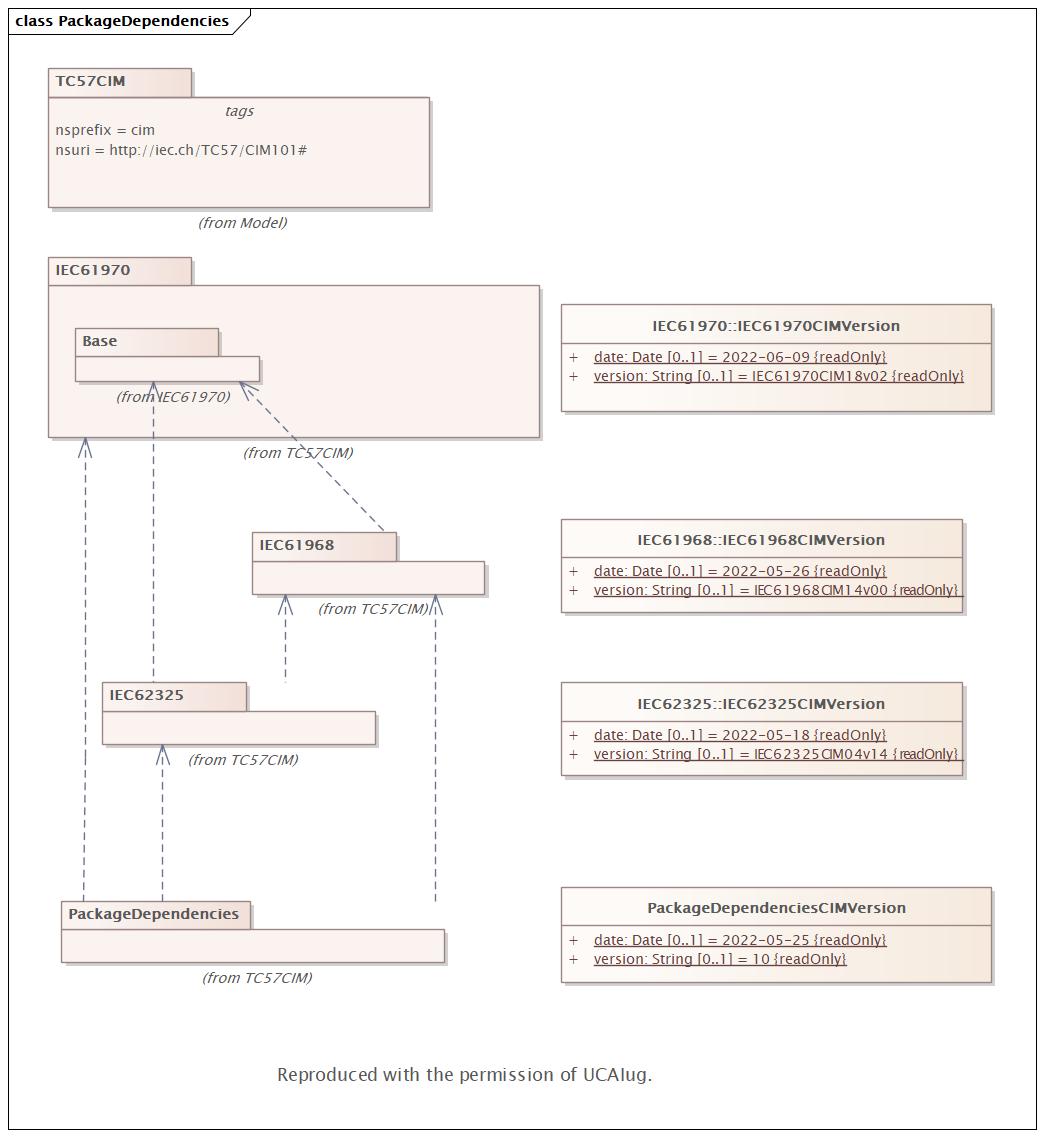Changed Classes:
Attributes:
|
Baseline Model |
Destination Model |
||||||||||||||||||||
|---|---|---|---|---|---|---|---|---|---|---|---|---|---|---|---|---|---|---|---|---|---|
|
multiplier |
Attribute 'multiplier' Metadata:
|
0..1 |
multiplier |
Attribute 'multiplier' Metadata:
|
0..1 | ||||||||||||||||
|
unit |
Attribute 'unit' Metadata:
|
0..1 |
unit |
Attribute 'unit' Metadata:
|
0..1 | ||||||||||||||||
Changed Diagrams:
Diagram:
|
Baseline Model |
Destination Model |
|---|---|
|
|
|
Changed Classes:
Links:
Association:
|
Baseline Model |
|
Destination Model |
||||||||||||
|---|---|---|---|---|---|---|---|---|---|---|---|---|---|---|
|
|
|
|
|
Source Role End Changes |
|
Target Role End Changes |
||||||||||||
|---|---|---|---|---|---|---|---|---|---|---|---|---|---|---|
|
|
|
|
Association:
|
Baseline Model |
|
Destination Model |
||||||||||||
|---|---|---|---|---|---|---|---|---|---|---|---|---|---|---|
|
|
|
|
|
Source Role End Changes |
|
Target Role End Changes |
||||||||||||
|---|---|---|---|---|---|---|---|---|---|---|---|---|---|---|
|
|
|
|
Links:
Association:
|
Baseline Model |
|
Destination Model |
||||||||||||
|---|---|---|---|---|---|---|---|---|---|---|---|---|---|---|
|
|
|
|
|
Source Role End Changes |
|
Target Role End Changes |
||||||||||||
|---|---|---|---|---|---|---|---|---|---|---|---|---|---|---|
|
|
|
|
||||||||||||
Attributes:
|
Baseline Model |
Destination Model |
||||||||||||||||||||
|---|---|---|---|---|---|---|---|---|---|---|---|---|---|---|---|---|---|---|---|---|---|
|
aggregate |
Attribute 'aggregate' Metadata:
|
0..1 |
The aggregate flag provides an alternative way of representing an aggregated (equivalent) element. It is applicable in cases when the dedicated classes for equivalent equipment do not have all of the attributes necessary to represent the required level of detail. In case the flag is set to “true” the single instance of equipment represents multiple pieces of equipment that have been modelled together as an aggregate equivalent obtained by a network reduction procedure. Examples would be power transformers or synchronous machines operating in parallel modelled as a single aggregate power transformer or aggregate synchronous machine. The attribute is not used for EquivalentBranch, EquivalentShunt and EquivalentInjection. |
aggregate |
Attribute 'aggregate' Metadata:
|
0..1 |
The aggregate flag provides an alternative way of representing an aggregated (equivalent) element. It is applicable in cases when the dedicated classes for equivalent equipment do not have all of the attributes necessary to represent the required level of detail. In case the flag is set to “true” the single instance of equipment represents multiple pieces of equipment that have been modelled together as an aggregate equivalent obtained by a network reduction procedure. Examples would be power transformers or synchronous machines operating in parallel modelled as a single aggregate power transformer or aggregate synchronous machine. The attribute is not used for EquivalentBranch, EquivalentShunt, EquivalentInjection and ExternalNetworkInjection. |
||||||||||||||
Changed Classes:
Metadata:
|
|
Baseline Model |
Destination Model |
|---|---|---|
|
Notes |
A non linear shunt compensator has bank or section admittance values that differ. The attributes g, b, g0 and b0 of the associated NonlinearShuntCompensatorPoint describe the total conductance and admittance of a NonlinearShuntCompensatorPoint at a section number specified by NonlinearShuntCompensatorPoint.sectionNumber. |
A non linear shunt compensator has bank or section admittance values that differ. The attributes gTotal, bTotal, g0Total and b0Total of the associated NonlinearShuntCompensatorPoint describe the total conductance and admittance of a NonlinearShuntCompensatorPoint at a section number specified by NonlinearShuntCompensatorPoint.sectionNumber. |
Metadata:
|
|
Baseline Model |
Destination Model |
|---|---|---|
|
Notes |
A per phase non linear shunt compensator has bank or section admittance values that differ. The attributes g and b of the associated NonlinearShuntCompensatorPhasePoint describe the total conductance and admittance of a NonlinearShuntCompensatorPhasePoint at a section number specified by NonlinearShuntCompensatorPhasePoint.sectionNumber. |
A per phase non linear shunt compensator has bank or section admittance values that differ. The attributes gTotal and bTotal of the associated NonlinearShuntCompensatorPhasePoint describe the total conductance and admittance of a NonlinearShuntCompensatorPhasePoint at a section number specified by NonlinearShuntCompensatorPhasePoint.sectionNumber. |
Metadata:
|
|
Baseline Model |
Destination Model |
|---|---|---|
|
Notes |
Describes behaviour specific to tap changers, e.g. how the voltage at the end of a line varies with the load level and compensation of the voltage drop by tap adjustment. |
Describes behaviour specific to tap changers, e.g. how the voltage at the end of a line varies with the load level and compensation of the voltage drop by tap adjustment. When TapChanger.ctRatio and .ptRatio are present, RegulatingControl.targetVoltage RegulatingControl.targetDeadband, RegulatingControl.maxAllowedTargetValue, RegulatingControl.minAllowedTargetValue as well as TapChangerControl.maxLimitVoltage and TapChangerControl.minLimitVoltage shall be expressed in terms of secondary CT currents and PT voltages. |
Attributes:
|
Baseline Model |
Destination Model |
||||||||||||||||||||||||||||||||||||||||||||||||||||||||||||||||||||
|---|---|---|---|---|---|---|---|---|---|---|---|---|---|---|---|---|---|---|---|---|---|---|---|---|---|---|---|---|---|---|---|---|---|---|---|---|---|---|---|---|---|---|---|---|---|---|---|---|---|---|---|---|---|---|---|---|---|---|---|---|---|---|---|---|---|---|---|---|---|
|
limitVoltage |
Attribute 'limitVoltage' Metadata:
|
0..1 |
Maximum allowed regulated voltage on the PT secondary, regardless of line drop compensation. Sometimes referred to as first-house protection. |
maxLimitVoltage |
Attribute 'maxLimitVoltage' Metadata:
|
0..1 |
Maximum allowed regulated voltage on the PT secondary. This is the locally measured secondary voltage, including the effect of any line drop compensation. Typically used for distribution circuit voltage regulator. Sometimes referred to as first-house protection. If utilized, then TapChanger.ptRatio must be supplied. |
||||||||||||||||||||||||||||||||||||||||||||||||||||||||||||||
|
ATTRIBUTE DOES NOT EXIST |
minLimitVoltage |
Attribute 'minLimitVoltage' Metadata:
|
0..1 |
Minimum allowed regulated voltage on the PT secondary. This is the locally measured secondary voltage, including the effect of any line drop compensation. Typically used for distribution circuit voltage regulator. Sometimes referred to as last-house protection. If utilized, then TapChanger.ptRatio must be supplied. |
|||||||||||||||||||||||||||||||||||||||||||||||||||||||||||||||||
Metadata:
|
|
Baseline Model |
Destination Model |
|---|---|---|
|
Notes |
A per phase non linear shunt compensator bank or section admittance value. The number of NonlinearShuntCompenstorPhasePoint instances associated with a NonlinearShuntCompensatorPhase shall be equal to ShuntCompensatorPhase.maximumSections. ShuntCompensator.sections shall only be set to one of the NonlinearShuntCompenstorPhasePoint.sectionNumber. There is no interpolation between NonlinearShuntCompenstorPhasePoint-s. |
A per phase non linear shunt compensator bank or section admittance value. The number of NonlinearShuntCompensatorPhasePoint instances associated with a NonlinearShuntCompensatorPhase shall be equal to ShuntCompensatorPhase.maximumSections. ShuntCompensator.sections shall only be set to one of the NonlinearShuntCompensatorPhasePoint.sectionNumber. There is no interpolation between NonlinearShuntCompensatorPhasePoint-s. |
Attributes:
|
Baseline Model |
Destination Model |
||||||||||||||||||||||||||
|---|---|---|---|---|---|---|---|---|---|---|---|---|---|---|---|---|---|---|---|---|---|---|---|---|---|---|---|
|
b |
Attribute 'b' Metadata:
|
0..1 |
Positive sequence shunt (charging) susceptance per section. |
bTotal |
Attribute 'bTotal' Metadata:
|
0..1 |
Total positive sequence shunt (charging) susceptance at section noted by sectionNumber. |
||||||||||||||||||||
|
g |
Attribute 'g' Metadata:
|
0..1 |
Positive sequence shunt (charging) conductance per section. |
gTotal |
Attribute 'gTotal' Metadata:
|
0..1 |
Total positive sequence shunt (charging) conductance at section noted by sectionNumber. |
||||||||||||||||||||
Metadata:
|
|
Baseline Model |
Destination Model |
|---|---|---|
|
Notes |
A PowerTransformerEnd is associated with each Terminal of a PowerTransformer.The impedance values r, r0, x, and x0 of a PowerTransformerEnd represents a star equivalent as follows.1) for a two Terminal PowerTransformer the high voltage (TransformerEnd.endNumber=1) PowerTransformerEnd has non zero values on r, r0, x, and x0 while the low voltage (TransformerEnd.endNumber=2) PowerTransformerEnd has zero values for r, r0, x, and x0. Parameters are always provided, even if the PowerTransformerEnds have the same rated voltage. In this case, the parameters are provided at the PowerTransformerEnd which has TransformerEnd.endNumber equal to 1.2) for a three Terminal PowerTransformer the three PowerTransformerEnds represent a star equivalent with each leg in the star represented by r, r0, x, and x0 values.3) For a three Terminal transformer each PowerTransformerEnd shall have g, g0, b and b0 values corresponding to the no load losses distributed on the three PowerTransformerEnds. The total no load loss shunt impedances may also be placed at one of the PowerTransformerEnds, preferably the end numbered 1, having the shunt values on end 1. This is the preferred way.4) for a PowerTransformer with more than three Terminals the PowerTransformerEnd impedance values cannot be used. Instead use the TransformerMeshImpedance or split the transformer into multiple PowerTransformers.Each PowerTransformerEnd must be contained by a PowerTransformer. Because a PowerTransformerEnd (or any other object) can not be contained by more than one parent, a PowerTransformerEnd can not have an association to an EquipmentContainer (Substation, VoltageLevel, etc). |
A PowerTransformerEnd is associated with each Terminal of a PowerTransformer.The impedance values r, r0, x, and x0 of a PowerTransformerEnd represents a star equivalent as follows.1) two PowerTransformerEnd-s shall be defined for a two Terminal PowerTransformer even if the two PowerTransformerEnd-s have the same rated voltage. The high voltage PowerTransformerEnd (TransformerEnd.endNumber=1) is the one used to exchange resistances (r, r0) and reactances (x, x0) of the PowerTransformer while the low voltage PowerTransformerEnd (TransformerEnd.endNumber=2) shall have zero impedance values.2) for a three Terminal PowerTransformer the three PowerTransformerEnds represent a star equivalent with each leg in the star represented by r, r0, x, and x0 values.3) For a three Terminal transformer each PowerTransformerEnd shall have g, g0, b and b0 values corresponding to the no load losses distributed on the three PowerTransformerEnds. The total no load loss shunt impedances may also be placed at one of the PowerTransformerEnds, preferably the end numbered 1, having the shunt values on end 1. This is the preferred way.4) for a PowerTransformer with more than three Terminals the PowerTransformerEnd impedance values cannot be used. Instead use the TransformerMeshImpedance or split the transformer into multiple PowerTransformers.Each PowerTransformerEnd must be contained by a PowerTransformer. Because a PowerTransformerEnd (or any other object) can not be contained by more than one parent, a PowerTransformerEnd can not have an association to an EquipmentContainer (Substation, VoltageLevel, etc). |
Attributes:
|
Baseline Model |
Destination Model |
||||||||||||||||||||||||||||||||||||||||||||||||||||||||||||||||||||
|---|---|---|---|---|---|---|---|---|---|---|---|---|---|---|---|---|---|---|---|---|---|---|---|---|---|---|---|---|---|---|---|---|---|---|---|---|---|---|---|---|---|---|---|---|---|---|---|---|---|---|---|---|---|---|---|---|---|---|---|---|---|---|---|---|---|---|---|---|---|
|
«deprecated» xMin |
Attribute '«deprecated» xMin' Metadata:
|
0..1 |
The reactance depend on the tap position according to a "u" shaped curve. The minimum reactance (xMin) appear at the mid tap position. PowerTransformerEnd.x shall be consistent with PhaseTapChangerLinear.xMin and PhaseTapChangerNonLinear.xMin. In case of inconsistency, PowerTransformerEnd.x shall be used. |
ATTRIBUTE REMOVED FROM MODEL |
|||||||||||||||||||||||||||||||||||||||||||||||||||||||||||||||||
Links:
Association:
Metadata:
|
|
Baseline Model |
Destination Model |
|---|---|---|
|
Notes |
A WireAssemblyInfo is used to compute the PerLengthParameter data in the Wires package |
|
|
Baseline Model |
|
Destination Model |
||||||||||||
|---|---|---|---|---|---|---|---|---|---|---|---|---|---|---|
|
|
|
|
|
Source Role End Changes |
|
Target Role End Changes |
||||||||||||
|---|---|---|---|---|---|---|---|---|---|---|---|---|---|---|
|
|
|
|
||||||||||||
Links:
Association:
|
Baseline Model |
|
Destination Model |
||||||||||||
|---|---|---|---|---|---|---|---|---|---|---|---|---|---|---|
|
|
|
|
|
Source Role End Changes |
|
Target Role End Changes |
||||||||||||
|---|---|---|---|---|---|---|---|---|---|---|---|---|---|---|
|
|
|
|
Attributes:
|
Baseline Model |
Destination Model |
||||||||||||||||||||
|---|---|---|---|---|---|---|---|---|---|---|---|---|---|---|---|---|---|---|---|---|---|
|
grounded |
Attribute 'grounded' Metadata:
|
0..1 |
(for Yn and Zn connections) True if the neutral is solidly grounded. |
grounded |
Attribute 'grounded' Metadata:
|
0..1 |
Used only for Yn and Zn connections indicated by PowerTransformerEnd.connectionKind. If true, the neutral is grounded and attributes TransformerEnd.rground and TransformerEnd.xground are required. If false, the attributes TransformerEnd.rground and TransformerEnd.xground are not considered. |
||||||||||||||
|
rground |
Attribute 'rground' Metadata:
|
0..1 |
(for Yn and Zn connections) Resistance part of neutral impedance where 'grounded' is true. |
rground |
Attribute 'rground' Metadata:
|
0..1 |
Resistance part of neutral impedance. Zero indicates solidly grounded or grounded through a reactor. |
||||||||||||||
|
xground |
Attribute 'xground' Metadata:
|
0..1 |
(for Yn and Zn connections) Reactive part of neutral impedance where 'grounded' is true. |
xground |
Attribute 'xground' Metadata:
|
0..1 |
Reactance part of neutral impedance. Zero indicates solidly grounded or grounded through a reactor. |
||||||||||||||
Links:
Association:
|
Baseline Model |
|
Destination Model |
||||||||||||
|---|---|---|---|---|---|---|---|---|---|---|---|---|---|---|
|
|
|
|
|
Source Role End Changes |
|
Target Role End Changes |
|||||||||||||||||||||
|---|---|---|---|---|---|---|---|---|---|---|---|---|---|---|---|---|---|---|---|---|---|---|---|
|
|
|
|
Association:
|
Baseline Model |
|
Destination Model |
||||||||||||
|---|---|---|---|---|---|---|---|---|---|---|---|---|---|---|
|
|
|
|
|
Source Role End Changes |
|
Target Role End Changes |
|||||||||||||||
|---|---|---|---|---|---|---|---|---|---|---|---|---|---|---|---|---|---|
|
|
|
|
Links:
Association:
|
Baseline Model |
|
Destination Model |
||||||||||||
|---|---|---|---|---|---|---|---|---|---|---|---|---|---|---|
|
|
|
|
|
Source Role End Changes |
|
Target Role End Changes |
||||||||||||
|---|---|---|---|---|---|---|---|---|---|---|---|---|---|---|
|
|
|
|
Metadata:
|
|
Baseline Model |
Destination Model |
|---|---|---|
|
Notes |
Specifies a set of equipment that works together to control a power system quantity such as voltage or flow. Remote bus voltage control is possible by specifying the controlled terminal located at some place remote from the controlling equipment.The specified terminal shall be associated with the connectivity node of the controlled point. The most specific subtype of RegulatingControl shall be used in case such equipment participate in the control, e.g. TapChangerControl for tap changers.For flow control, load sign convention is used, i.e. positive sign means flow out from a TopologicalNode (bus) into the conducting equipment.The attribute minAllowedTargetValue and maxAllowedTargetValue are required in the following cases:- For a power generating module operated in power factor control mode to specify maximum and minimum power factor values;- Whenever it is necessary to have an off center target voltage for the tap changer regulator. For instance, due to long cables to off shore wind farms and the need to have a simpler setup at the off shore transformer platform, the voltage is controlled from the land at the connection point for the off shore wind farm. Since there usually is a voltage rise along the cable, there is typical and overvoltage of up 3 to 4 kV compared to the on shore station. Thus in normal operation the tap changer on the on shore station is operated with a target set point, which is in the lower parts of the dead band.The attributes minAllowedTargetValue and maxAllowedTargetValue are not related to the attribute targetDeadband and thus they are not treated as an alternative of the targetDeadband. They are needed due to limitations in the local substation controller. The attribute targetDeadband is used to prevent the power flow from move the tap position in circles (hunting) that is to be used regardless of the attributes minAllowedTargetValue and maxAllowedTargetValue. |
Specifies a set of equipment that works together to control a power system quantity such as voltage or flow. Remote bus voltage control is possible by specifying the controlled terminal located at some place remote from the controlling equipment.The specified terminal shall be associated with the connectivity node of the controlled point. The most specific subtype of RegulatingControl shall be used in case such equipment participate in the control, e.g. TapChangerControl for tap changers.For flow control, load sign convention is used, i.e. positive sign means flow out from a TopologicalNode (bus) into the conducting equipment.The attribute minAllowedTargetValue and maxAllowedTargetValue are required in the following cases:- For a power generating module operated in power factor control mode to specify maximum and minimum power factor values;- Whenever it is necessary to have an off center target voltage for the tap changer regulator. For instance, due to long cables to off shore wind farms and the need to have a simpler setup at the off shore transformer platform, the voltage is controlled from the land at the connection point for the off shore wind farm. Since there usually is a voltage rise along the cable, there is typical and overvoltage of up 3 to 4 kV compared to the on shore station. Thus in normal operation the tap changer on the on shore station is operated with a target set point, which is in the lower parts of the dead band.The attributes minAllowedTargetValue and maxAllowedTargetValue are not related to the attribute targetDeadband and thus they are not treated as an alternative of the targetDeadband. They are needed due to limitations in the local substation controller. The attribute targetDeadband is used to prevent the power flow from moving the tap position in circles (hunting) that is to be used regardless of the attributes minAllowedTargetValue and maxAllowedTargetValue. |
Attributes:
|
Baseline Model |
Destination Model |
||||||||||||||||||||
|---|---|---|---|---|---|---|---|---|---|---|---|---|---|---|---|---|---|---|---|---|---|
|
discrete |
Attribute 'discrete' Metadata:
|
0..1 |
The regulation is performed in a discrete mode. This applies to equipment with discrete controls, e.g. tap changers and shunt compensators. |
discrete |
Attribute 'discrete' Metadata:
|
0..1 |
If true, indicates that regulation is performed in the simulation in a discrete mode. If false, indicates that non-discrete regulation is used in the simulation. This applies to equipment with discrete controls, e.g. tap changers and shunt compensators. |
||||||||||||||
|
maxAllowedTargetValue |
Attribute 'maxAllowedTargetValue' Metadata:
|
0..1 |
Maximum allowed target value (RegulatingControl.targetValue). |
maxAllowedTargetValue |
Attribute 'maxAllowedTargetValue' Metadata:
|
0..1 |
Maximum allowed target value. See also RegulatingControl description. |
||||||||||||||
|
minAllowedTargetValue |
Attribute 'minAllowedTargetValue' Metadata:
|
0..1 |
Minimum allowed target value (RegulatingControl.targetValue). |
minAllowedTargetValue |
Attribute 'minAllowedTargetValue' Metadata:
|
0..1 |
Minimum allowed target value. See also RegulatingControl description. |
||||||||||||||
|
targetDeadband |
Attribute 'targetDeadband' Metadata:
|
0..1 |
This is a deadband used with discrete control to avoid excessive update of controls like tap changers and shunt compensator banks while regulating. The units of those appropriate for the mode. The attribute shall be a positive value or zero. If RegulatingControl.discrete is set to "false", the RegulatingControl.targetDeadband is to be ignored.Note that for instance, if the targetValue is 100 kV and the targetDeadband is 2 kV the range is from 99 to 101 kV. |
targetDeadband |
Attribute 'targetDeadband' Metadata:
|
0..1 |
This is the deadband set on the controller. It is used with discrete control to avoid excessive tap changes in tap changers and state changes in shunt compensator banks while regulating. The units in which deadband is expressed are based on RegulatingControl.mode. The attribute shall be a positive value or zero. If RegulatingControl.discrete is set to "false", the RegulatingControl.targetDeadband is to be ignored in simulations. If TapChanger.ctRatio or TapChanger.ptRatio are populated, deadband shall be expressed in secondary units.Note that for instance, if the targetValue is 100 kV and the targetDeadband is 2 kV the range is from 99 to 101 kV. |
||||||||||||||
|
targetValue |
Attribute 'targetValue' Metadata:
|
0..1 |
The target value specified for case input. This value can be used for the target value without the use of schedules. The value has the units appropriate to the mode attribute. |
targetValue |
Attribute 'targetValue' Metadata:
|
0..1 |
The target value set on the controller. It is the starting value for a steady state solution. This value can be used for the target value without the use of schedules. The value has the units appropriate to the mode attribute. If used for a TapChangerControl and if TapChanger.ctRatio or TapChanger.ptRatio are populated, the target value shall be expressed in secondary units. As an example, with PT ratio of 60 on a 12.47 KV distribution system, a phase to ground PT has a ratio of 7200 volts primary to 120 volts secondary. If the required primary target is 7128 volts for a single phase tap changer then the value of targetValue would equal 118.8 volts secondary (7128/60). |
||||||||||||||
|
targetValueUnitMultiplier |
Attribute 'targetValueUnitMultiplier' Metadata:
|
0..1 |
Specify the multiplier for used for the targetValue. |
targetValueUnitMultiplier |
Attribute 'targetValueUnitMultiplier' Metadata:
|
0..1 |
Specifies the multiplier used for the targetValue, targetDeadband, .maxAllowedTargetValue, .minAllowedTargetValue as well as TapChangerControl.maxLimitVoltage and TapChangerControl.minLimitVoltage. |
||||||||||||||
Attributes:
|
Baseline Model |
Destination Model |
||||||||||||||||||||
|---|---|---|---|---|---|---|---|---|---|---|---|---|---|---|---|---|---|---|---|---|---|
|
grounded |
Attribute 'grounded' Metadata:
|
0..1 |
Used for Yn and Zn connections. True if the neutral is solidly grounded. |
grounded |
Attribute 'grounded' Metadata:
|
0..1 |
Required for Yn and I connections (as represented by ShuntCompensator.phaseConnection). True if the neutral is solidly grounded. |
||||||||||||||
Links:
Association:
|
Baseline Model |
|
Destination Model |
||||||||||||
|---|---|---|---|---|---|---|---|---|---|---|---|---|---|---|
|
|
|
|
|
Source Role End Changes |
|
Target Role End Changes |
||||||||||||
|---|---|---|---|---|---|---|---|---|---|---|---|---|---|---|
|
|
|
|
||||||||||||
Association:
|
Baseline Model |
|
Destination Model |
||||||||||||
|---|---|---|---|---|---|---|---|---|---|---|---|---|---|---|
|
|
|
|
|
Source Role End Changes |
|
Target Role End Changes |
||||||||||||
|---|---|---|---|---|---|---|---|---|---|---|---|---|---|---|
|
|
|
|
Metadata:
|
|
Baseline Model |
Destination Model |
|---|---|---|
|
Notes |
A non linear shunt compensator bank or section admittance value. The number of NonlinearShuntCompenstorPoint instances associated with a NonlinearShuntCompensator shall be equal to ShuntCompensator.maximumSections. ShuntCompensator.sections shall only be set to one of the NonlinearShuntCompenstorPoint.sectionNumber. There is no interpolation between NonlinearShuntCompenstorPoint-s. |
A non linear shunt compensator bank or section admittance value. The number of NonlinearShuntCompensatorPoint instances associated with a NonlinearShuntCompensator shall be equal to ShuntCompensator.maximumSections. ShuntCompensator.sections shall only be set to one of the NonlinearShuntCompensatorPoint.sectionNumber. There is no interpolation between NonlinearShuntCompensatorPoint-s. |
Attributes:
|
Baseline Model |
Destination Model |
||||||||||||||||||||||||||
|---|---|---|---|---|---|---|---|---|---|---|---|---|---|---|---|---|---|---|---|---|---|---|---|---|---|---|---|
|
b0 |
Attribute 'b0' Metadata:
|
0..1 |
Zero sequence shunt (charging) susceptance per section. |
b0Total |
Attribute 'b0Total' Metadata:
|
0..1 |
Total zero sequence shunt (charging) susceptance at section noted by sectionNumber. |
||||||||||||||||||||
|
b |
Attribute 'b' Metadata:
|
0..1 |
Positive sequence shunt (charging) susceptance per section. |
bTotal |
Attribute 'bTotal' Metadata:
|
0..1 |
Total positive sequence shunt (charging) susceptance at section noted by sectionNumber. |
||||||||||||||||||||
|
g0 |
Attribute 'g0' Metadata:
|
0..1 |
Zero sequence shunt (charging) conductance per section. |
g0Total |
Attribute 'g0Total' Metadata:
|
0..1 |
Total zero sequence shunt (charging) conductance at section noted by sectionNumber. |
||||||||||||||||||||
|
g |
Attribute 'g' Metadata:
|
0..1 |
Positive sequence shunt (charging) conductance per section. |
gTotal |
Attribute 'gTotal' Metadata:
|
0..1 |
Total positive sequence shunt (charging) conductance at section noted by sectionNumber. |
||||||||||||||||||||
Attributes:
|
Baseline Model |
Destination Model |
||||||||||||||||||||||||||||||||||||||||||||||||||||||||||||||||||||
|---|---|---|---|---|---|---|---|---|---|---|---|---|---|---|---|---|---|---|---|---|---|---|---|---|---|---|---|---|---|---|---|---|---|---|---|---|---|---|---|---|---|---|---|---|---|---|---|---|---|---|---|---|---|---|---|---|---|---|---|---|---|---|---|---|---|---|---|---|---|
|
ATTRIBUTE DOES NOT EXIST |
referenceVoltage |
Attribute 'referenceVoltage' Metadata:
|
0..1 |
The reference voltage for which the capability curve is valid. |
|||||||||||||||||||||||||||||||||||||||||||||||||||||||||||||||||
Links:
Association:
|
Baseline Model |
|
Destination Model |
||||||||||||
|---|---|---|---|---|---|---|---|---|---|---|---|---|---|---|
|
|
|
|
|
Source Role End Changes |
|
Target Role End Changes |
|||||||||||||||||||||
|---|---|---|---|---|---|---|---|---|---|---|---|---|---|---|---|---|---|---|---|---|---|---|---|
|
|
|
|
Association:
|
Baseline Model |
|
Destination Model |
||||||||||||
|---|---|---|---|---|---|---|---|---|---|---|---|---|---|---|
|
|
|
|
|
Source Role End Changes |
|
Target Role End Changes |
|||||||||||||||
|---|---|---|---|---|---|---|---|---|---|---|---|---|---|---|---|---|---|
|
|
|
|
Association:
|
Baseline Model |
|
Destination Model |
||||||||||||
|---|---|---|---|---|---|---|---|---|---|---|---|---|---|---|
|
|
|
|
|
Source Role End Changes |
|
Target Role End Changes |
||||||||||||
|---|---|---|---|---|---|---|---|---|---|---|---|---|---|---|
|
|
|
|
Attributes:
|
Baseline Model |
Destination Model |
||||||||||||||||||||||||||||||||||||||||||||||||||||||||||||||||||||
|---|---|---|---|---|---|---|---|---|---|---|---|---|---|---|---|---|---|---|---|---|---|---|---|---|---|---|---|---|---|---|---|---|---|---|---|---|---|---|---|---|---|---|---|---|---|---|---|---|---|---|---|---|---|---|---|---|---|---|---|---|---|---|---|---|---|---|---|---|---|
|
«deprecated» r |
Attribute '«deprecated» r' Metadata:
|
0..1 |
Equivalent resistance (RG) of generator. RG is considered for the calculation of all currents, except for the calculation of the peak current ip. Used for short circuit data exchange according to IEC 60909. |
ATTRIBUTE REMOVED FROM MODEL |
|||||||||||||||||||||||||||||||||||||||||||||||||||||||||||||||||
|
«deprecated» r0 |
Attribute '«deprecated» r0' Metadata:
|
0..1 |
Zero sequence resistance of the synchronous machine. |
ATTRIBUTE REMOVED FROM MODEL |
|||||||||||||||||||||||||||||||||||||||||||||||||||||||||||||||||
|
«deprecated» rn |
Attribute '«deprecated» rn' Metadata:
|
0..1 |
Negative sequence Thevenin resistance. |
ATTRIBUTE REMOVED FROM MODEL |
|||||||||||||||||||||||||||||||||||||||||||||||||||||||||||||||||
|
«deprecated» x |
Attribute '«deprecated» x' Metadata:
|
0..1 |
Positive sequence Thevenin reactance. |
ATTRIBUTE REMOVED FROM MODEL |
|||||||||||||||||||||||||||||||||||||||||||||||||||||||||||||||||
|
«deprecated» x0 |
Attribute '«deprecated» x0' Metadata:
|
0..1 |
Zero sequence Thevenin reactance. |
ATTRIBUTE REMOVED FROM MODEL |
|||||||||||||||||||||||||||||||||||||||||||||||||||||||||||||||||
|
«deprecated» xn |
Attribute '«deprecated» xn' Metadata:
|
0..1 |
Negative sequence Thevenin reactance. |
ATTRIBUTE REMOVED FROM MODEL |
|||||||||||||||||||||||||||||||||||||||||||||||||||||||||||||||||
Metadata:
|
|
Baseline Model |
Destination Model |
|---|---|---|
|
Notes |
This class represents the external network and is used for IEC 60909 calculations. |
This class represents the external network and is used for IEC 60909 calculations. It is only used if EquivalentInjection cannot provide the details required by IEC 60909 on short circuit equivalent of an external network. |
Attributes:
|
Baseline Model |
Destination Model |
||||||||||||||||||||
|---|---|---|---|---|---|---|---|---|---|---|---|---|---|---|---|---|---|---|---|---|---|
|
grounded |
Attribute 'grounded' Metadata:
|
0..1 |
Used for Yn and Zn connections. True if the neutral is solidly grounded. |
grounded |
Attribute 'grounded' Metadata:
|
0..1 |
Required for Yn and I connections (as represented by EnergyConsumer.phaseConnection). True if the neutral is solidly grounded. |
||||||||||||||
Links:
Association:
|
Baseline Model |
|
Destination Model |
||||||||||||
|---|---|---|---|---|---|---|---|---|---|---|---|---|---|---|
|
|
|
|
|
Source Role End Changes |
|
Target Role End Changes |
||||||||||||
|---|---|---|---|---|---|---|---|---|---|---|---|---|---|---|
|
|
|
|
Attributes:
|
Baseline Model |
Destination Model |
||||||||||||||||||||||||||||||||||||||||||||||||||||||||||||||||||||
|---|---|---|---|---|---|---|---|---|---|---|---|---|---|---|---|---|---|---|---|---|---|---|---|---|---|---|---|---|---|---|---|---|---|---|---|---|---|---|---|---|---|---|---|---|---|---|---|---|---|---|---|---|---|---|---|---|---|---|---|---|---|---|---|---|---|---|---|---|---|
|
«deprecated» xMin |
Attribute '«deprecated» xMin' Metadata:
|
0..1 |
The reactance depends on the tap position according to a "u" shaped curve. The minimum reactance (xMin) appears at the mid tap position. PowerTransformerEnd.x shall be consistent with PhaseTapChangerLinear.xMin and PhaseTapChangerNonLinear.xMin. In case of inconsistency, PowerTransformerEnd.x shall be used. |
ATTRIBUTE REMOVED FROM MODEL |
|||||||||||||||||||||||||||||||||||||||||||||||||||||||||||||||||
Attributes:
|
Baseline Model |
Destination Model |
||||||||||||||||||||||||||||||||||||||||||||||||||||||||||||||||||||
|---|---|---|---|---|---|---|---|---|---|---|---|---|---|---|---|---|---|---|---|---|---|---|---|---|---|---|---|---|---|---|---|---|---|---|---|---|---|---|---|---|---|---|---|---|---|---|---|---|---|---|---|---|---|---|---|---|---|---|---|---|---|---|---|---|---|---|---|---|---|
|
ATTRIBUTE DOES NOT EXIST |
ctRatio |
Attribute 'ctRatio' Metadata:
|
0..1 |
Built-in current transformer ratio. If a value is specified, then RegulatingControl.targetValue (and RegulatingControl.targetDeadband, RegulatingControl.maxAllowedTargetValue and RegulatingControl.minAllowedTargetValue) are expressed in secondary units. |
|||||||||||||||||||||||||||||||||||||||||||||||||||||||||||||||||
|
ATTRIBUTE DOES NOT EXIST |
ptRatio |
Attribute 'ptRatio' Metadata:
|
0..1 |
Built-in potential (voltage) transformer ratio. If a value is specified, then RegulatingControl.targetValue (and RegulatingControl.targetDeadband, RegulatingControl.maxAllowedTargetValue, RegulatingControl.minAllowedTargetValue as well as TapChangerControl.maxLimitVoltage and TapChangerControl.minLimitVoltage) are expressed in secondary units. |
|||||||||||||||||||||||||||||||||||||||||||||||||||||||||||||||||
Changed Diagrams:
Metadata:
|
|
Baseline Model |
Destination Model |
|---|---|---|
|
ModifiedDate |
2022-06-10 12:00:00 |
2023-02-11 08:10:03 |
Diagram:
|
Baseline Model |
Destination Model |
|---|---|
|
|
|
Metadata:
|
|
Baseline Model |
Destination Model |
|---|---|---|
|
ModifiedDate |
2022-06-10 12:00:00 |
2023-02-11 11:24:26 |
Diagram:
|
Baseline Model |
Destination Model |
|---|---|
|
|
|
Metadata:
|
|
Baseline Model |
Destination Model |
|---|---|---|
|
ModifiedDate |
2022-06-10 12:00:00 |
2023-02-11 09:32:13 |
Diagram:
|
Baseline Model |
Destination Model |
|---|---|
|
|
|
Metadata:
|
|
Baseline Model |
Destination Model |
|---|---|---|
|
ModifiedDate |
2022-06-10 12:00:00 |
2023-02-06 23:10:10 |
Diagram:
|
Baseline Model |
Destination Model |
|---|---|
|
|
|
Package 'DCDetailedDiagrams' has no changes to the classes it contains.
Package 'DCDetailedDiagrams' has no changes to the diagrams it contains.
Package 'DocDC' has no changes to the classes it contains.
Changed Diagrams:
Metadata:
|
|
Baseline Model |
Destination Model |
|---|---|---|
|
ModifiedDate |
2022-06-10 12:11:39 |
2023-02-11 07:30:49 |
|
Notes |
|
This an example of DC symmetrical monopole. |
Diagram:
|
Baseline Model |
Destination Model |
|---|---|
|
|
|
Metadata:
|
|
Baseline Model |
Destination Model |
|---|---|---|
|
ModifiedDate |
2022-06-10 12:10:34 |
2023-02-11 07:30:37 |
|
Notes |
|
This an example of containment of bipole. |
Diagram:
|
Baseline Model |
Destination Model |
|---|---|
|
|
|
Metadata:
|
|
Baseline Model |
Destination Model |
|---|---|---|
|
ModifiedDate |
2022-06-10 12:10:34 |
2023-02-11 07:30:17 |
|
Notes |
|
This an example of DC containment symmetrical monopole. |
Diagram:
|
Baseline Model |
Destination Model |
|---|---|
|
|
|
Metadata:
|
|
Baseline Model |
Destination Model |
|---|---|---|
|
ModifiedDate |
2022-06-10 12:11:39 |
2023-02-11 07:30:58 |
|
Notes |
|
This an example of DC asymmetrical monopole. |
Diagram:
|
Baseline Model |
Destination Model |
|---|---|
|
|
|
Metadata:
|
|
Baseline Model |
Destination Model |
|---|---|---|
|
ModifiedDate |
2022-06-10 12:11:40 |
2023-02-11 07:31:10 |
|
Notes |
|
This an example of DC bipole. |
Diagram:
|
Baseline Model |
Destination Model |
|---|---|
|
|
|
Changed Classes:
Attributes:
|
Baseline Model |
Destination Model |
||||||||||||||||||||||||||||||||||||||||||||||||||||||||||||||||||||
|---|---|---|---|---|---|---|---|---|---|---|---|---|---|---|---|---|---|---|---|---|---|---|---|---|---|---|---|---|---|---|---|---|---|---|---|---|---|---|---|---|---|---|---|---|---|---|---|---|---|---|---|---|---|---|---|---|---|---|---|---|---|---|---|---|---|---|---|---|---|
|
ATTRIBUTE DOES NOT EXIST |
referenceVoltage |
Attribute 'referenceVoltage' Metadata:
|
0..1 |
The reference voltage for which the capability curve is valid. |
|||||||||||||||||||||||||||||||||||||||||||||||||||||||||||||||||
Links:
Association:
|
Baseline Model |
|
Destination Model |
||||||||||||
|---|---|---|---|---|---|---|---|---|---|---|---|---|---|---|
|
|
|
|
|
Source Role End Changes |
|
Target Role End Changes |
||||||||||||||||||
|---|---|---|---|---|---|---|---|---|---|---|---|---|---|---|---|---|---|---|---|---|
|
|
|
|
Attributes:
|
Baseline Model |
Destination Model |
||||||||||||||||||||||||||||||||||||||||||||||||||||||||||||||||||||
|---|---|---|---|---|---|---|---|---|---|---|---|---|---|---|---|---|---|---|---|---|---|---|---|---|---|---|---|---|---|---|---|---|---|---|---|---|---|---|---|---|---|---|---|---|---|---|---|---|---|---|---|---|---|---|---|---|---|---|---|---|---|---|---|---|---|---|---|---|---|
|
ATTRIBUTE DOES NOT EXIST |
locked |
Attribute 'locked' Metadata:
|
0..1 |
If true, the switch is locked. The resulting switch state is a combination of locked and DCSwitch.open attributes as follows:<ul> <li>locked=true and DCSwitch.open=true. The resulting state is open and locked;</li> <li>locked=false and DCSwitch.open=true. The resulting state is open;</li> <li>locked=false and DCSwitch.open=false. The resulting state is closed.</li></ul> |
|||||||||||||||||||||||||||||||||||||||||||||||||||||||||||||||||
|
ATTRIBUTE DOES NOT EXIST |
normalOpen |
Attribute 'normalOpen' Metadata:
|
0..1 |
The attribute is used in cases when no Measurement for the status value is present. If the DCSwitch has a status measurement the Discrete.normalValue is expected to match with the DCSwitch.normalOpen. |
|||||||||||||||||||||||||||||||||||||||||||||||||||||||||||||||||
|
ATTRIBUTE DOES NOT EXIST |
open |
Attribute 'open' Metadata:
|
0..1 |
The attribute tells if the switch is considered open when used as input to topology processing. |
|||||||||||||||||||||||||||||||||||||||||||||||||||||||||||||||||
|
ATTRIBUTE DOES NOT EXIST |
retained |
Attribute 'retained' Metadata:
|
0..1 |
Branch is retained in the topological solution. The flow through retained switches will normally be calculated in power flow. |
|||||||||||||||||||||||||||||||||||||||||||||||||||||||||||||||||
Links:
Association:
|
Baseline Model |
|
Destination Model |
||||||||||||
|---|---|---|---|---|---|---|---|---|---|---|---|---|---|---|
|
|
|
|
|
Source Role End Changes |
|
Target Role End Changes |
||||||||||||||||||
|---|---|---|---|---|---|---|---|---|---|---|---|---|---|---|---|---|---|---|---|---|
|
|
|
|
Changed Diagrams:
Metadata:
|
|
Baseline Model |
Destination Model |
|---|---|---|
|
ModifiedDate |
2022-06-10 12:08:44 |
2023-02-06 21:40:51 |
Diagram:
|
Baseline Model |
Destination Model |
|---|---|
|
|
|
Metadata:
|
|
Baseline Model |
Destination Model |
|---|---|---|
|
ModifiedDate |
2022-06-10 12:08:00 |
2023-02-07 20:35:19 |
Diagram:
|
Baseline Model |
Destination Model |
|---|---|
|
|
|
Changed Classes:
Metadata:
|
|
Baseline Model |
Destination Model |
|---|---|---|
|
Notes |
This class represents equivalent injections (generation or load). Voltage regulation is allowed only at the point of connection. |
This class represents equivalent injections (generation or load). Voltage regulation is allowed only at the point of connection. Using EquivalentInjection to model a distribution network equivalent is recommended practice instead of using ExternalNetworkInjection-s if it is not necessary that the equivalent contains detailed information representing a short circuit equivalent according to IEC 60909 which is relevant for short circuit studies. |
Links:
Association:
|
Baseline Model |
|
Destination Model |
||||||||||||
|---|---|---|---|---|---|---|---|---|---|---|---|---|---|---|
|
|
|
|
|
Source Role End Changes |
|
Target Role End Changes |
||||||||||||
|---|---|---|---|---|---|---|---|---|---|---|---|---|---|---|
|
|
|
|
Changed Diagrams:
Diagram:
|
Baseline Model |
Destination Model |
|---|---|
|
|
|
Changed Classes:
Links:
Association:
|
Baseline Model |
|
Destination Model |
||||||||||||
|---|---|---|---|---|---|---|---|---|---|---|---|---|---|---|
|
|
|
|
|
Source Role End Changes |
|
Target Role End Changes |
||||||||||||
|---|---|---|---|---|---|---|---|---|---|---|---|---|---|---|
|
|
|
|
||||||||||||
Links:
Association:
|
Baseline Model |
|
Destination Model |
||||||||||||
|---|---|---|---|---|---|---|---|---|---|---|---|---|---|---|
|
|
|
|
|
Source Role End Changes |
|
Target Role End Changes |
||||||||||||
|---|---|---|---|---|---|---|---|---|---|---|---|---|---|---|
|
|
|
|
||||||||||||
Association:
|
Baseline Model |
|
Destination Model |
||||||||||||
|---|---|---|---|---|---|---|---|---|---|---|---|---|---|---|
|
|
|
|
|
Source Role End Changes |
|
Target Role End Changes |
||||||||||||
|---|---|---|---|---|---|---|---|---|---|---|---|---|---|---|
|
|
|
|
Package 'DocICCPConfiguration' has no changes to the classes it contains.
Changed Diagrams:
Metadata:
|
|
Baseline Model |
Destination Model |
|---|---|---|
|
ParentPackage |
DetailedDiagrams |
DocICCPConfiguration |
Diagram:
|
Baseline Model |
Destination Model |
|---|---|
|
|
|
Package 'DocBase' has no changes to the classes it contains.
Package 'Base' has no changes to the classes it contains.
Package 'Base' has no changes to the diagrams it contains.
Changed Classes:
Links:
Association:
|
Baseline Model |
|
Destination Model |
||||||||||||
|---|---|---|---|---|---|---|---|---|---|---|---|---|---|---|
|
|
|
|
|
Source Role End Changes |
|
Target Role End Changes |
||||||||||||
|---|---|---|---|---|---|---|---|---|---|---|---|---|---|---|
|
|
|
|
||||||||||||
Association:
|
Baseline Model |
|
Destination Model |
||||||||||||
|---|---|---|---|---|---|---|---|---|---|---|---|---|---|---|
|
|
|
|
|
Source Role End Changes |
|
Target Role End Changes |
||||||||||||
|---|---|---|---|---|---|---|---|---|---|---|---|---|---|---|
|
|
|
|
||||||||||||
Changed Classes:
Links:
Association:
|
Baseline Model |
|
Destination Model |
||||||||||||
|---|---|---|---|---|---|---|---|---|---|---|---|---|---|---|
|
|
|
|
|
Source Role End Changes |
|
Target Role End Changes |
||||||||||||
|---|---|---|---|---|---|---|---|---|---|---|---|---|---|---|
|
|
|
|
||||||||||||
Association:
|
Baseline Model |
|
Destination Model |
||||||||||||
|---|---|---|---|---|---|---|---|---|---|---|---|---|---|---|
|
|
|
|
|
Source Role End Changes |
|
Target Role End Changes |
||||||||||||
|---|---|---|---|---|---|---|---|---|---|---|---|---|---|---|
|
|
|
|
||||||||||||
Changed Classes:
Metadata:
|
|
Baseline Model |
Destination Model |
|---|---|---|
|
Notes |
|
Shunt compensator whose behaviour is described by reference to a standard model <font color="#0f0f0f">or by definition of a user-defined model.</font> |
Links:
Association:
|
Baseline Model |
|
Destination Model |
||||||||||||
|---|---|---|---|---|---|---|---|---|---|---|---|---|---|---|
|
|
|
|
|
Source Role End Changes |
|
Target Role End Changes |
||||||||||||
|---|---|---|---|---|---|---|---|---|---|---|---|---|---|---|
|
|
|
|
||||||||||||
Changed Classes:
Attributes:
|
Baseline Model |
Destination Model |
||||||||||||||||||||
|---|---|---|---|---|---|---|---|---|---|---|---|---|---|---|---|---|---|---|---|---|---|
|
vcmpflag |
Attribute 'vcmpflag' Metadata:
|
0..1 |
1 (true) – use current compensation, 0 (false) – use reactive droop |
vcmpflag |
Attribute 'vcmpflag' Metadata:
|
0..1 |
True (1) – use current compensation, 0 (false) – use reactive droop. |
||||||||||||||
Attributes:
|
Baseline Model |
Destination Model |
||||||||||||||||||||
|---|---|---|---|---|---|---|---|---|---|---|---|---|---|---|---|---|---|---|---|---|---|
|
pqflag |
Attribute 'pqflag' Metadata:
|
0..1 |
1 (true)– P priority and 0 (false) – Q priority on the current limits. |
pqflag |
Attribute 'pqflag' Metadata:
|
0..1 |
True (1)– P priority and 0 (false) – Q priority on the current limits. |
||||||||||||||
|
rateFlag |
Attribute 'rateFlag' Metadata:
|
0..1 |
0 (false) – rrpwr represents active-current ramp rate; 1 (true) – rrpwr represents active-power ramp rate. Typical value = 0 (false). |
rateFlag |
Attribute 'rateFlag' Metadata:
|
0..1 |
False (0) – rrpwr represents active-current ramp rate; 1 (true) – rrpwr represents active-power ramp rate. Typical value = 0 (false). |
||||||||||||||
Attributes:
|
Baseline Model |
Destination Model |
||||||||||||||||||||
|---|---|---|---|---|---|---|---|---|---|---|---|---|---|---|---|---|---|---|---|---|---|
|
pqflag |
Attribute 'pqflag' Metadata:
|
0..1 |
1 (true)– P priority and 0 (false) – Q priority on the current limits. |
pqflag |
Attribute 'pqflag' Metadata:
|
0..1 |
True (1)– P priority and 0 (false) – Q priority on the current limits. |
||||||||||||||
|
rateFlag |
Attribute 'rateFlag' Metadata:
|
0..1 |
0 (false) – rrpwr represents active-current ramp rate; 1 (true) – rrpwr represents active-power ramp rate. Typical value = 0 (false). |
rateFlag |
Attribute 'rateFlag' Metadata:
|
0..1 |
False (0) – rrpwr represents active-current ramp rate; 1 (true) – rrpwr represents active-power ramp rate. Typical value = 0 (false). |
||||||||||||||
|
wmax |
Attribute 'wmax' Metadata:
|
0..1 |
Upper limit on the PLL (wmax) |
wmax |
Attribute 'wmax' Metadata:
|
0..1 |
Upper limit on the PLL (wmax). |
||||||||||||||
|
wmin |
Attribute 'wmin' Metadata:
|
0..1 |
Lower limit on the PLL (wmin) |
wmin |
Attribute 'wmin' Metadata:
|
0..1 |
Lower limit on the PLL (wmin). |
||||||||||||||
Package 'StandardModels' has no changes to the diagrams it contains.
Changed Classes:
Attributes:
|
Baseline Model |
Destination Model |
||||||||||||||||||||||||||||||||||||||||||||||||||||||||||||||||||||
|---|---|---|---|---|---|---|---|---|---|---|---|---|---|---|---|---|---|---|---|---|---|---|---|---|---|---|---|---|---|---|---|---|---|---|---|---|---|---|---|---|---|---|---|---|---|---|---|---|---|---|---|---|---|---|---|---|---|---|---|---|---|---|---|---|---|---|---|---|---|
|
ATTRIBUTE DOES NOT EXIST |
integer |
Attribute 'integer' Metadata:
|
1..1 |
Integer is derived from decimal by fixing the value of fraction digits to be 0 and disallowing the trailing decimal point. This results in the standard mathematical concept of the integer numbers. The value space of integer is the infinite set {...,-2,-1,0,1,2,...}, [W3C Recommendation, XML Schema Definition Language (XSD) 1.1 Part 2: Datatypes, 5 April 2012]. |
|||||||||||||||||||||||||||||||||||||||||||||||||||||||||||||||||
Links:
Association:
|
Baseline Model |
|
Destination Model |
||||||||||||
|---|---|---|---|---|---|---|---|---|---|---|---|---|---|---|
|
|
|
|
|
Source Role End Changes |
|
Target Role End Changes |
||||||||||||
|---|---|---|---|---|---|---|---|---|---|---|---|---|---|---|
|
|
|
|
||||||||||||
Links:
Generalization:
|
Baseline Model |
|
Destination Model |
||||||||||||
|---|---|---|---|---|---|---|---|---|---|---|---|---|---|---|
|
|
|
|
|
Source Role End Changes |
|
Target Role End Changes |
||||||||||||
|---|---|---|---|---|---|---|---|---|---|---|---|---|---|---|
|
|
|
|
||||||||||||
Metadata:
|
|
Baseline Model |
Destination Model |
|---|---|---|
|
Name |
ParameterDesctiptor |
ParameterDescriptor |
Links:
Generalization:
|
Baseline Model |
|
Destination Model |
||||||||||||
|---|---|---|---|---|---|---|---|---|---|---|---|---|---|---|
|
|
|
|
|
Source Role End Changes |
|
Target Role End Changes |
||||||||||||
|---|---|---|---|---|---|---|---|---|---|---|---|---|---|---|
|
|
|
|
||||||||||||
Association:
|
Baseline Model |
|
Destination Model |
||||||||||||
|---|---|---|---|---|---|---|---|---|---|---|---|---|---|---|
|
|
|
|
|
Source Role End Changes |
|
Target Role End Changes |
||||||||||||
|---|---|---|---|---|---|---|---|---|---|---|---|---|---|---|
|
|
|
|
||||||||||||
Association:
|
Baseline Model |
|
Destination Model |
||||||||||||
|---|---|---|---|---|---|---|---|---|---|---|---|---|---|---|
|
|
|
|
|
Source Role End Changes |
|
Target Role End Changes |
||||||||||||
|---|---|---|---|---|---|---|---|---|---|---|---|---|---|---|
|
|
|
|
||||||||||||
Attributes:
|
Baseline Model |
Destination Model |
||||||||||||||||||||
|---|---|---|---|---|---|---|---|---|---|---|---|---|---|---|---|---|---|---|---|---|---|
|
equationLanguageTypeOther |
Attribute 'equationLanguageTypeOther' Metadata:
|
0..1 |
Defines the language used to describe equations. |
equationLanguageTypeOther |
Attribute 'equationLanguageTypeOther' Metadata:
|
0..1 |
Defines the language used to describe equations. It is required if the attribute equationLanguageKind equals EquationLanguageKind.other. |
||||||||||||||
Attributes:
|
Baseline Model |
Destination Model |
||||||||||||||||||||||||||||||||||||||||||||||||||||||||||||||||||||
|---|---|---|---|---|---|---|---|---|---|---|---|---|---|---|---|---|---|---|---|---|---|---|---|---|---|---|---|---|---|---|---|---|---|---|---|---|---|---|---|---|---|---|---|---|---|---|---|---|---|---|---|---|---|---|---|---|---|---|---|---|---|---|---|---|---|---|---|---|---|
|
ATTRIBUTE DOES NOT EXIST |
other |
Attribute 'other' Metadata:
|
1..1 |
Other language used to express the equation. |
|||||||||||||||||||||||||||||||||||||||||||||||||||||||||||||||||
Links:
Association:
|
Baseline Model |
|
Destination Model |
||||||||||||
|---|---|---|---|---|---|---|---|---|---|---|---|---|---|---|
|
|
|
|
|
Source Role End Changes |
|
Target Role End Changes |
||||||||||||
|---|---|---|---|---|---|---|---|---|---|---|---|---|---|---|
|
|
|
|
||||||||||||
Links:
Association:
|
Baseline Model |
|
Destination Model |
||||||||||||
|---|---|---|---|---|---|---|---|---|---|---|---|---|---|---|
|
|
|
|
|
Source Role End Changes |
|
Target Role End Changes |
||||||||||||
|---|---|---|---|---|---|---|---|---|---|---|---|---|---|---|
|
|
|
|
||||||||||||
Changed Diagrams:
Metadata:
|
|
Baseline Model |
Destination Model |
|---|---|---|
|
ModifiedDate |
2022-03-18 21:39:45 |
2023-02-06 21:21:04 |
Diagram:
|
Baseline Model |
Destination Model |
|---|---|
|
|
|
Changed Classes:
Links:
Association:
|
Baseline Model |
|
Destination Model |
||||||||||||
|---|---|---|---|---|---|---|---|---|---|---|---|---|---|---|
|
|
|
|
|
Source Role End Changes |
|
Target Role End Changes |
||||||||||||
|---|---|---|---|---|---|---|---|---|---|---|---|---|---|---|
|
|
|
|
||||||||||||
Association:
|
Baseline Model |
|
Destination Model |
||||||||||||
|---|---|---|---|---|---|---|---|---|---|---|---|---|---|---|
|
|
|
|
|
Source Role End Changes |
|
Target Role End Changes |
||||||||||||
|---|---|---|---|---|---|---|---|---|---|---|---|---|---|---|
|
|
|
|
||||||||||||
Association:
|
Baseline Model |
|
Destination Model |
||||||||||||
|---|---|---|---|---|---|---|---|---|---|---|---|---|---|---|
|
|
|
|
|
Source Role End Changes |
|
Target Role End Changes |
||||||||||||
|---|---|---|---|---|---|---|---|---|---|---|---|---|---|---|
|
|
|
|
||||||||||||
Links:
Association:
|
Baseline Model |
|
Destination Model |
||||||||||||
|---|---|---|---|---|---|---|---|---|---|---|---|---|---|---|
|
|
|
|
|
Source Role End Changes |
|
Target Role End Changes |
||||||||||||
|---|---|---|---|---|---|---|---|---|---|---|---|---|---|---|
|
|
|
|
||||||||||||
Association:
|
Baseline Model |
|
Destination Model |
||||||||||||
|---|---|---|---|---|---|---|---|---|---|---|---|---|---|---|
|
|
|
|
|
Source Role End Changes |
|
Target Role End Changes |
||||||||||||
|---|---|---|---|---|---|---|---|---|---|---|---|---|---|---|
|
|
|
|
||||||||||||
Association:
|
Baseline Model |
|
Destination Model |
||||||||||||
|---|---|---|---|---|---|---|---|---|---|---|---|---|---|---|
|
|
|
|
|
Source Role End Changes |
|
Target Role End Changes |
||||||||||||
|---|---|---|---|---|---|---|---|---|---|---|---|---|---|---|
|
|
|
|
||||||||||||
Changed Diagrams:
Metadata:
|
|
Baseline Model |
Destination Model |
|---|---|---|
|
ModifiedDate |
2022-03-18 21:39:30 |
2023-02-11 12:39:01 |
Diagram:
|
Baseline Model |
Destination Model |
|---|---|
|
|
|
Package 'Dynamics' has no changes to the classes it contains.
Package 'Dynamics' has no changes to the diagrams it contains.
Changed Diagrams:
Diagram:
|
Baseline Model |
Destination Model |
|---|---|
|
|
|
Diagram:
|
Baseline Model |
Destination Model |
|---|---|
|
|
|
Changed Diagrams:
Diagram:
|
Baseline Model |
Destination Model |
|---|---|
|
|
|
Changed Diagrams:
Diagram:
|
Baseline Model |
Destination Model |
|---|---|
|
|
|
Package 'InfPart303' has no changes to the classes it contains.
Package 'InfPart303' has no changes to the diagrams it contains.
Package 'InfGrid' has no changes to the classes it contains.
Changed Diagrams:
Metadata:
|
|
Baseline Model |
Destination Model |
|---|---|---|
|
ParentPackage |
InfIEC61970 |
InfGrid |
Diagram:
|
Baseline Model |
Destination Model |
|---|---|
|
|
|
Changed Classes:
Metadata:
|
|
Baseline Model |
Destination Model |
|---|---|---|
|
Name |
IEC61970CIMVersion |
GridCIMVersion |
|
Notes |
This is the IEC 61970 CIM version number assigned to this UML model. |
This is the release version number assigned to Grid part of the CIM model. It is a point-in-time snapshot of the state of the CIM UML model that reflects a formal release of the CIM. This release version is distinct from the unique version (e.g. http://ucaiug.org/CIM/Base/1.0) associated with each package in the UML. |
|
ParentPackage |
IEC61970 |
Grid |
Attributes:
|
Baseline Model |
Destination Model |
||||||||||||||||||||||||||
|---|---|---|---|---|---|---|---|---|---|---|---|---|---|---|---|---|---|---|---|---|---|---|---|---|---|---|---|
|
date |
Attribute 'date' Metadata:
|
0..1 |
Form is YYYY-MM-DD for example for January 5, 2009 it is 2009-01-05. |
date |
Attribute 'date' Metadata:
|
0..1 |
Form is YYYY-MM-DD for example for January 5, 2009 it is 2009-01-05. |
||||||||||||||||||||
|
version |
Attribute 'version' Metadata:
|
0..1 |
Form is IEC61970CIMXXvYY where XX is the major CIM package version and the YY is the minor version. For example IEC61970CIM13v18. |
version |
Attribute 'version' Metadata:
|
0..1 |
Form is XXvYY where XX is the major CIM release version and the YY is the minor version. For example 18v03. |
||||||||||||||||||||
Changed Diagrams:
Metadata:
|
|
Baseline Model |
Destination Model |
|---|---|---|
|
ModifiedDate |
2022-06-10 12:25:44 |
2023-02-07 22:43:55 |
|
Name |
IEC61970Dependencies |
BaseDependencies |
|
Notes |
This diagram shows all 61970-301 packages and their logical dependencies. |
This diagram shows all base packages and their logical dependencies. |
|
ParentPackage |
IEC61970 |
Grid |
Diagram:
|
Baseline Model |
Destination Model |
|---|---|
|
|
|
Changed Classes:
Links:
Association:
|
Baseline Model |
|
Destination Model |
||||||||||||
|---|---|---|---|---|---|---|---|---|---|---|---|---|---|---|
|
|
|
|
|
Source Role End Changes |
|
Target Role End Changes |
||||||||||||
|---|---|---|---|---|---|---|---|---|---|---|---|---|---|---|
|
|
|
|
Links:
Association:
|
Baseline Model |
|
Destination Model |
||||||||||||
|---|---|---|---|---|---|---|---|---|---|---|---|---|---|---|
|
|
|
|
|
Source Role End Changes |
|
Target Role End Changes |
||||||||||||
|---|---|---|---|---|---|---|---|---|---|---|---|---|---|---|
|
|
|
|
Links:
Association:
|
Baseline Model |
|
Destination Model |
||||||||||||
|---|---|---|---|---|---|---|---|---|---|---|---|---|---|---|
|
|
|
|
|
Source Role End Changes |
|
Target Role End Changes |
||||||||||||
|---|---|---|---|---|---|---|---|---|---|---|---|---|---|---|
|
|
|
|
Links:
Association:
|
Baseline Model |
|
Destination Model |
||||||||||||
|---|---|---|---|---|---|---|---|---|---|---|---|---|---|---|
|
|
|
|
|
Source Role End Changes |
|
Target Role End Changes |
||||||||||||
|---|---|---|---|---|---|---|---|---|---|---|---|---|---|---|
|
|
|
|
Links:
Association:
|
Baseline Model |
|
Destination Model |
||||||||||||
|---|---|---|---|---|---|---|---|---|---|---|---|---|---|---|
|
|
|
|
|
Source Role End Changes |
|
Target Role End Changes |
||||||||||||
|---|---|---|---|---|---|---|---|---|---|---|---|---|---|---|
|
|
|
|
Links:
Association:
|
Baseline Model |
|
Destination Model |
||||||||||||
|---|---|---|---|---|---|---|---|---|---|---|---|---|---|---|
|
|
|
|
|
Source Role End Changes |
|
Target Role End Changes |
||||||||||||
|---|---|---|---|---|---|---|---|---|---|---|---|---|---|---|
|
|
|
|
Links:
Association:
|
Baseline Model |
|
Destination Model |
||||||||||||
|---|---|---|---|---|---|---|---|---|---|---|---|---|---|---|
|
|
|
|
|
Source Role End Changes |
|
Target Role End Changes |
||||||||||||
|---|---|---|---|---|---|---|---|---|---|---|---|---|---|---|
|
|
|
|
||||||||||||
Changed Classes:
Links:
Association:
|
Baseline Model |
|
Destination Model |
||||||||||||
|---|---|---|---|---|---|---|---|---|---|---|---|---|---|---|
|
|
|
|
|
Source Role End Changes |
|
Target Role End Changes |
||||||||||||
|---|---|---|---|---|---|---|---|---|---|---|---|---|---|---|
|
|
|
|
||||||||||||
Changed Classes:
Links:
Association:
Metadata:
|
|
Baseline Model |
Destination Model |
|---|---|---|
|
Notes |
A WireAssemblyInfo is used to compute the PerLengthParameter data in the Wires package |
|
|
Baseline Model |
|
Destination Model |
||||||||||||
|---|---|---|---|---|---|---|---|---|---|---|---|---|---|---|
|
|
|
|
|
Source Role End Changes |
|
Target Role End Changes |
||||||||||||
|---|---|---|---|---|---|---|---|---|---|---|---|---|---|---|
|
|
|
|
||||||||||||
Links:
Association:
|
Baseline Model |
|
Destination Model |
||||||||||||
|---|---|---|---|---|---|---|---|---|---|---|---|---|---|---|
|
|
|
|
|
Source Role End Changes |
|
Target Role End Changes |
||||||||||||
|---|---|---|---|---|---|---|---|---|---|---|---|---|---|---|
|
|
|
|
Package 'DetailedDiagrams' has no changes to the classes it contains.
Changed Diagrams:
Diagram:
|
Baseline Model |
Destination Model |
|---|---|
|
|
|
Diagram:
|
Baseline Model |
Destination Model |
|---|---|
|
|
|
Package 'DetailedDiagrams' has no changes to the classes it contains.
Changed Diagrams:
Diagram:
|
Baseline Model |
Destination Model |
|---|---|
|
|
|
Diagram:
|
Baseline Model |
Destination Model |
|---|---|
|
|
|
Diagram:
|
Baseline Model |
Destination Model |
|---|---|
|
|
|
Diagram:
|
Baseline Model |
Destination Model |
|---|---|
|
|
|
Diagram:
|
Baseline Model |
Destination Model |
|---|---|
|
|
|
Diagram:
|
Baseline Model |
Destination Model |
|---|---|
|
|
|
Diagram:
|
Baseline Model |
Destination Model |
|---|---|
|
|
|
Diagram:
|
Baseline Model |
Destination Model |
|---|---|
|
|
|
Changed Diagrams:
Diagram:
|
Baseline Model |
Destination Model |
|---|---|
|
|
|
Package 'InfNewAssets' has no changes to the classes it contains.
Changed Diagrams:
Diagram:
|
Baseline Model |
Destination Model |
|---|---|
|
|
|
Package 'Sandbox' has no changes to the classes it contains.
Package 'DetailedDiagrams' has no changes to the classes it contains.
Changed Diagrams:
Diagram:
|
Baseline Model |
Destination Model |
|---|---|
|
|
|
Changed Diagrams:
Diagram:
|
Baseline Model |
Destination Model |
|---|---|
|
|
|
Changed Diagrams:
Diagram:
|
Baseline Model |
Destination Model |
|---|---|
|
|
|
Changed Diagrams:
Diagram:
|
Baseline Model |
Destination Model |
|---|---|
|
|
|
Diagram:
|
Baseline Model |
Destination Model |
|---|---|
|
|
|
Changed Diagrams:
Diagram:
|
Baseline Model |
Destination Model |
|---|---|
|
|
|
Package 'DetailedDiagrams' has no changes to the classes it contains.
Changed Diagrams:
Diagram:
|
Baseline Model |
Destination Model |
|---|---|
|
|
|
Changed Diagrams:
Diagram:
|
Baseline Model |
Destination Model |
|---|---|
|
|
|
Package 'InfIEC61968' has no changes to the classes it contains.
Package 'DetailedDiagrams' has no changes to the classes it contains.
Changed Diagrams:
Diagram:
|
Baseline Model |
Destination Model |
|---|---|
|
|
|
Package 'MktDomain' has no changes to the diagrams it contains.
Package 'MarketOperations' has no changes to the classes it contains.
Package 'DetailedDiagrams' has no changes to the classes it contains.
Changed Diagrams:
Diagram:
|
Baseline Model |
Destination Model |
|---|---|
|
|
|
Diagram:
|
Baseline Model |
Destination Model |
|---|---|
|
|
|
Diagram:
|
Baseline Model |
Destination Model |
|---|---|
|
|
|
Diagram:
|
Baseline Model |
Destination Model |
|---|---|
|
|
|
Diagram:
|
Baseline Model |
Destination Model |
|---|---|
|
|
|
Package 'InfIEC62325' has no changes to the classes it contains.
Changed Diagrams:
Metadata:
|
|
Baseline Model |
Destination Model |
|---|---|---|
|
ModifiedDate |
2022-05-26 14:08:31 |
2023-02-07 22:43:15 |
Diagram:
|
Baseline Model |
Destination Model |
|---|---|
|
|
|
Package 'TC57CIM' has no changes to the classes it contains.
Package 'Model' has no changes to the classes it contains.
Package 'Model' has no changes to the diagrams it contains.
